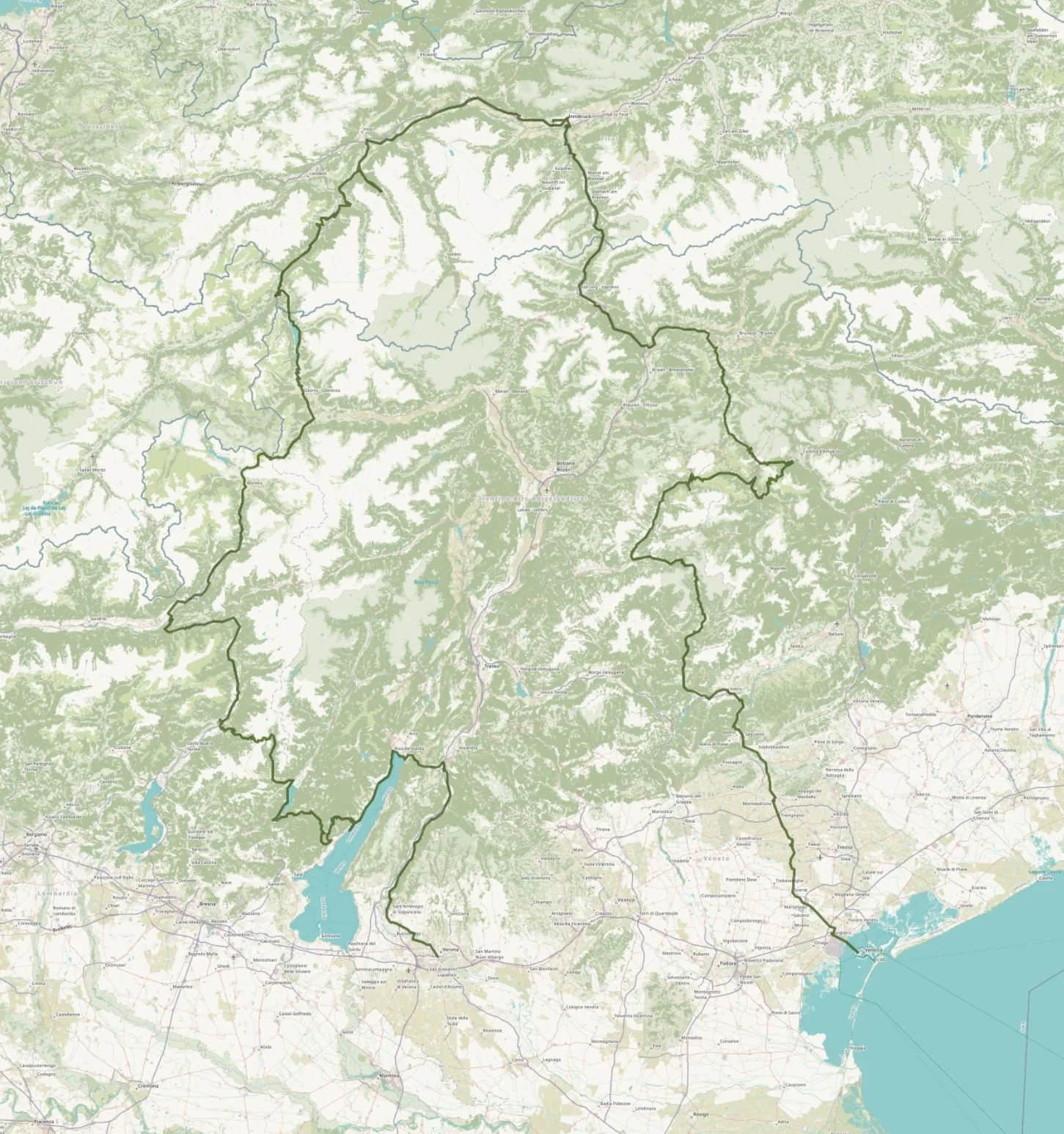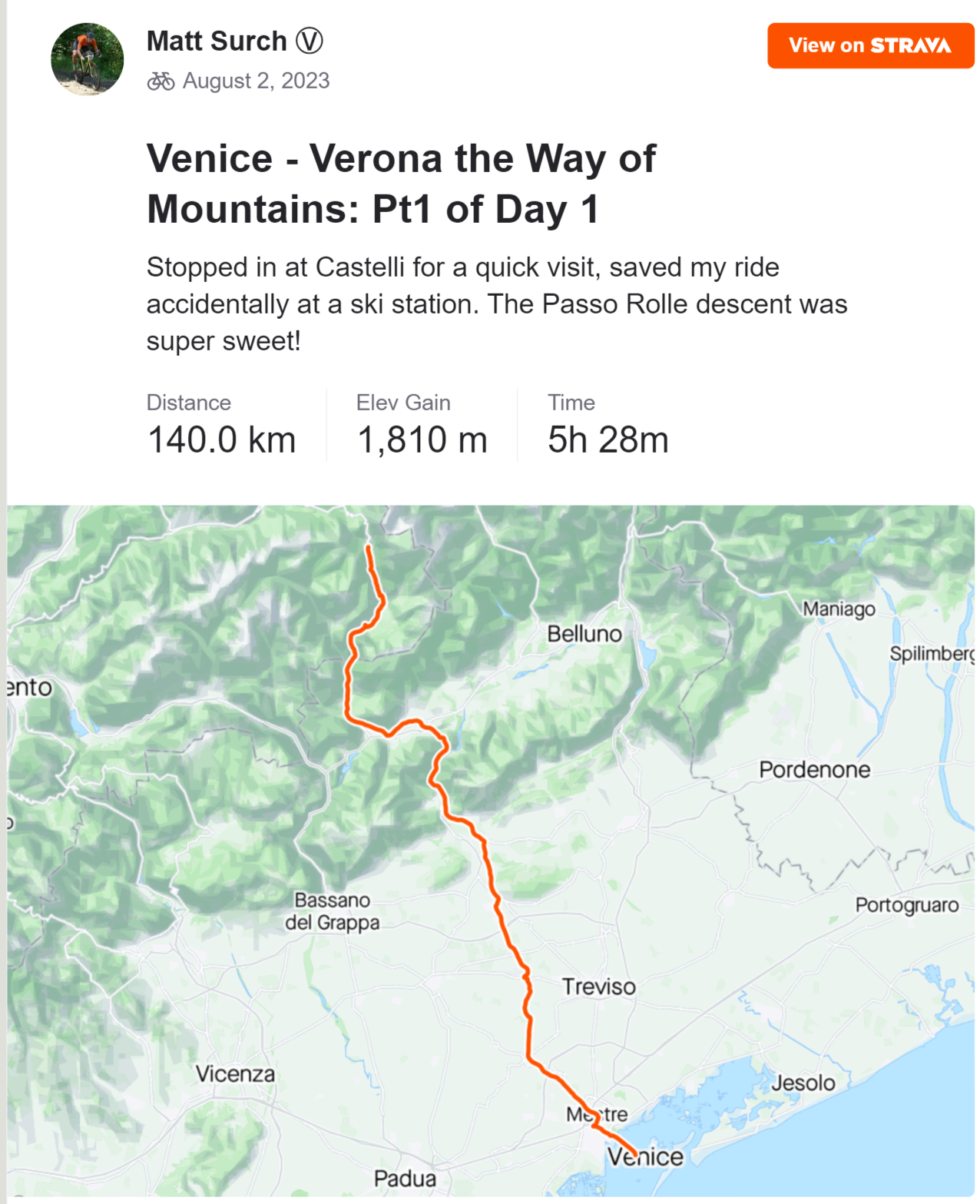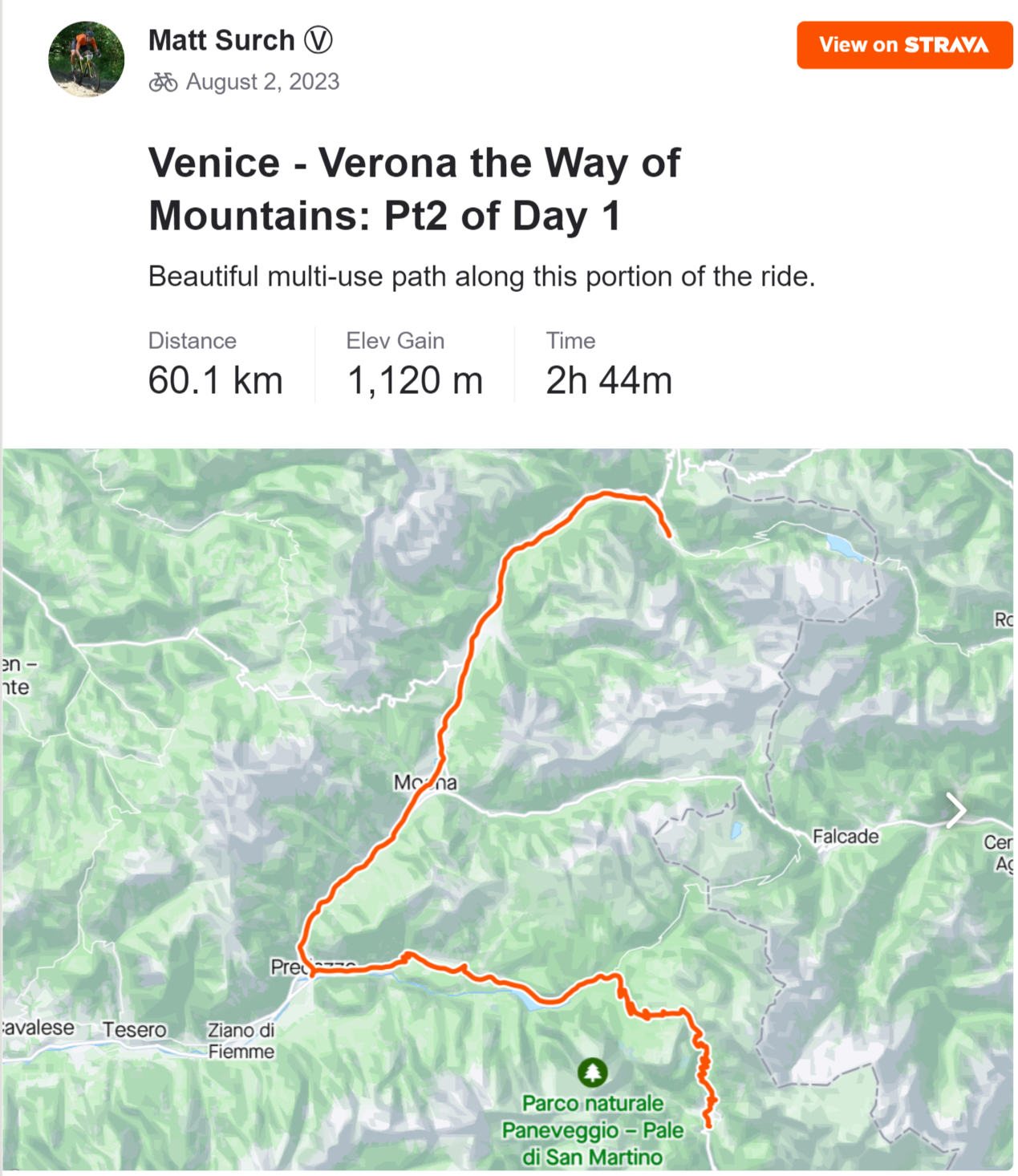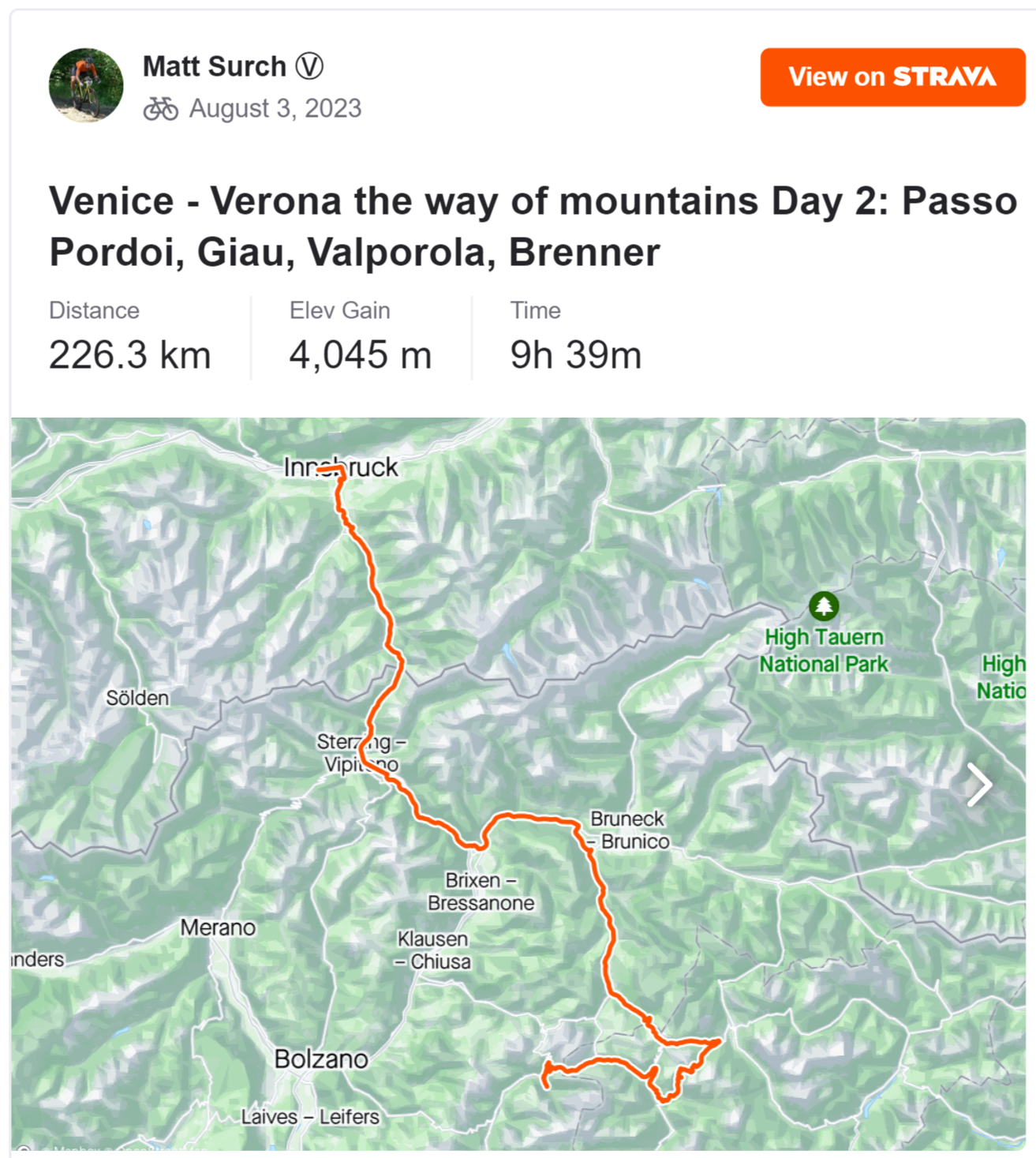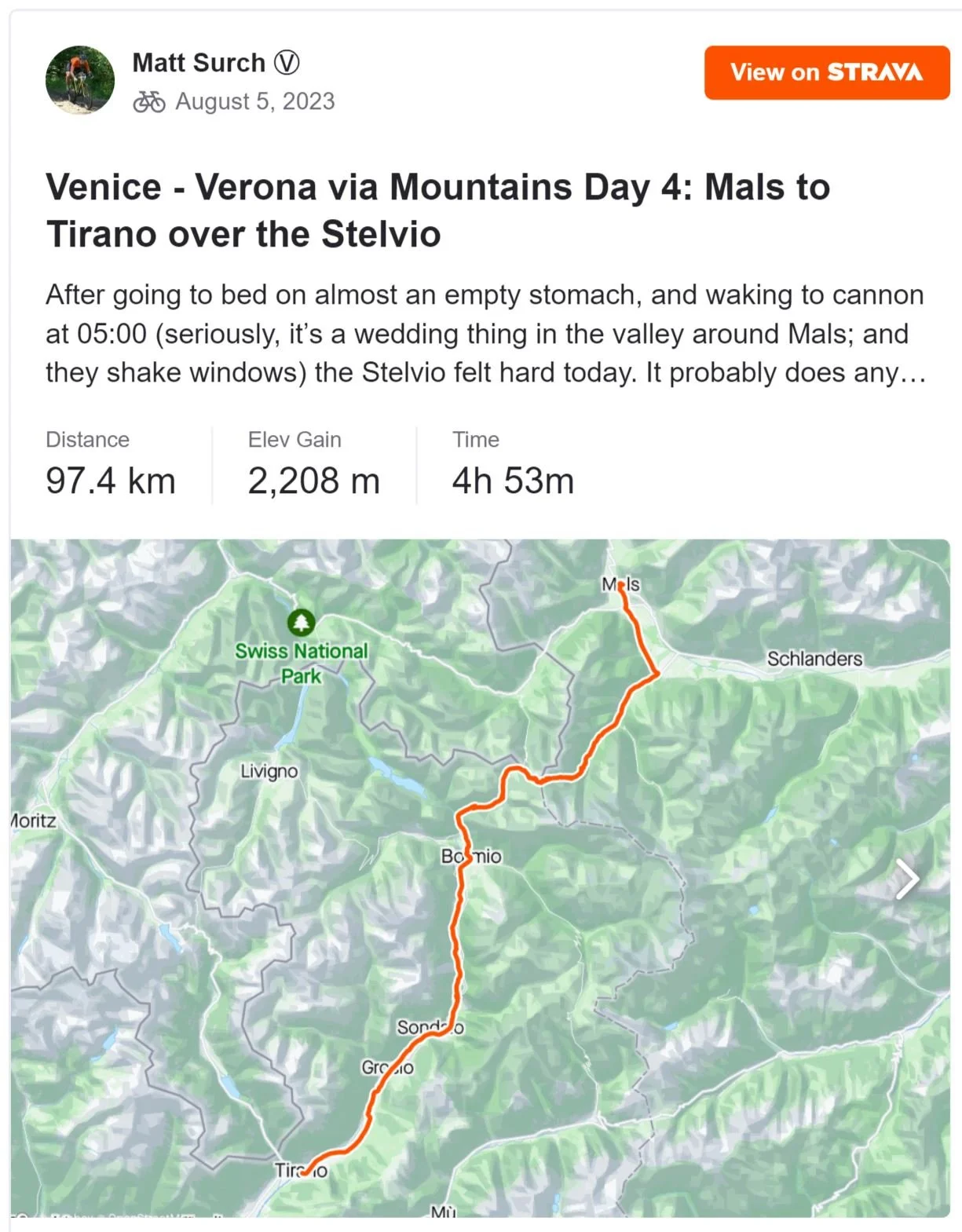Venice - Verona by Way of Mountains
“He willingly entered the cage, but now he regarded the lock like a thief contemplating all the ways he could break it.”
― Stephanie Garber, Once Upon a Broken Heart
Where’s the elevator? Ok, voila, but how come it doesn’t have a button? They don’t want people to take the elevator down, just up? That’s weird. There must be stairs.
I don’t find stairs, but there’s a door that opens to external stairs. Ah, I’ll just use these.
Encaged, I descend two stories of metal stairs along the side of my auberge, only to find the door at the bottom chained and padlocked. The inn’s doors have no handles on the outside. Oh wow. I’ve just locked myself into jail. How am I going to get out of here and get food before the store across the road closes?!
Fortunately, after a few minutes of faffing with my phone to see if I can call the front desk, a staff member enters view inside, and I’m able to get his attention. His chuckle suggests I’m not the first to do this. Allez, across to the store I go, time to eat!
Preamble
This isn’t a story of phenomenal feats of exploration or athleticism. I’m not a hero, I didn’t accomplish anything a lot of other bike riders couldn’t do, and I’m not unique.
This is a story about articulating inspiration, feeding my passion for cycling and exploration, working through uncertainty, and equilibrium.
With two prior multi-day rides in Europe under my belt - one of them solo - and at least two hundred hours spent riding in European mountains, I knew that lots of folks with a lot less cycling experience ride solo tours every year. I’ve seen them. ‘Trans-Alps’ sounds and looks colossal from a chair in North America, but the thing is, it’s hard to grasp the scale of the Alps from a map. In Canada, we’re used to our cities being 2, 4, 6, 8, 20, 40 hours apart. Our country is massive; European countries are not. What feels monumental to the uninitiated is within grasp for many. The riding is sort of the ‘easy part’; it’s figuring out where to go and how much to take on each day, lacking local knowledge, that poses specific challenges.
Inspired by folks on their dad’s touring bike trekking the Alps, I framed up my tour with a few specific goals in mind.
1) Spend the right number of days touring, while my family did their thing; don’t be away from family long enough to feel its too long
2) Enjoy each day on the bike (Type 1 fun)
3) Share and inspire others
The first goal might not apply to you, and I knew the way the riding unfolded would influence how I felt about being separated from my family. I’d have to guess at the ‘right’ number of days and see.
Type 1 fun, in this context, was about explicitly not setting out to prove anything to myself or others about my riding ability. My intent wasn’t to do a ‘challenge ride’ that I’d have to draw on ego to pull off. I wanted to learn, by doing, how to frame up days that would feel balanced, combining saddle time with beautiful scenery, stopping in for food at compelling spots, and enjoying the locales I landed at each night. It’s a complicated equation, not least because weather is so influential, and chance will do what chance does. The main thing was that I didn’t want to feel like I was on a mission all day every day. This orientation informed how I built my daily routes, and the ceiling for distance and elevation gain I considered ‘about right’.
The sharing and inspiring part would hopefully take care of itself, assuming my routing worked out, and the mountains did their thing: inspire awe. The beauty of sharing stories about our experiences - honestly and authentically - is that we can do something positive with bad experiences. We can help others learn from our mistakes and misfortunes.
Planning from afar
There’s only so much you can do from your computer on another continent. In the weeks leading into my family’s departure for Venice at the end of July, 2023, I framed up a plan for a solo tour from Venice to Florence. Venice’s proximity to the foothills of the Dolomites made the prospect of creating a multi-day route through the mountains incredibly enticing. My family would head to Bologna, then Florence, and I’d skip to the latter destination to rendezvous.
I wanted to do somewhere between 4-7 days for the tour, and set Innsbruck as a waypoint to help me figure out how many days would make sense to span. Not knowing the Dolomites at all, nor the Alps around the Austrian and Swiss borders (spanning the South and North Tyrol region), I was flying by the seat of my pants in setting Innsbruck as my northmost waypoint, more or less on the far side of the Alps. From the topography I reasoned it would be really beautiful around Innsbruck, but less so if I continued further north. With this waypoint set, and the possibility of popping into Castelli HQ to visit Steve Smith on my first day, I plotted a number of key climbs friends recommended, and connected dots relying on Strava’s heatmapping and road surface info.
I used Booking.com to locate and book the cheapest accommodations I could, aiming for under $120 CAN per night. Availabilities at reasonable prices determined my end points for each day, then I created one or more route option/s to connect them up. The only specific locale I made work was Innsbruck, while the rest were somewhat ‘random’, based on accommodation availabilities. For me, these were just words on a map; I had not much of a clue what to expect.
Accommodations booked, I’d set my cage. As we know from The Walking Dead, cages restrain from both sides; they prevent egress and ingress. So the sense of bound uncertainty my destinations and routes provided was coupled with the palpable need to conform to the plan, to make it happen each day. Therein lies the fundamental challenge of riding point-to-point routes for fun: balancing the sense of urgency and must-do against enjoyment of the ride as it unfolds. In other words, what I was hoping for, not knowing how a single metre of road would actually ride, was challenging and enjoyable days on the bike, spent in a positive state of mind. I was explicitly not setting out to prove to myself or anyone else that I could ride X distance at Y speed, or pull off some sort of feat. I was confident in my physical ability to do the miles well; physical performance wasn’t my focus. I wanted to ride through spectacular places and enjoy the sights. With this intention as my orientation, I built routes up to about 230km, and as departure neared, started paying close attention to the weather forecast.
Oh. Shit. That’s a lot of rain.
Days of rain, and at least one with more than 20mm forecast, with highs in the low 20s Celsius. It’s one thing to be wet all day and wondering whether you’ll be able to start the next with anything dry, and another to take on mountain descents wet, chill on the way down, and wonder whether there will be consistent grip all the way down. Weather in the mountains can get dangerous really fast, and for folks like me who are from hilly regions, this lesson tends to be hard-earned.
I built contingency routes for rain days, dropping elevation and distance down to mid and minimal options that would connect me to my destination. And I turned my attention to figuring out how I’d pack all my kit.
Fingers crossed, go time. If I got into a touch spot along the way, I’d drop a booking if necessary, and stay somewhere else. As long as I had a working phone, I’d be able to work it Better find a SIM card once I land.
The cage awaited, door agape.
Day 1: Venice → Canazei

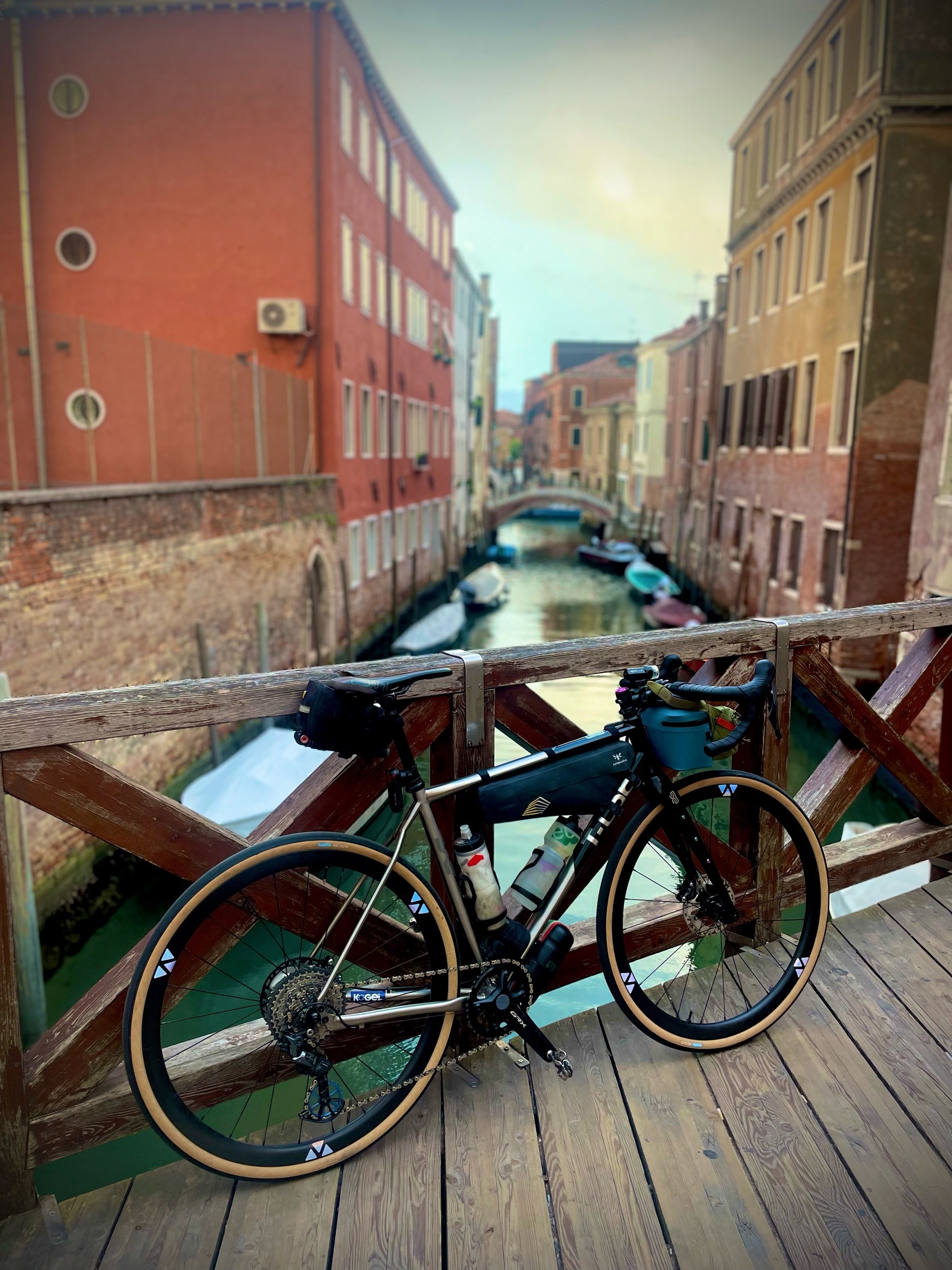
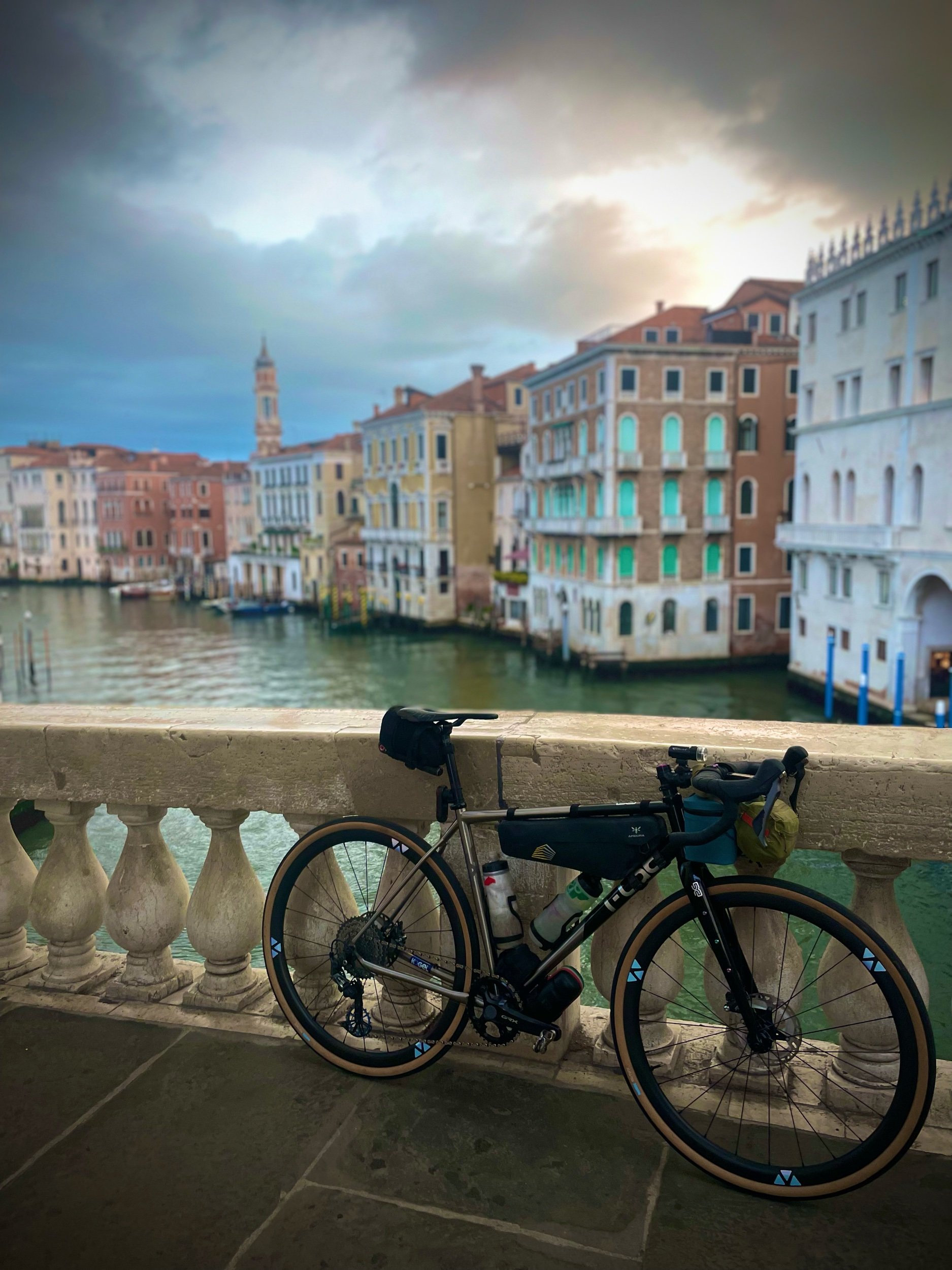


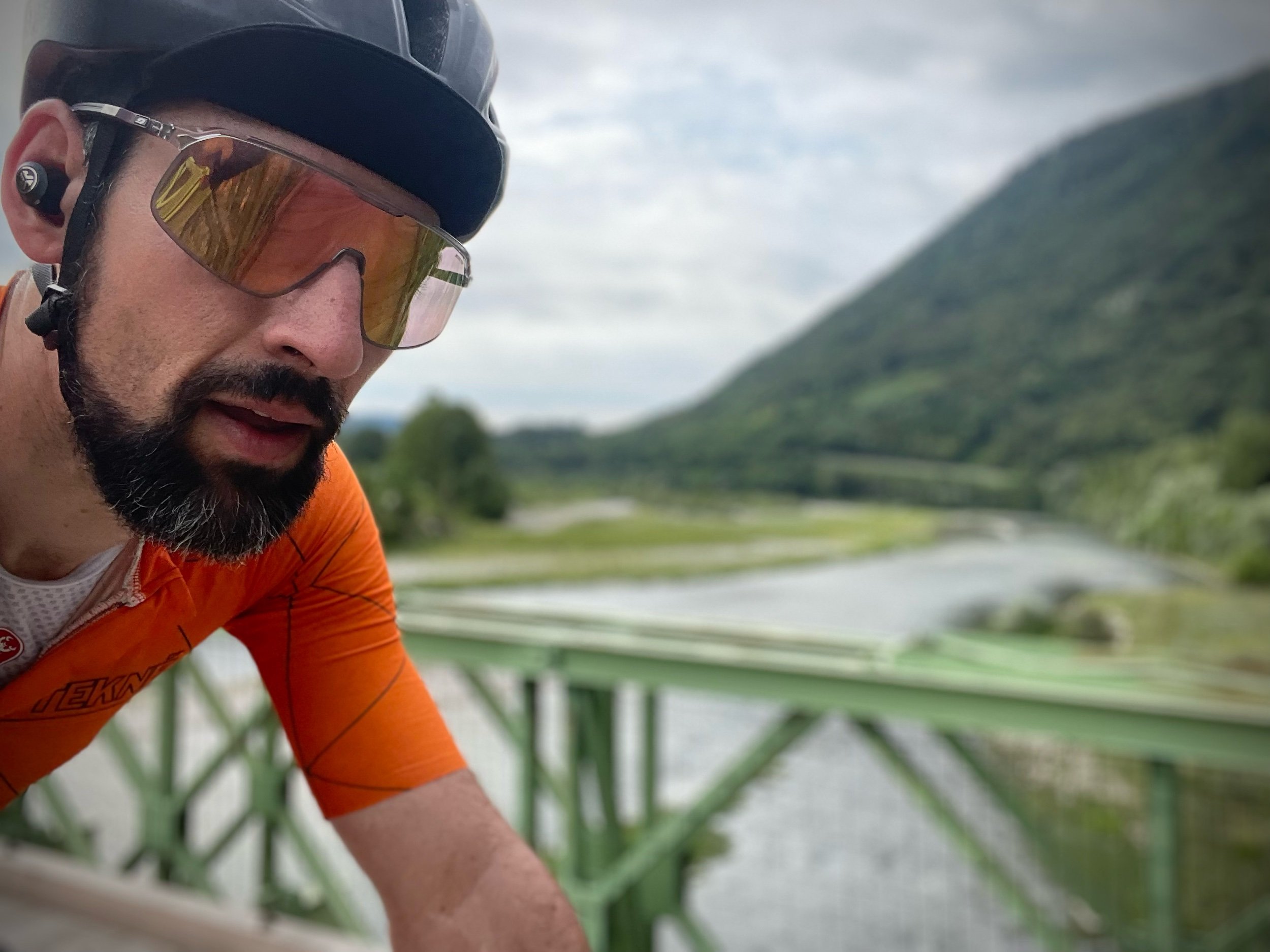


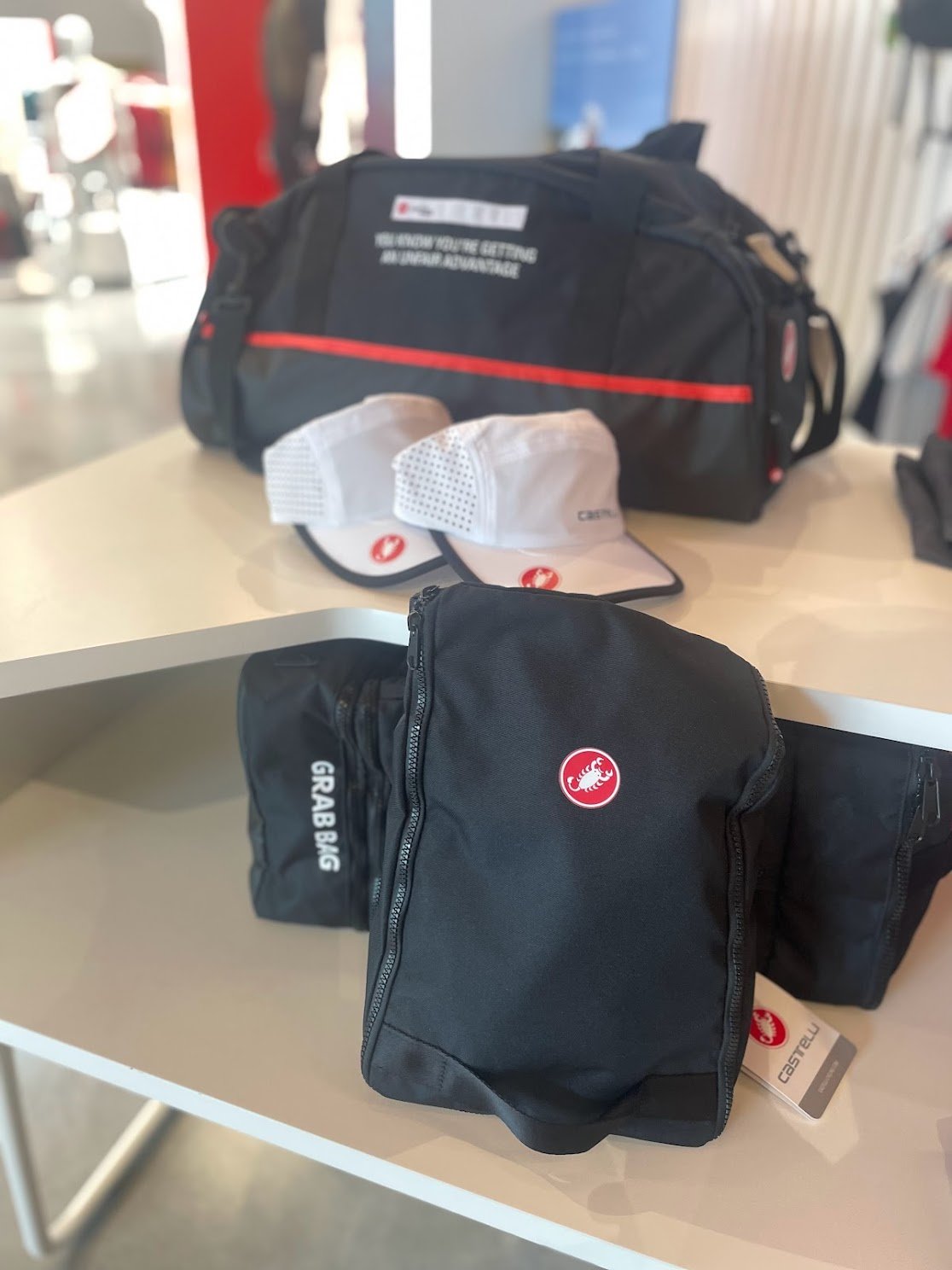




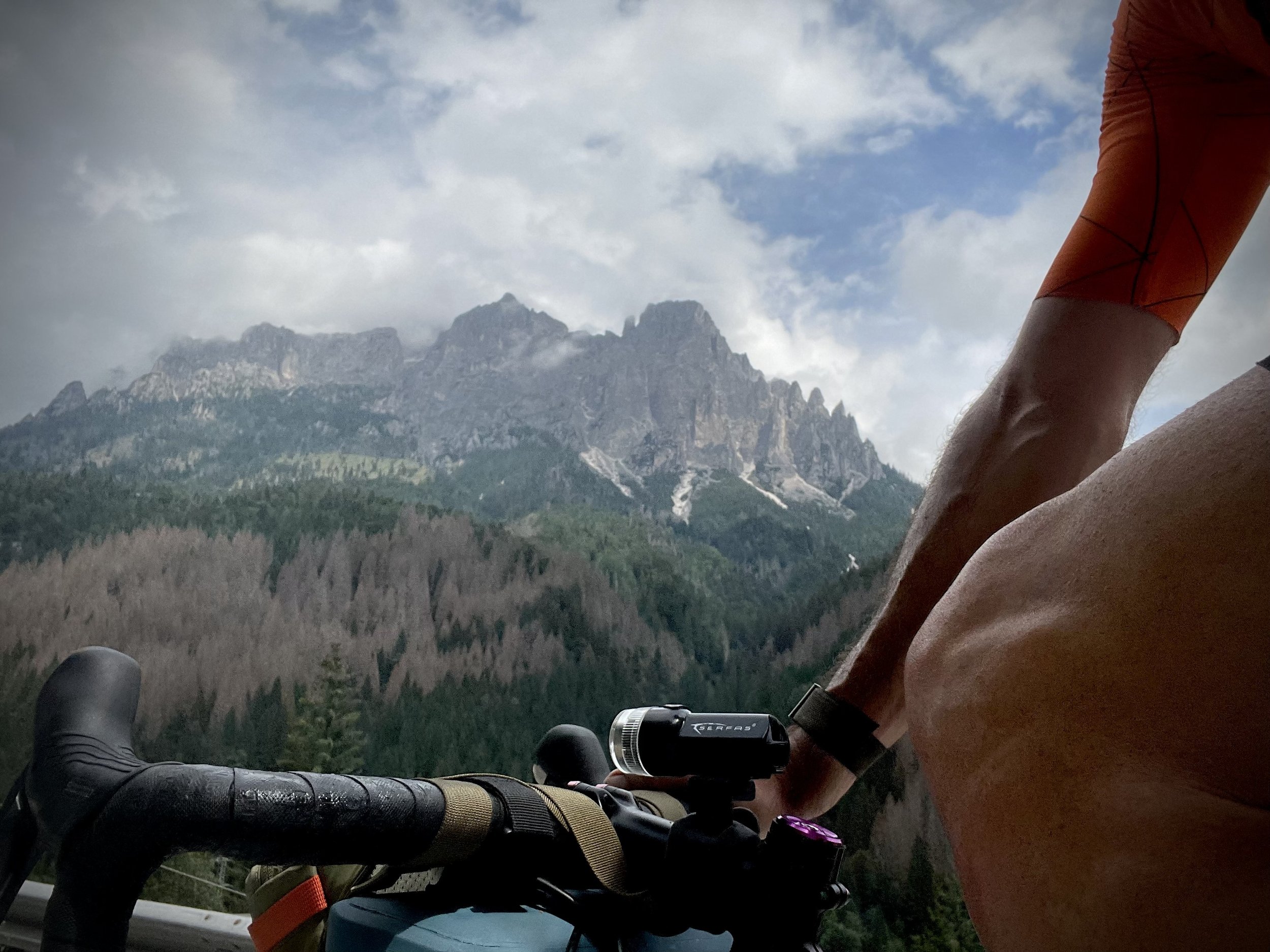



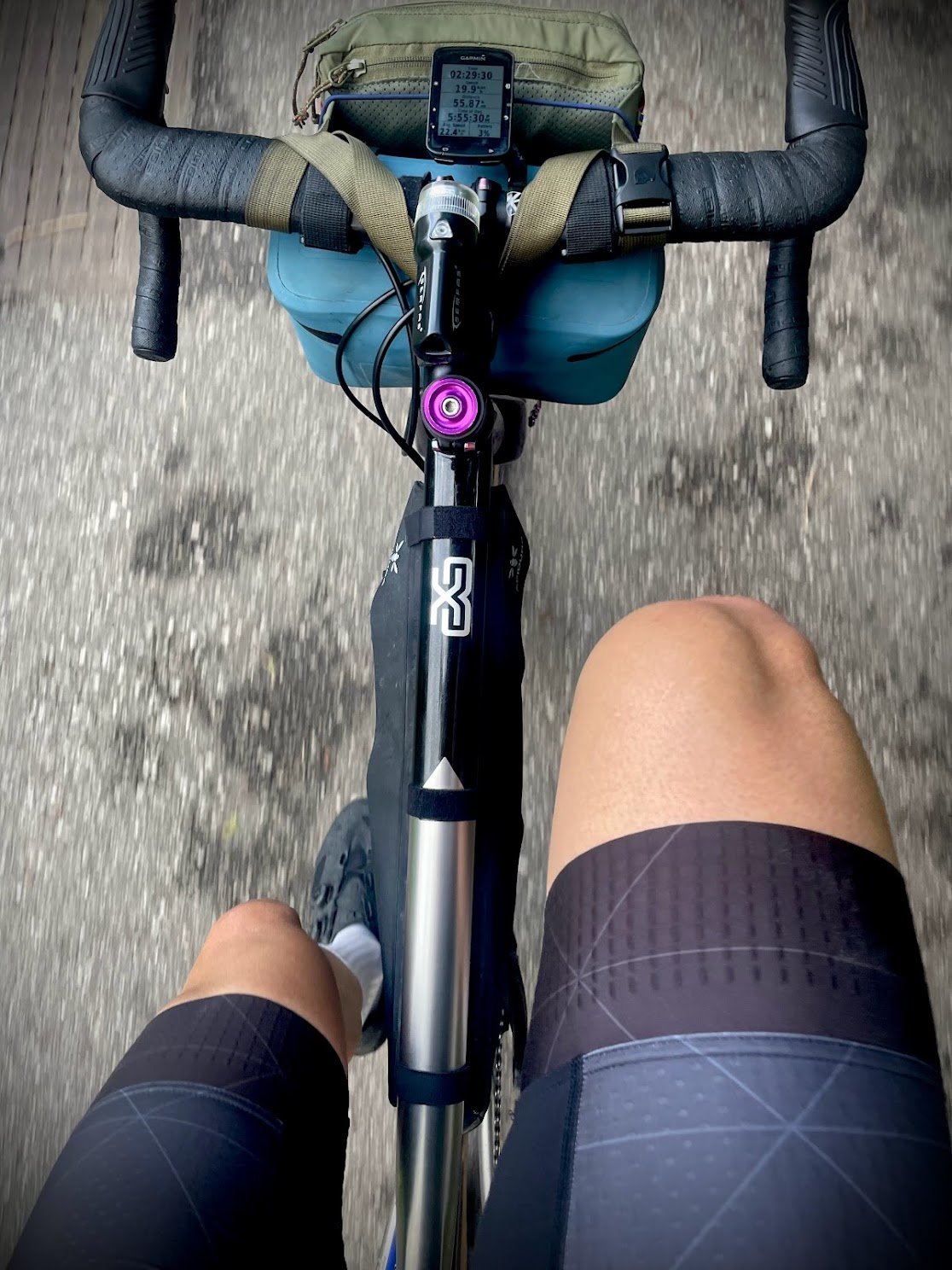


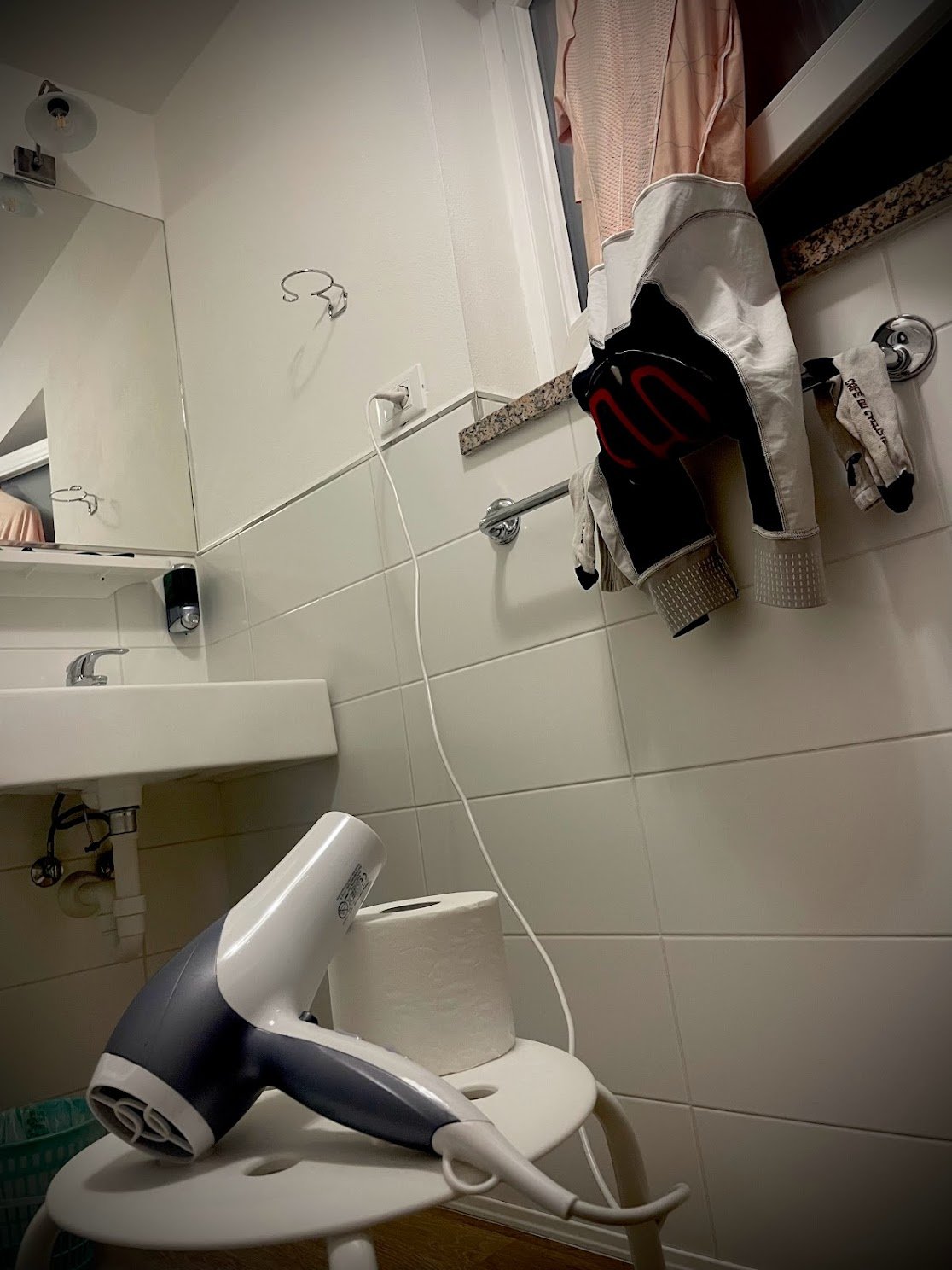
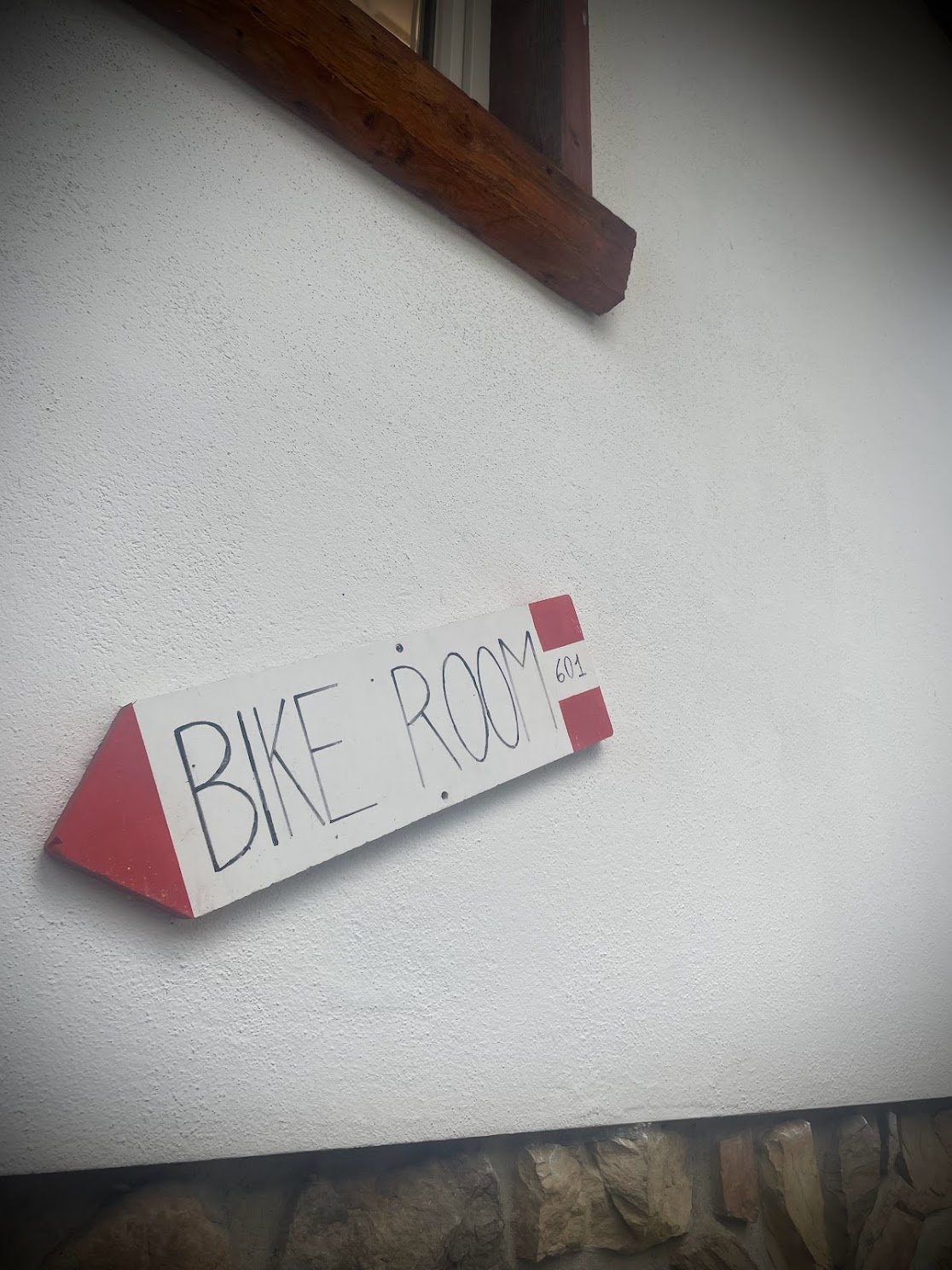

It’s 06:30 in Venice, and I’ve just closed the cage’s door behind me. My family is dead asleep, I don’t have a key to the apartment, and I have somewhere to be.
Day 1’s plan introduces a sense of urgency I’m not physically optimized for, to understate the situation. I rode 230km to Montreal, slept, walked around a bit, took a cab to the airport with my family, then sat for the balance of the next 30 hours. The red-eye flight didn’t offer much of what I’d call ‘sleep’, but I rested. Then it was three hours of bike building and prep, to bed on a couch at 11:30 PM, up at 05:45. While crossing time zones confuses Whoop’s algorithm, my red recovery score was inevitable. Whatever, I felt ok as I walked my bike through the maze that is ‘tourist Venice’, seeking coffee and a bit of food. My lower back hurt - shocking - but wasn’t enough to distract me from the mission: Castelli by 10:00.
I’d planned to arrive at Castelli HQ in Fonzaso to slide into Steve Smith’s opening in a busy schedule as he prepared to set off for SUPERMEGA Worlds in Glascow. Making my way across the water from Venice to the mainland - which I was second-guessing the day prior: “Hold on, can I actually definitely ride across that bridge?” - goes fine, bikes are indeed provided space apart from cars. The time-suck is making my way through Mestre on the mainland. Wow, talk about difficult infrastructure to get through by bike, and the train I wait 10 minutes to pass doesn’t help. But it’s sunny, a huge relief! I truck to Fonzaso, tweaking my routing on the fly to spare whatever time I can . Why not start out vacation with a 100km uphill time-trial? YOLO, right?
Making it to Castelli’s storefront and cafe at 10:30 feels like a podium. Third, perhaps. The place is beautiful, showcasing Castelli, Sportful, and Karpos, the three brands that comprise Manifattura Valcismon, which was launched in 1946. I didn’t realize in advance that the store and cafe is situated at the base of the Dolomites where the riding starts to get awesome. As you ride into the mountains the views become spectacular in every direction, and an alpine feel sets in rapidly. What an amazing place to design and built innovative cycling and mountaineering kit! I highly recommend working a visit into riding and/or vacation plans in the region; it’s a win/win proposition.
After a quick coffee and snack with Steve - and not nearly enough time getting nerdy about the exciting new pieces they are developing - I’m back on the bike to knock off the second 100km leg for the day, into Canazei. Talk about photo ops; gorgeous! The contrast against how I began my day, puzzling through Venice’s alleys, couldn’t be more pronounced. Expansive, majestic, vibrant; the Dolomites were striking. This is what I’d hoped to experience.
I have a SIM card that works, so that issue is sorted. But I don’t have cash, and I think I’ll need it to pay municipal tax once I get to my destination. The day’s first lock to pick leads to the next: cash by arrival. Because what if there’s no machine there? I wind up burning time as I pass through village after village, finally succeeding at a bank that’s door is unlocked, allowing me to access its ‘bancomat’. Ok, phewf, I don’t have to worry about that anymore, I can just ride.
Canazei is hopping as I roll in, a ski town rocking summer festival vibes that have attracted quite a mass of humans. I roll through town to the inn I’ve booked, thinking about whether I’ll have to drop back down for food. Nope, I just have to escape the actual, literal cage I lock myself into; there’s a small grocery store 50m away.
Day 2: Canazei → Innsbruck
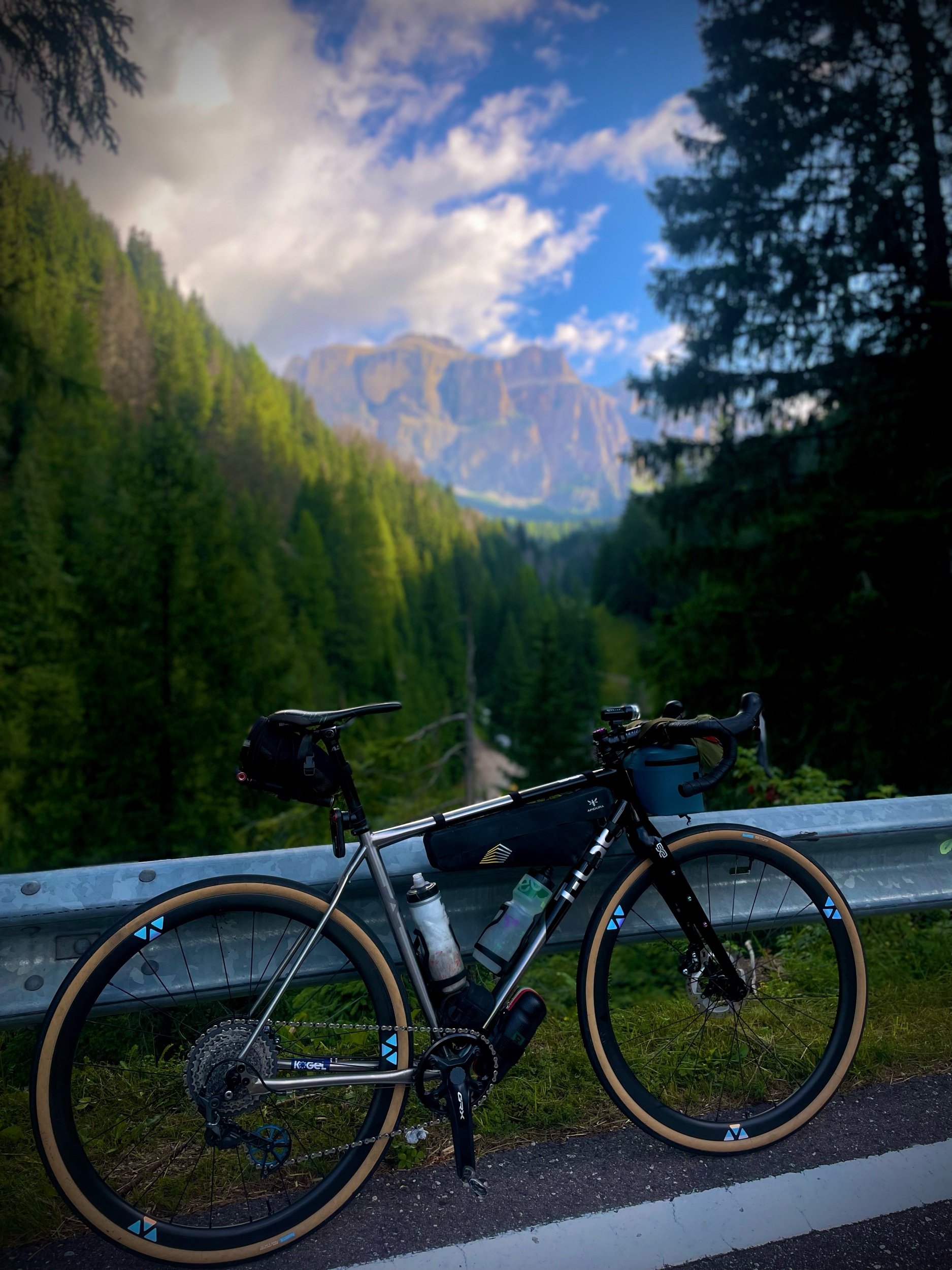


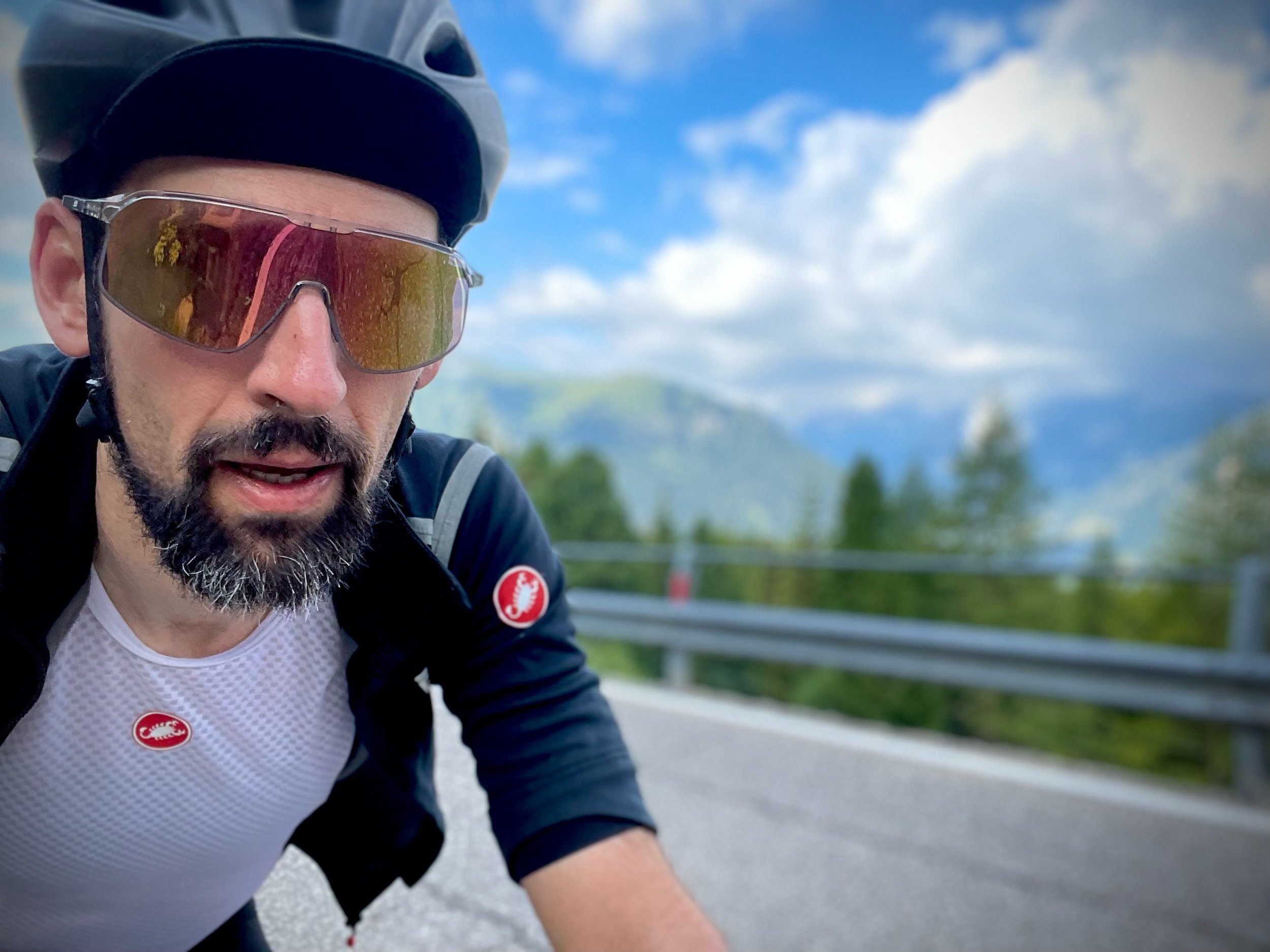

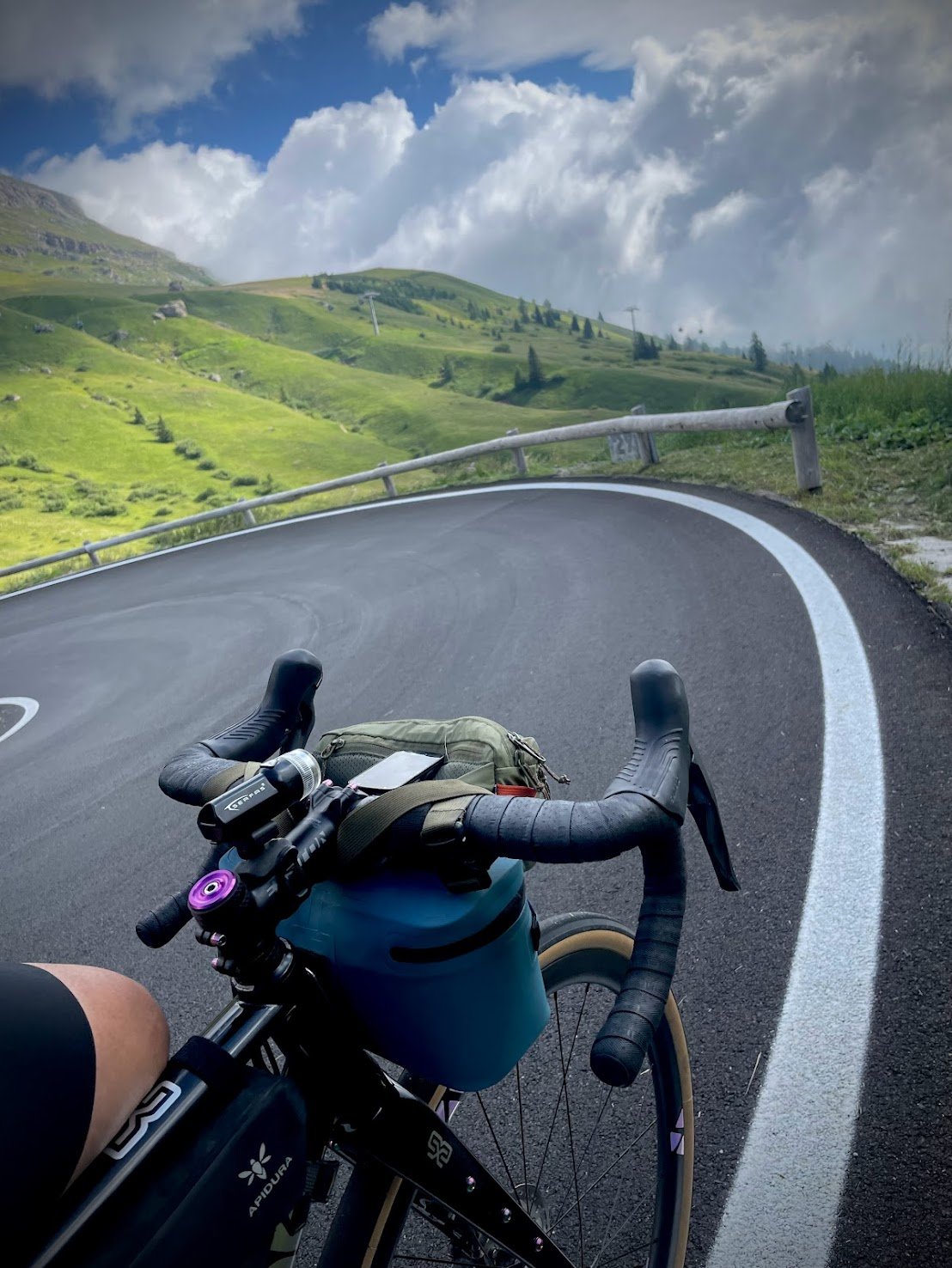
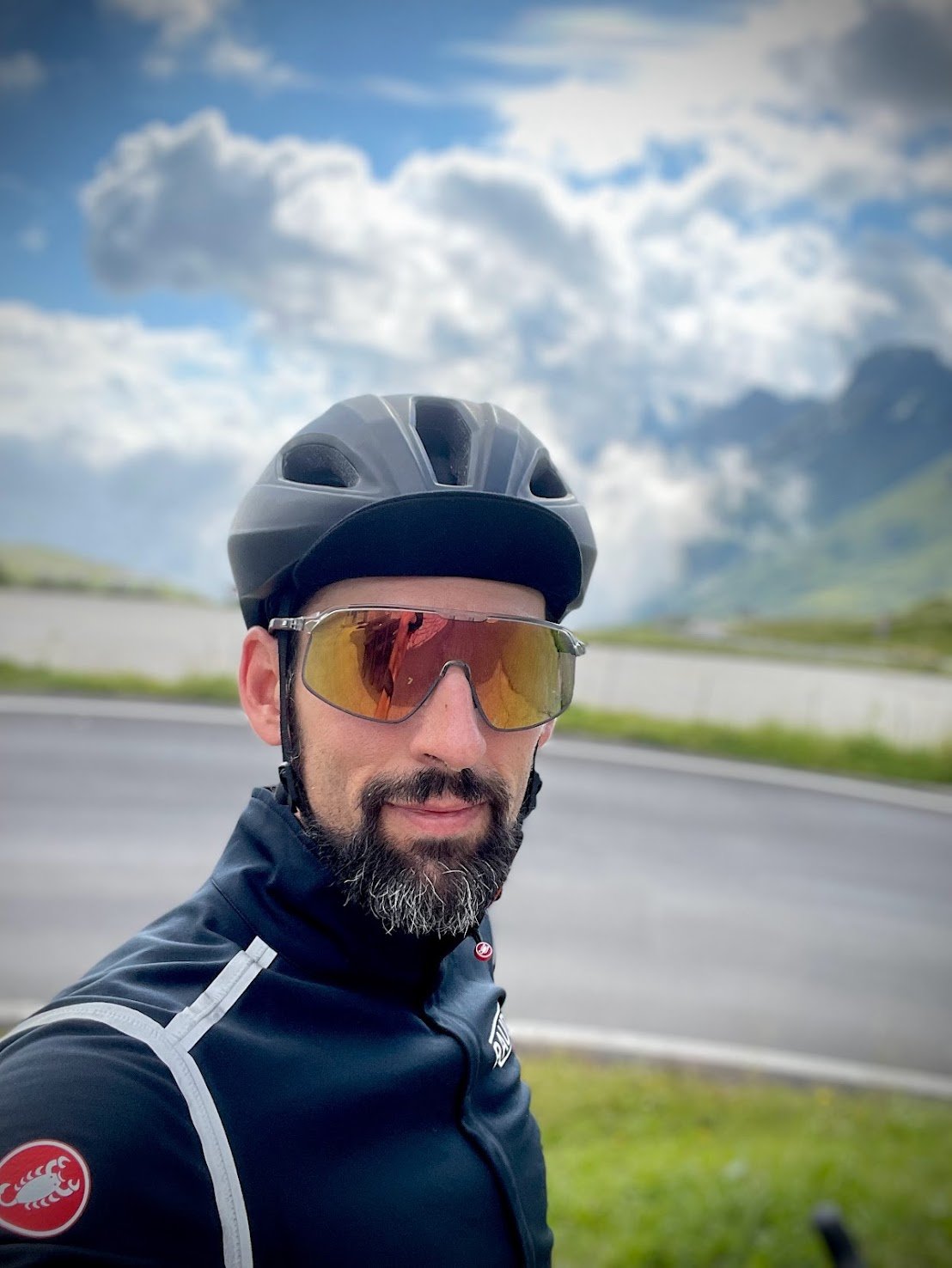
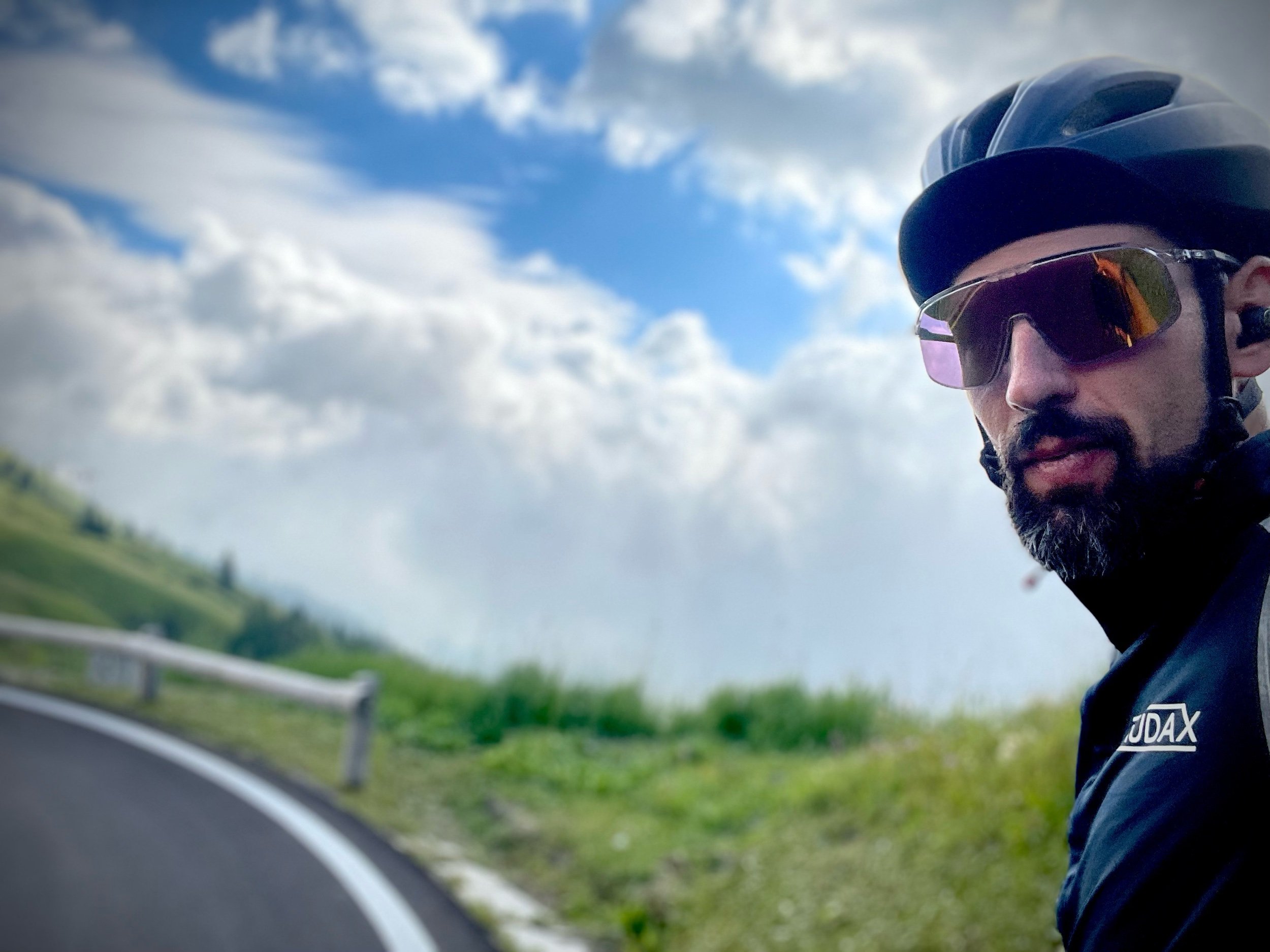
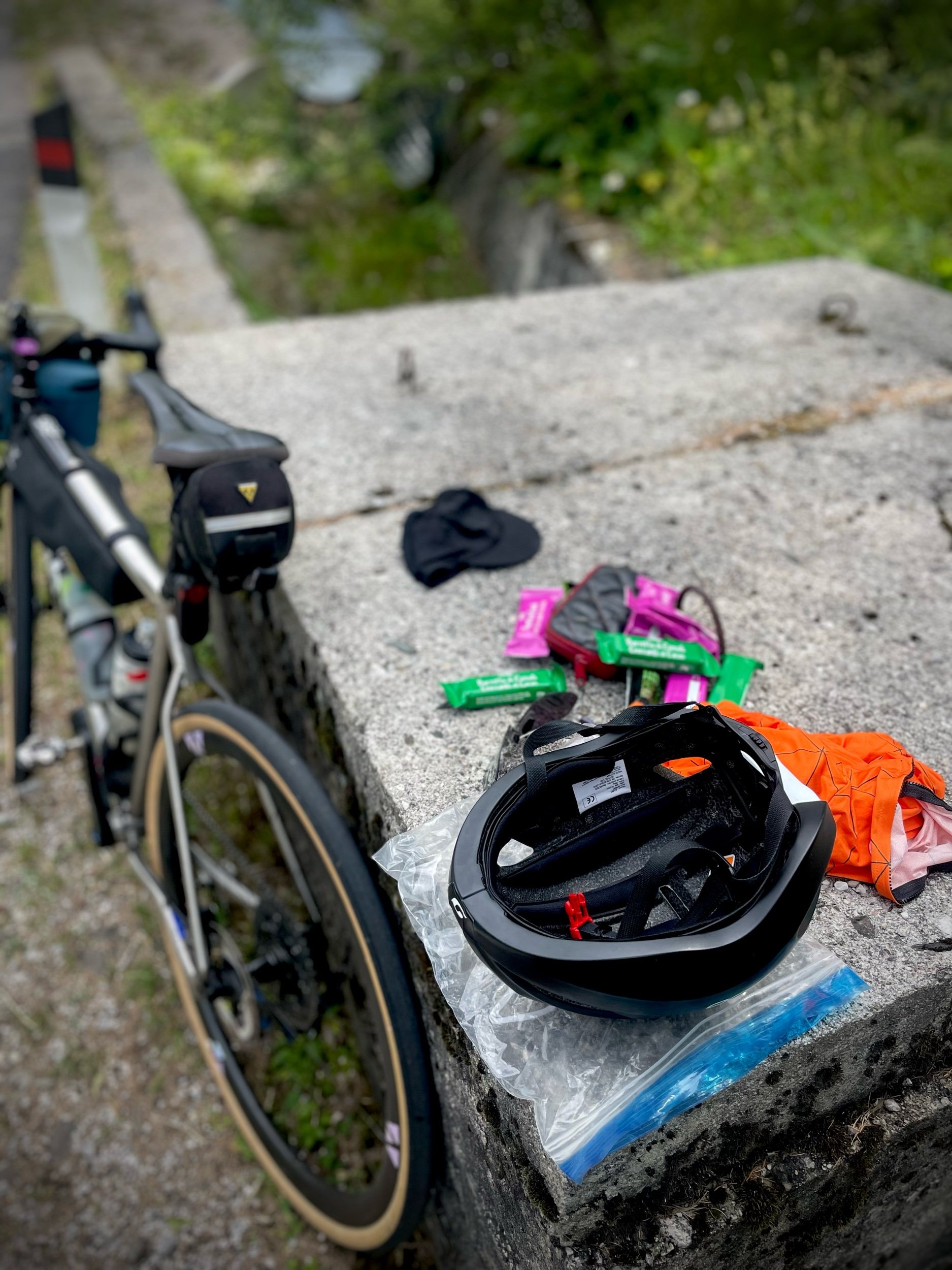
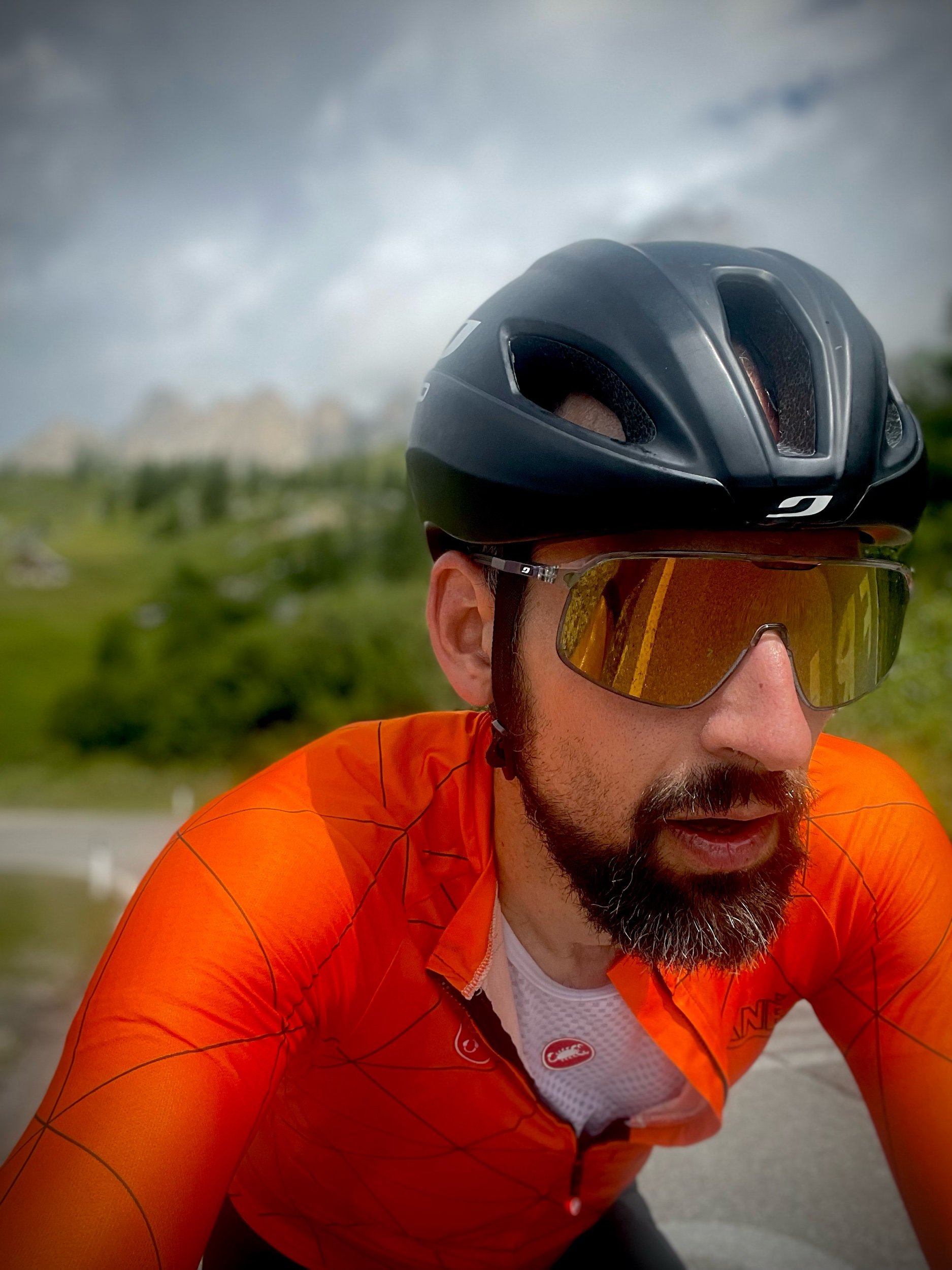


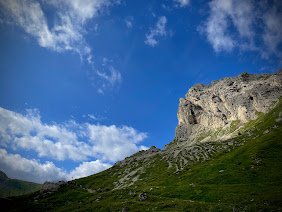
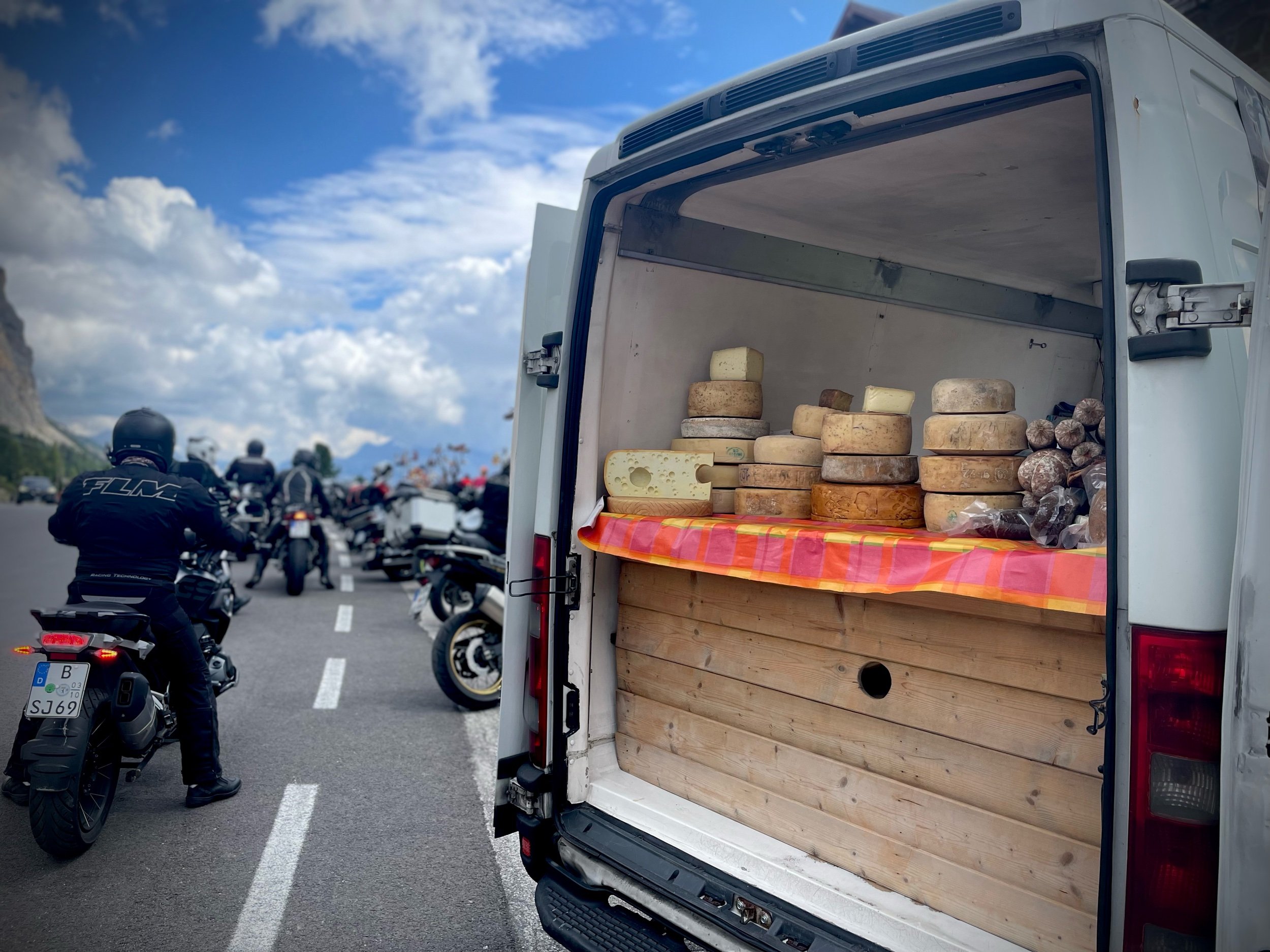



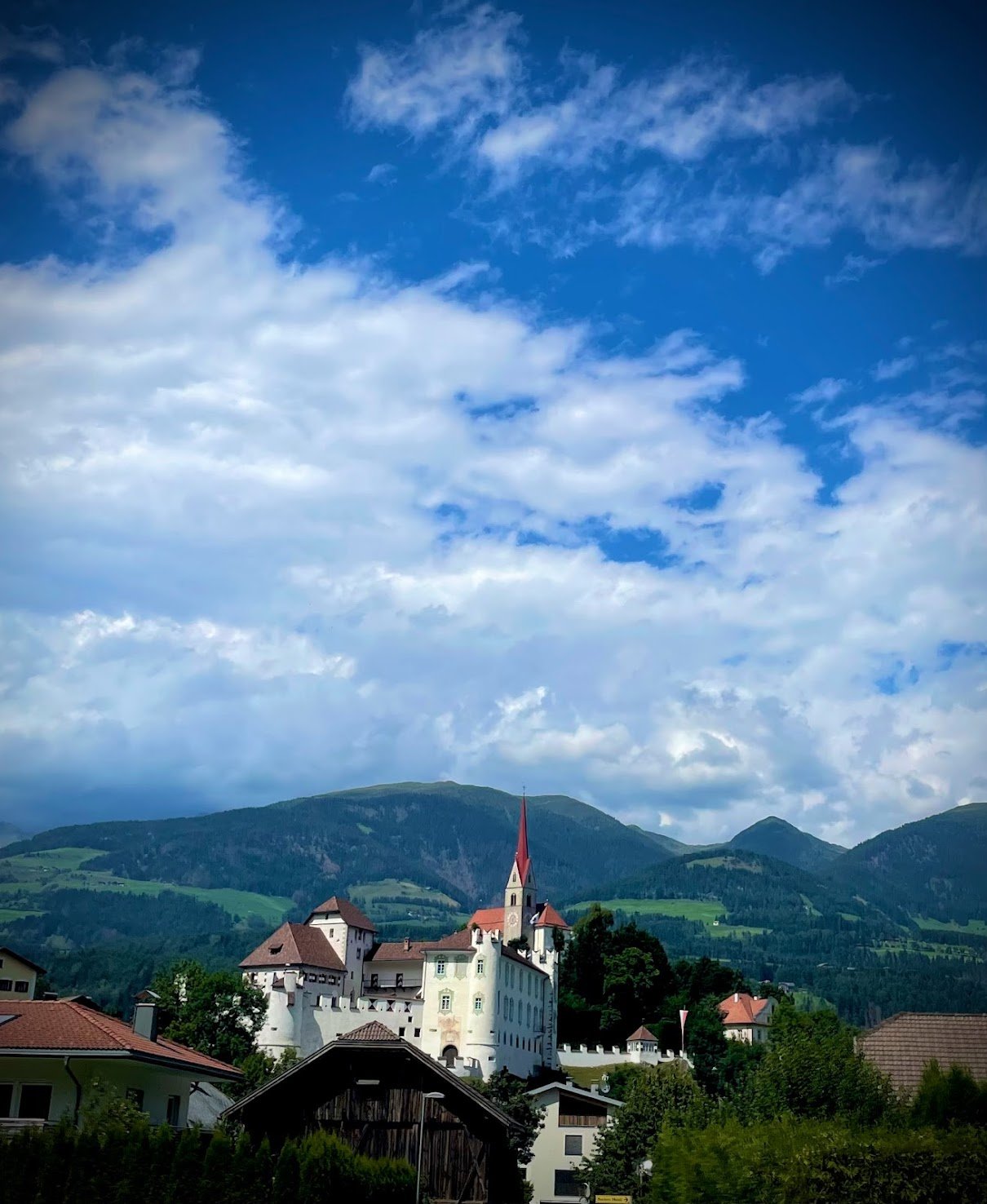
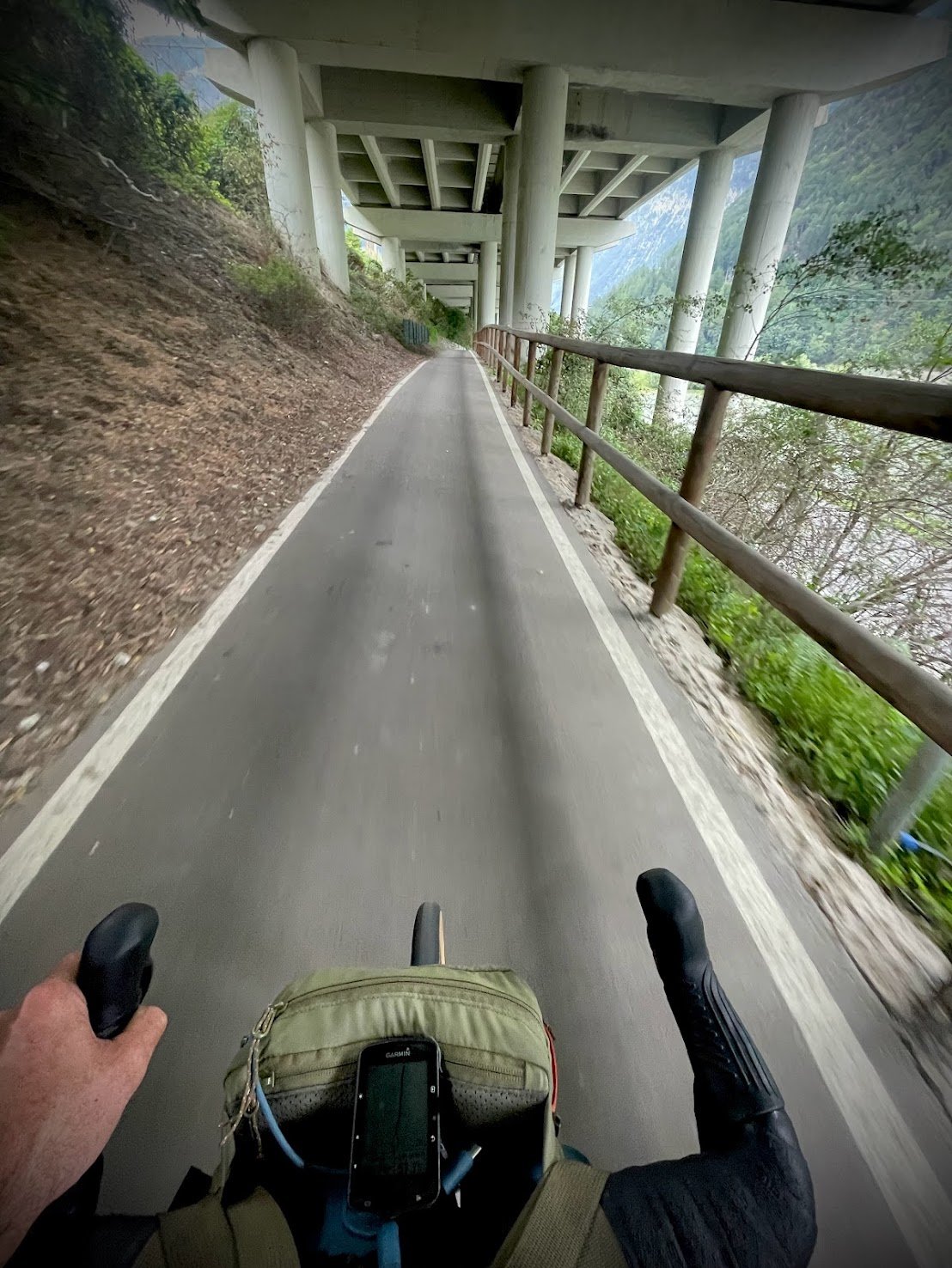
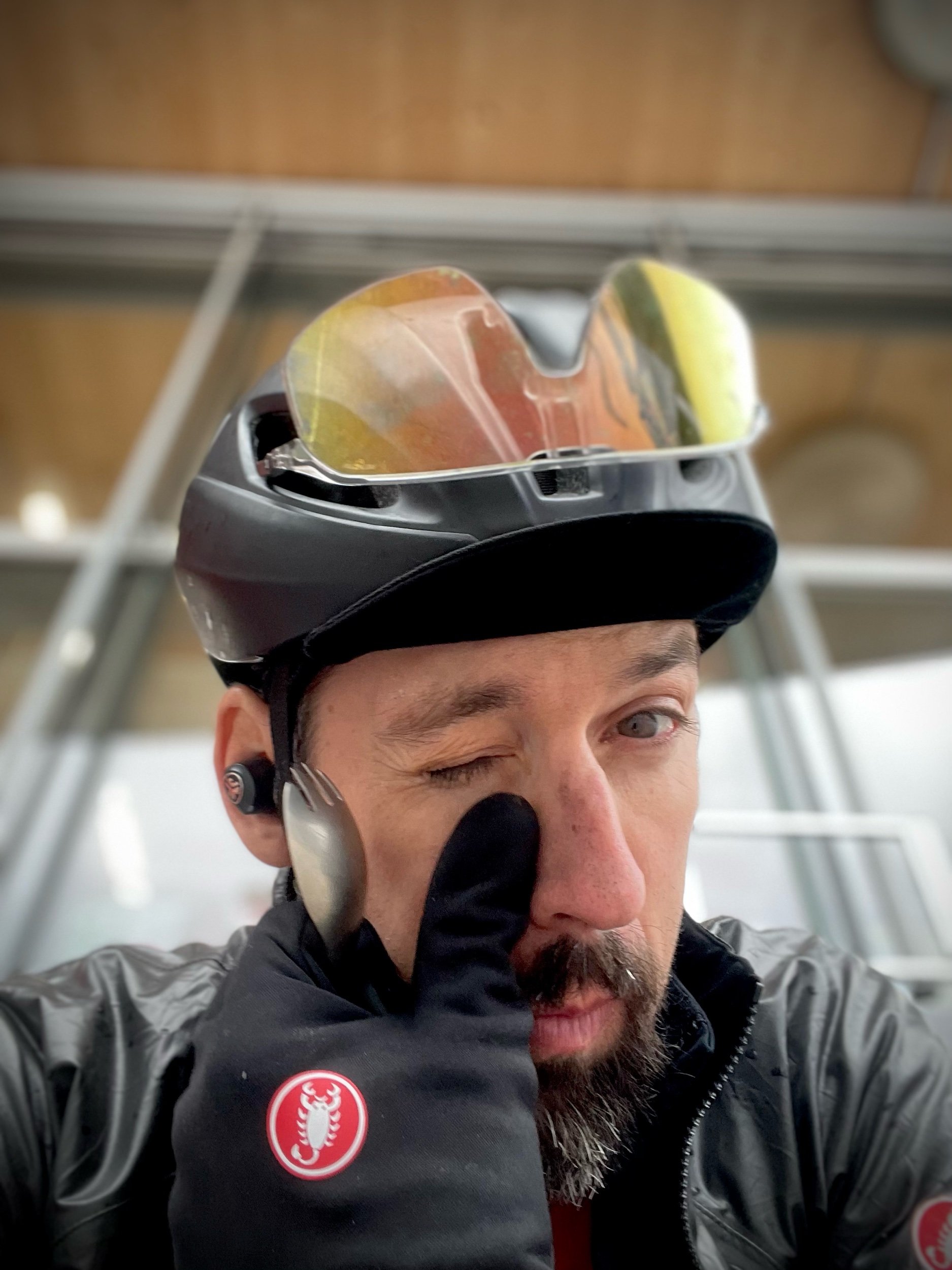
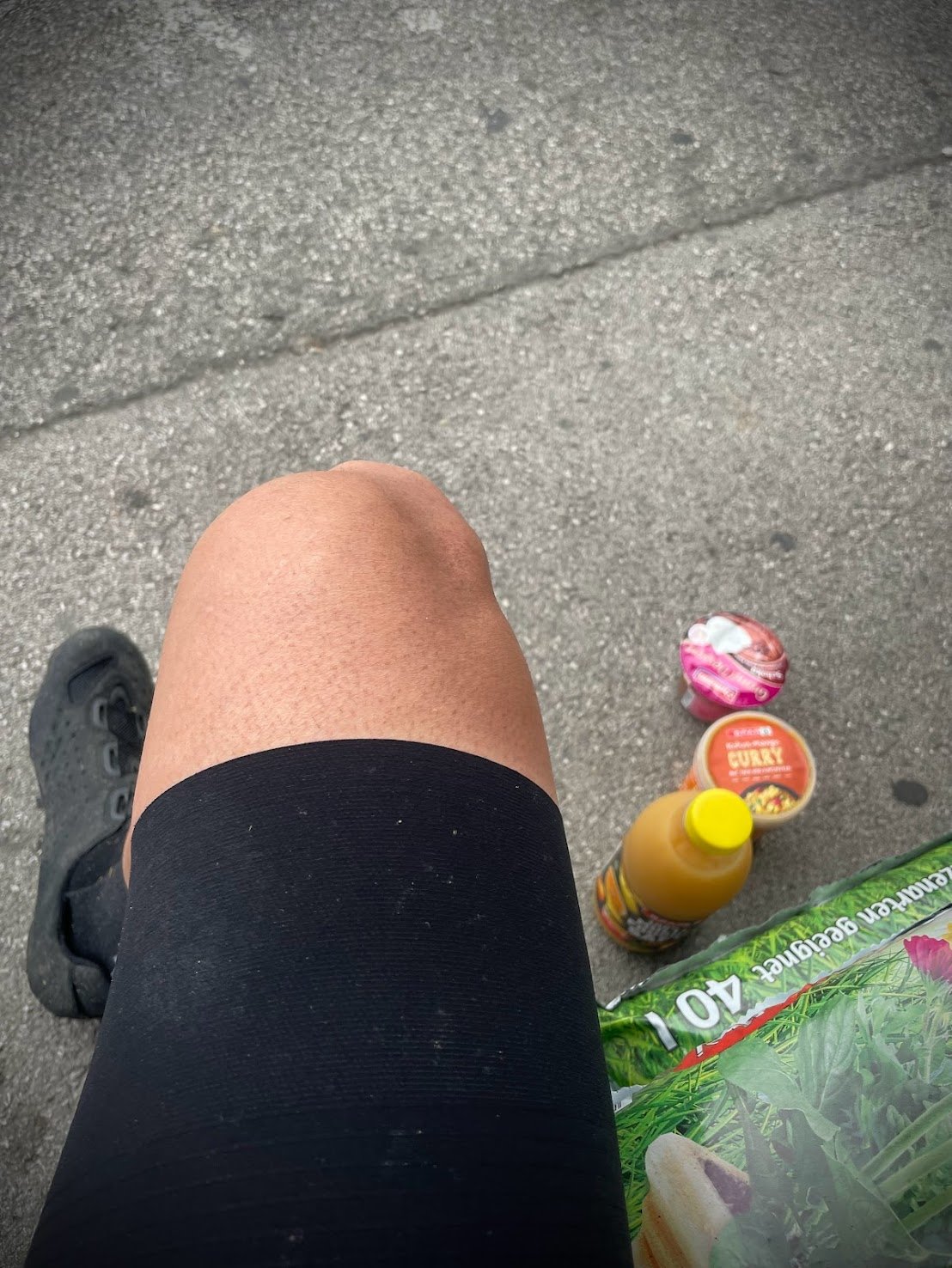
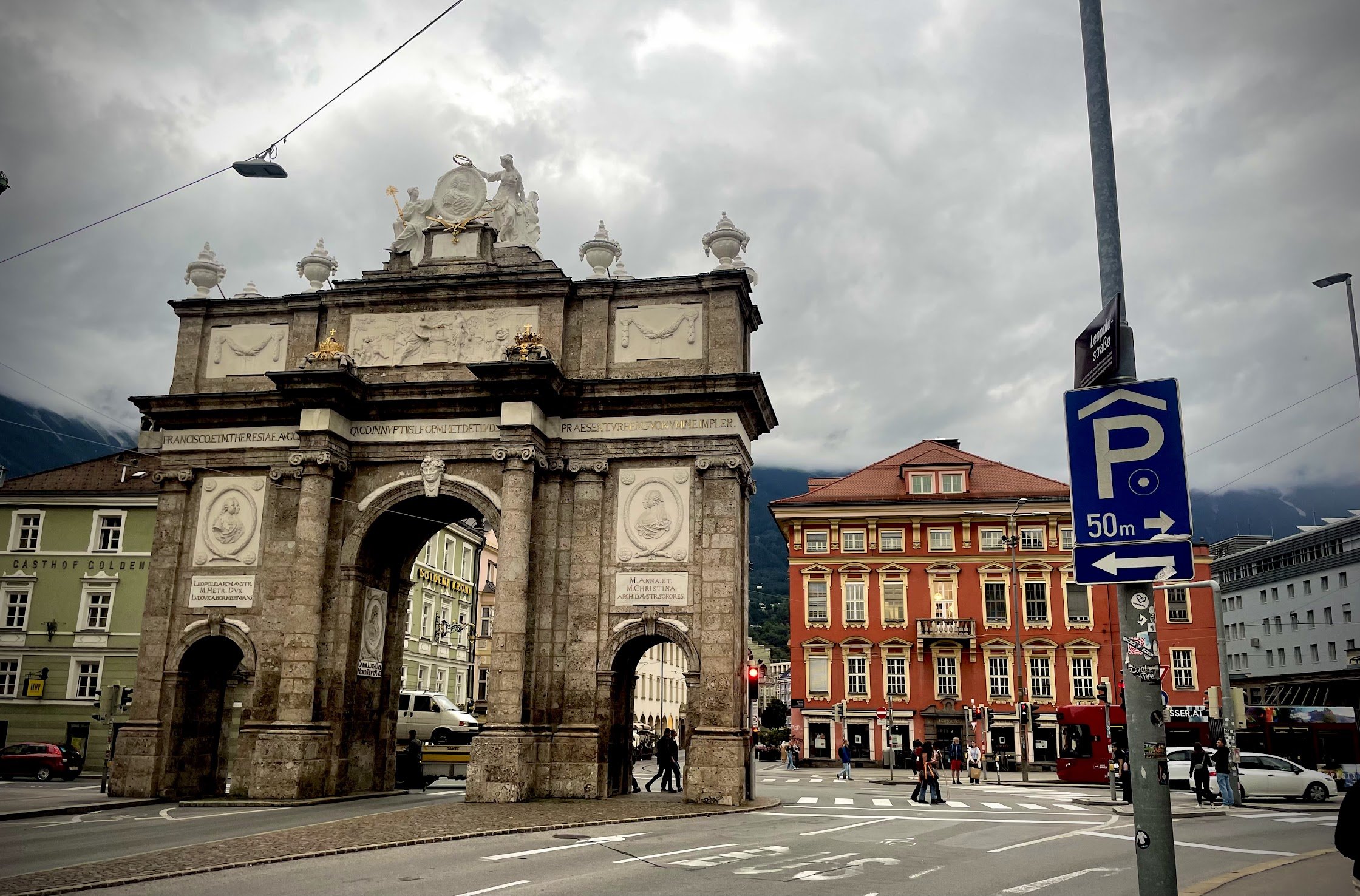
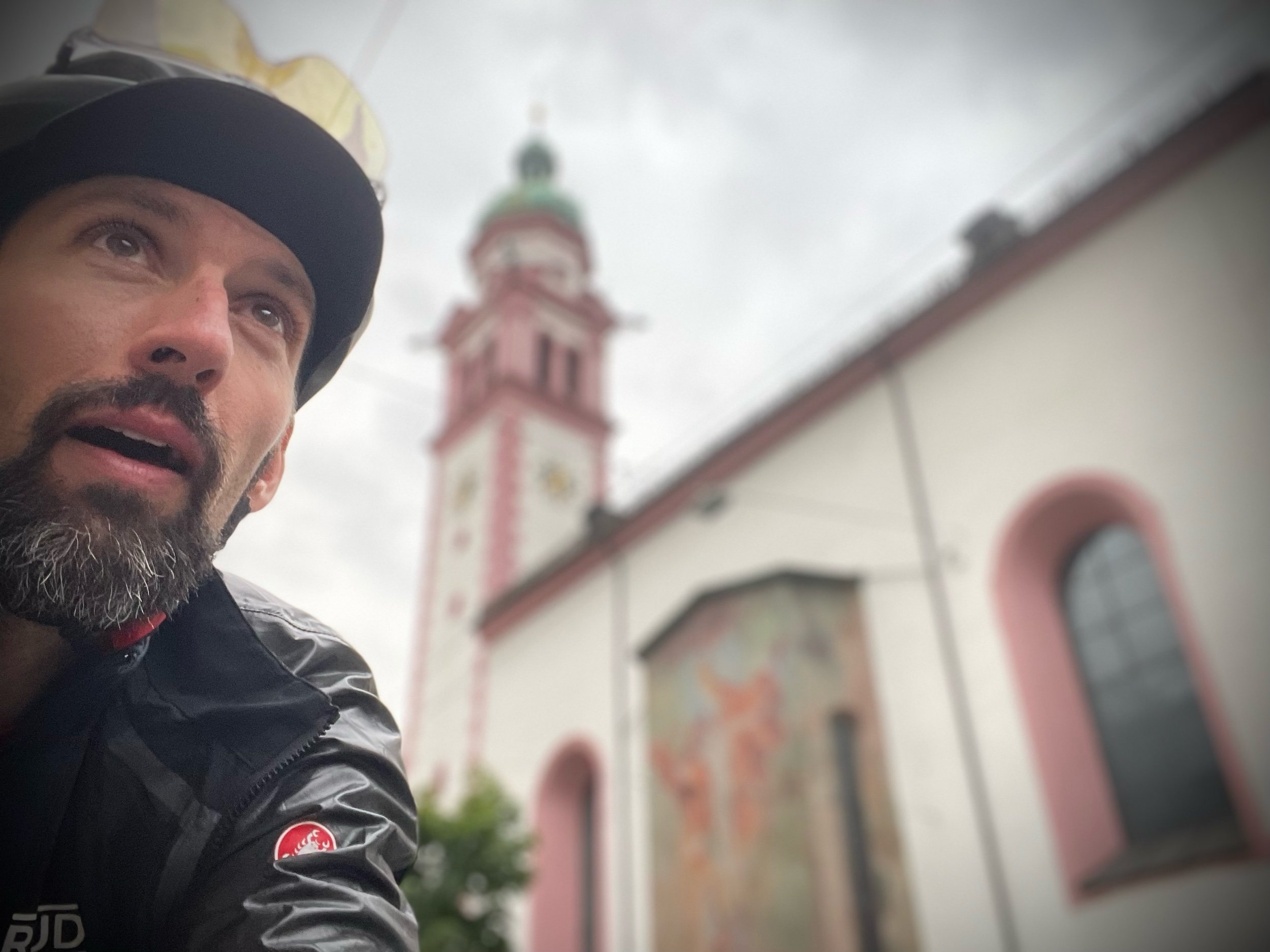

Wondering whether I can finish the food I’ve served myself, I review the day’s route and inspect the weather forecast; yesterday’s 200km feels sufficiently absorbed. At home, I’m vegan, and I make exceptions for eggs and dairy here and there. When travelling, I’ve learned flexibility is key, and I only concern myself with steering completely clear of meat (and sometimes fail). Here and there I’ll buy something with tuna in it, because it’s often hard to source dense vegan proteins. This morning in Canazei, the breakfast buffet’s substance on offer, to complement the 22 varieties of bread products, is soft-boiled eggs and a panoply of cheeses. I know these options are far from ‘clean burning’, but there’s no reason to worry about it. I don’t know where or when my next meal will come, so I stuff myself.
The photos convey how beautiful and spectacular the region is far better than I can express in words. Passo Pordio, formerly nothing more than words to me, presents itself as a stunningly beautiful ascent. The air is cool as I climb in my Perfetto with the arms zipped off, iconic dolomitic rock defiantly piercing the horizon. I crest at a little over 2200m, pause briefly to absorb the moment, taken by the surreal beauty of the valley extending before me. I’m grateful to be here. And I must press on.
Passo Giau is next, following a truly spectacular descent, and a bit of a valley traverse. Giau is famous, but I’m not really sure why until I note that its grade isn’t relenting, and the road surface is kind of slow. Ok, cool, Giau is hard. And the dolostone above the tree-line is magnificent. Up top I stop for some water from the bar, take a peek into the back of the cheese truck parked for the day, review what I’ve done, and what’s to come.
Passo Falzarego/Valparola is next, and I gotta be honest, I don’t have a clue why there are two names for one continuous ascent. This one is less noteworthy than the others, for whatever reason; maybe I’ve been spoiled. I ride into rain en route to Brenner’s Pass, which will deliver me into Innsbruck, Austria.
Brenner marks the border of Italy and Austria, and as I pass through I’m drying off from the rain and mist I rode through for about an hour. Deciding to stop at a grocery store 15km shy of Innsbruck, after making my way down a descent that’s probably cooler going up than down, proves wise. I find a vegan curry situation that’s surprisingly good, slam a Fanta knock-off, and forget one of my bottles on a bag of fertilizer.
Riding into the centre of Innsbruck is striking; beautiful. My first thought is that I ought to try to come back with my family. Will I be staying close enough to the core to pop back over after getting food? Haha, no, not remotely. My hostel is so low-key it takes me 45 minutes to figure out that I’m already there, and I settle for a dinner of a couple sandwiches from the gas station ‘cafe’ across the road. A couple locals are getting pretty hammered in what appears to be a regular affair. We chat a bit in broken English, it’s funny. I get to sleep late, having chatted with a few interesting folks at the hostel. Ok, right, hostels are social….recovery for the next day takes a hit.
Day 3: Innsbruck → Mals
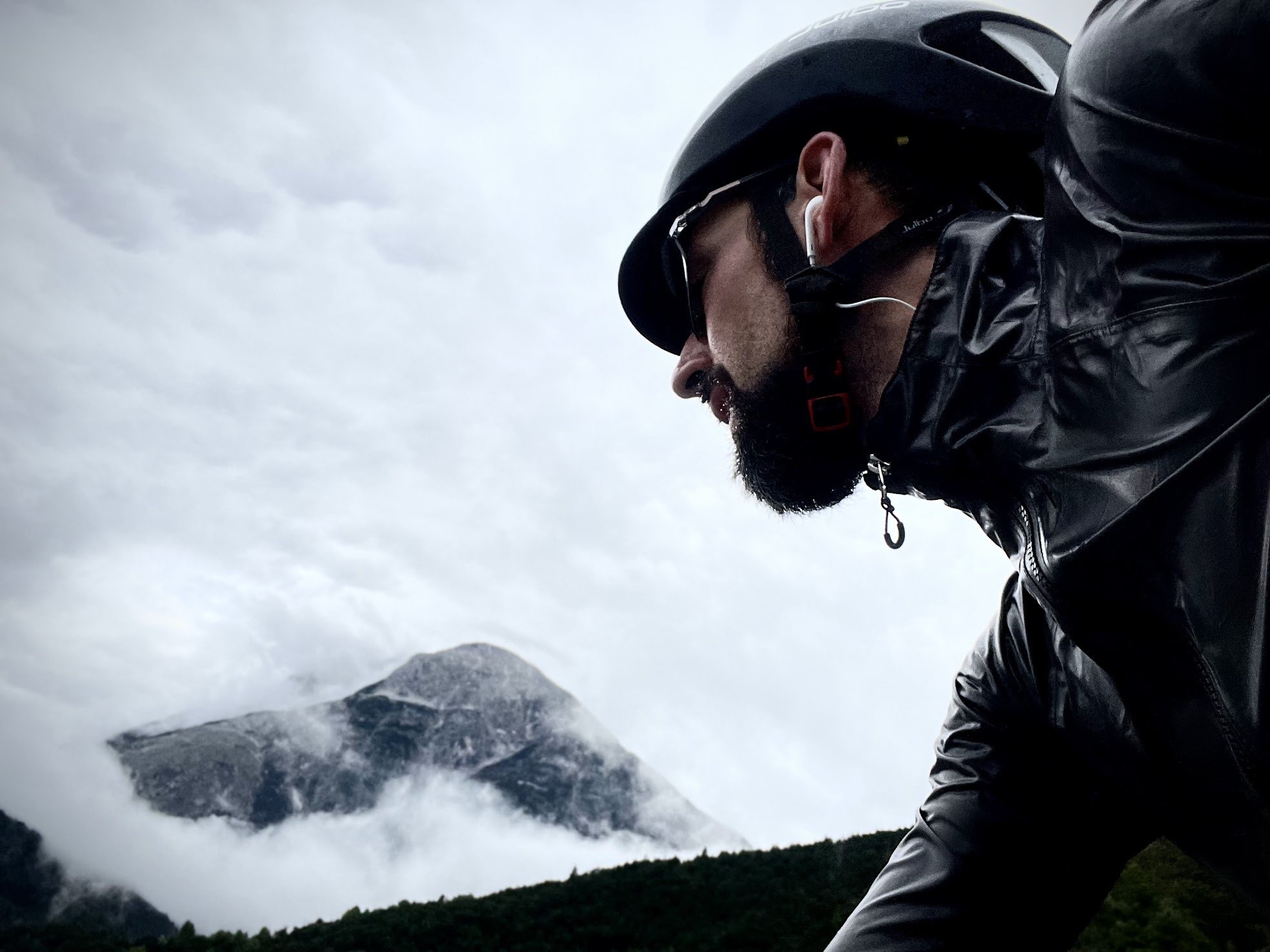

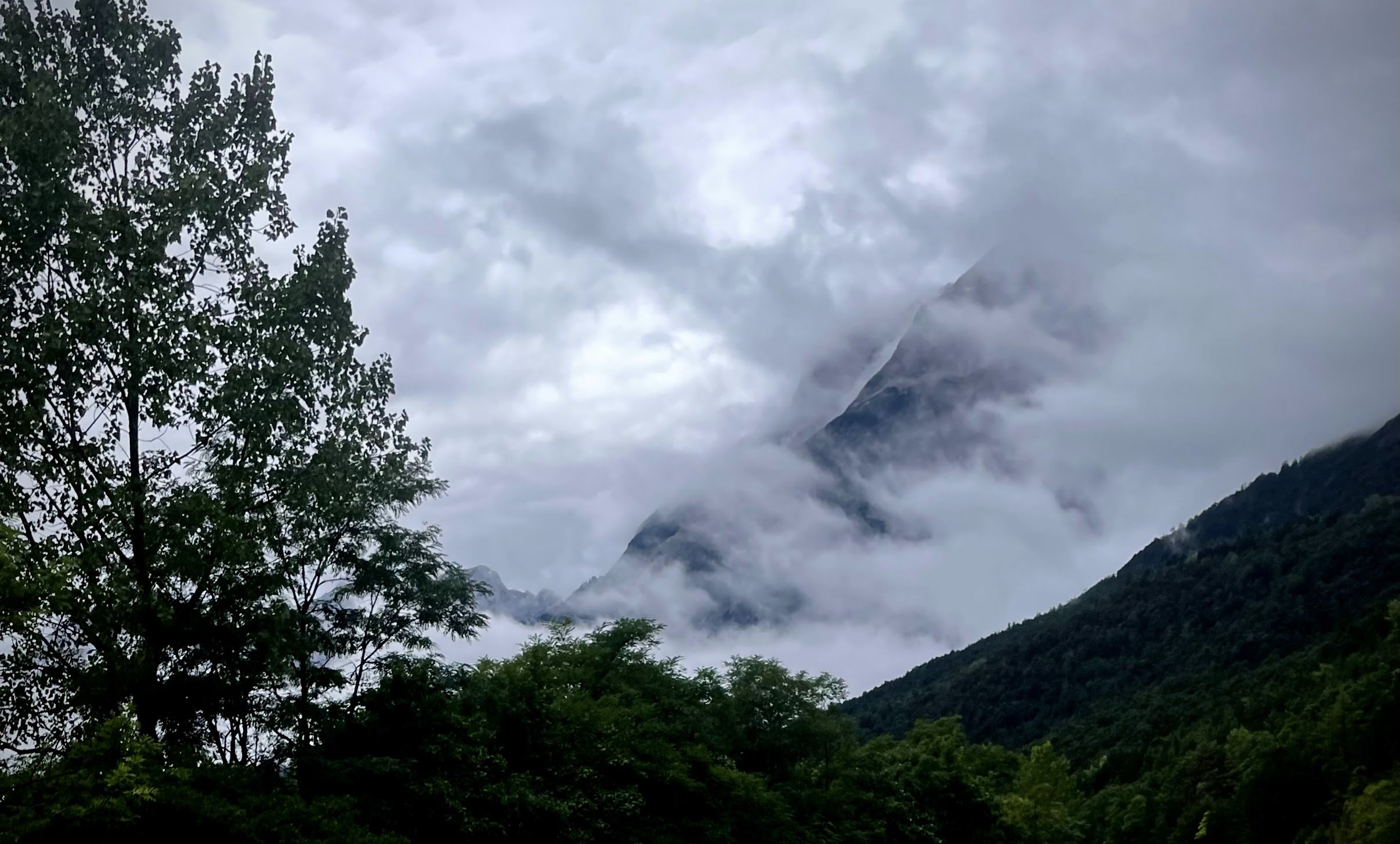
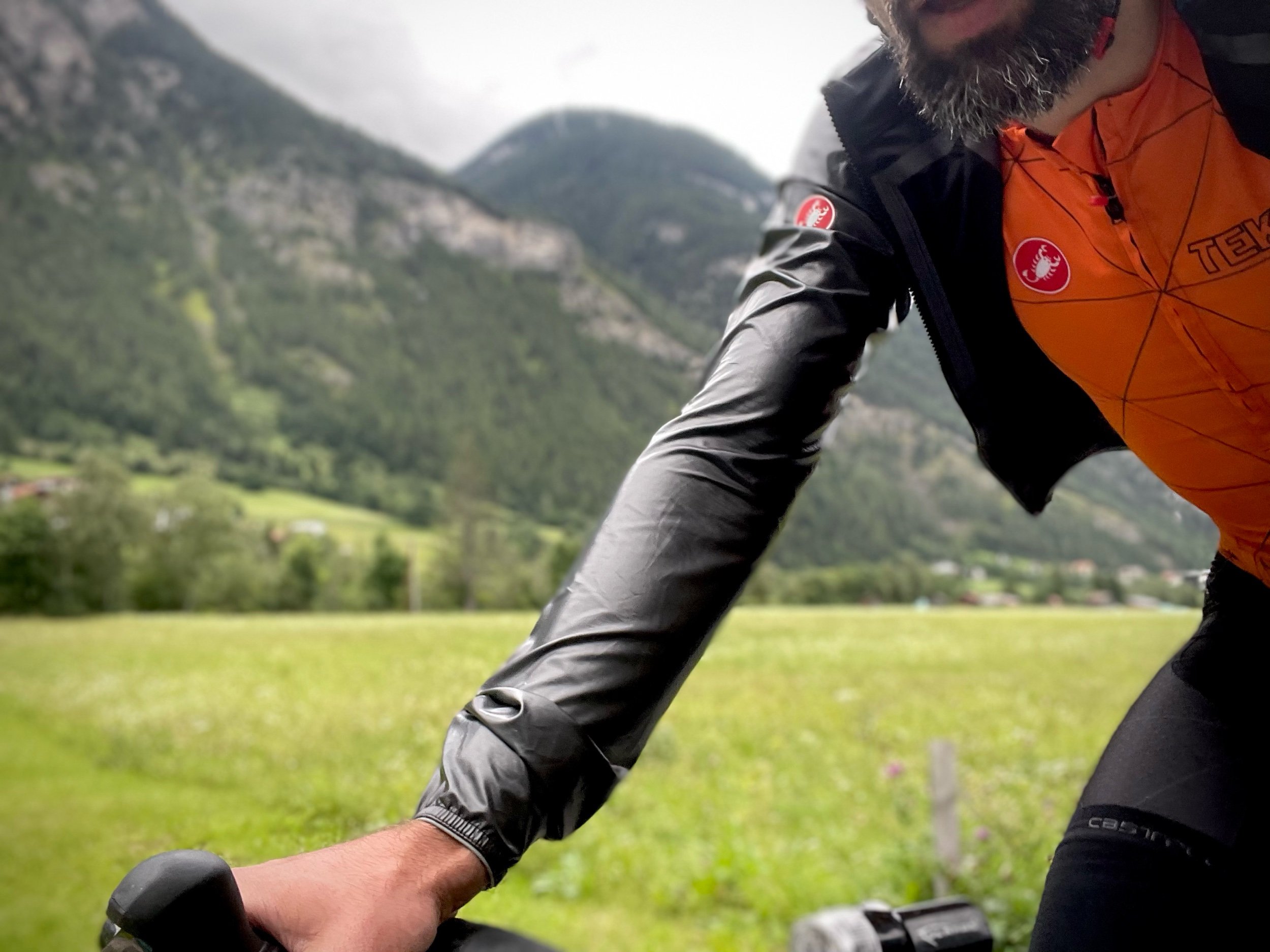
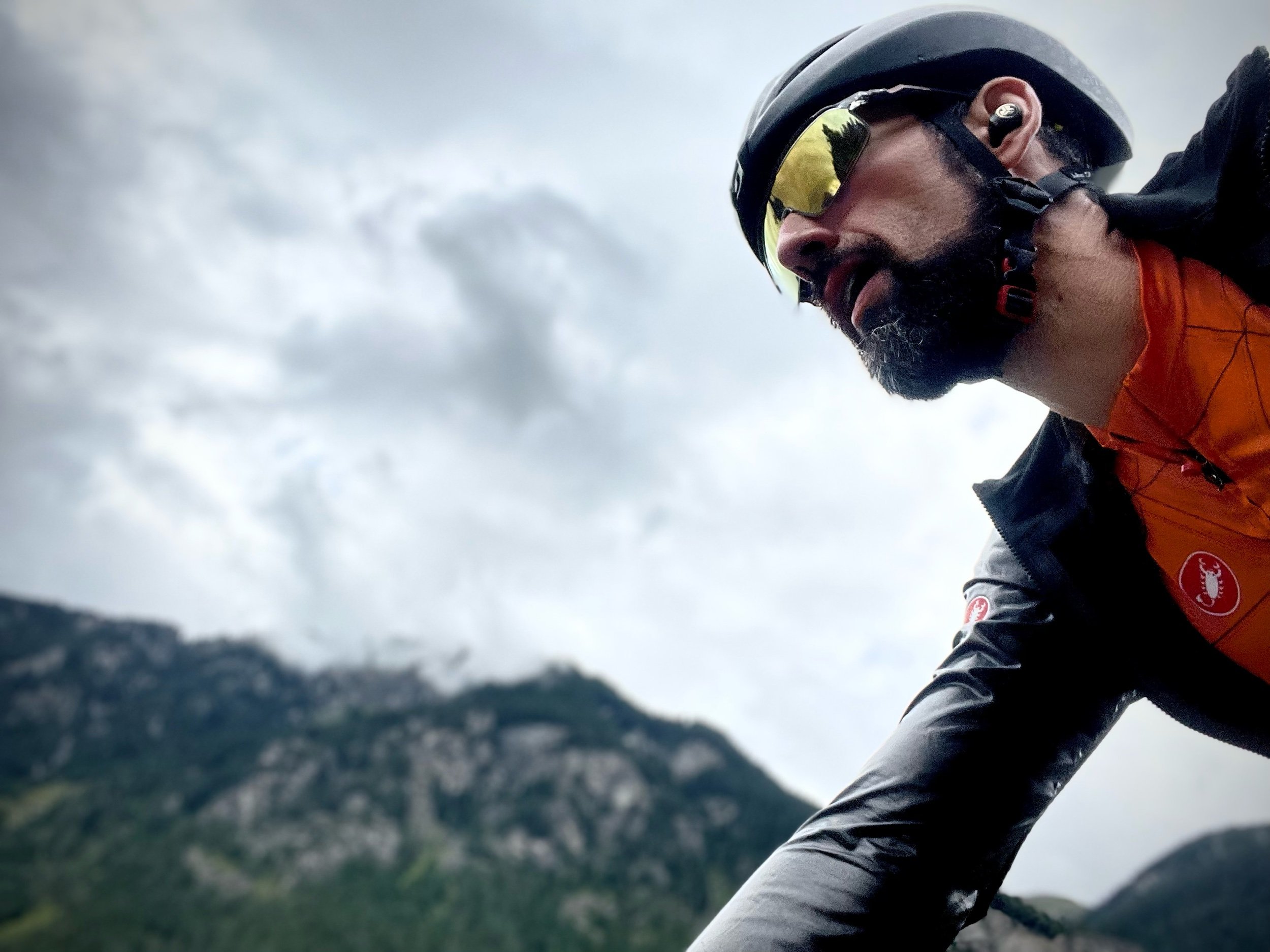
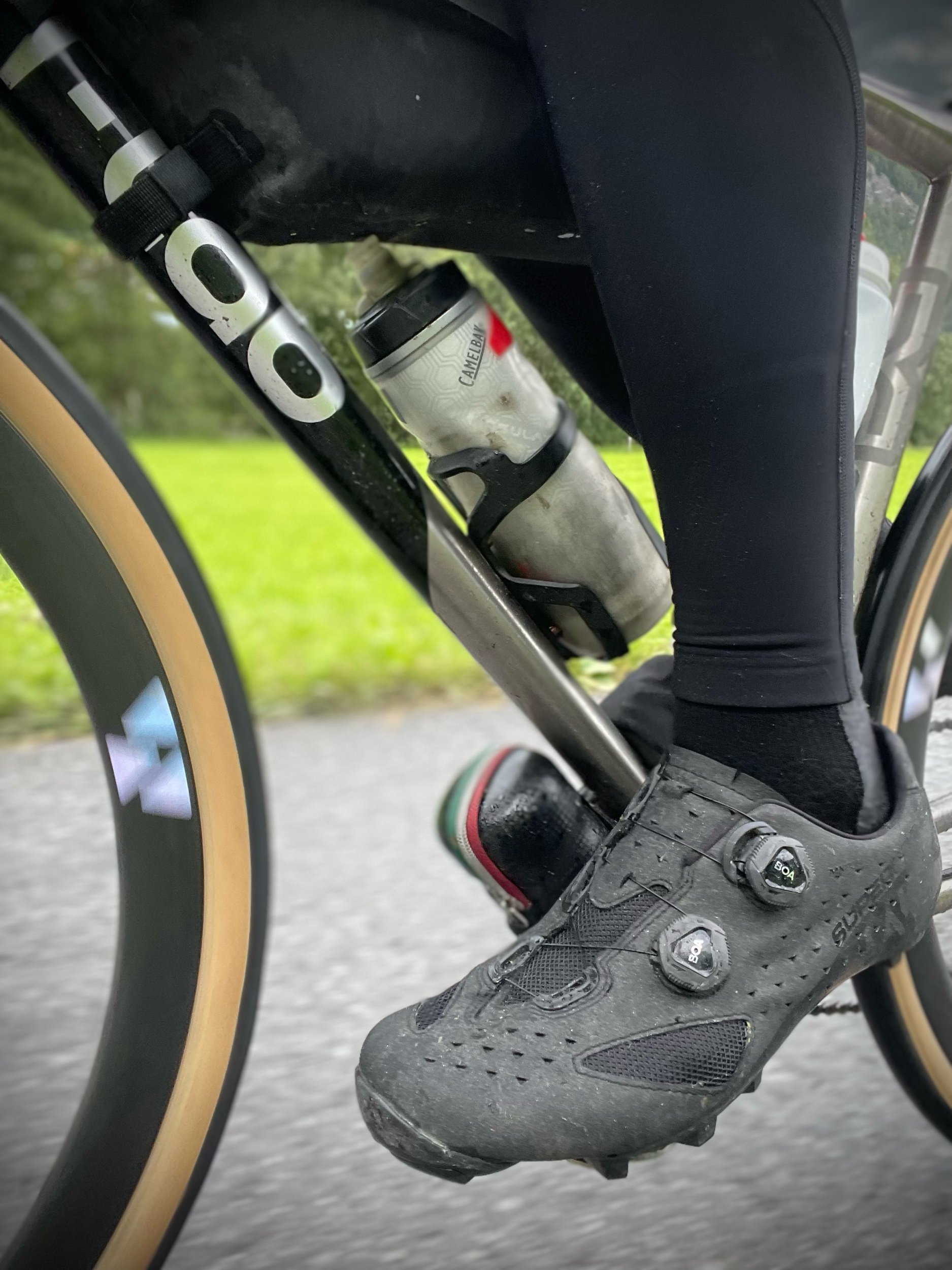
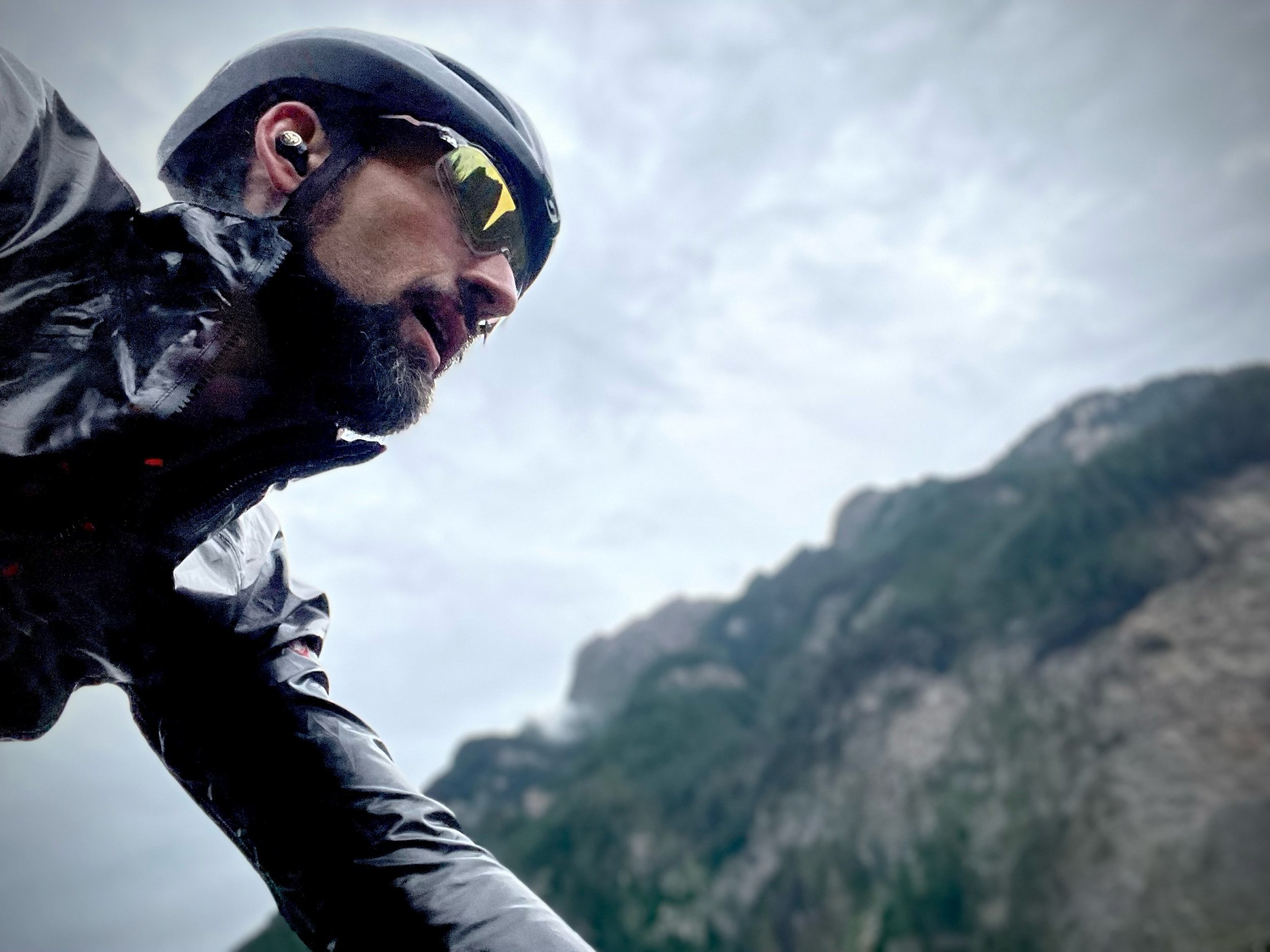
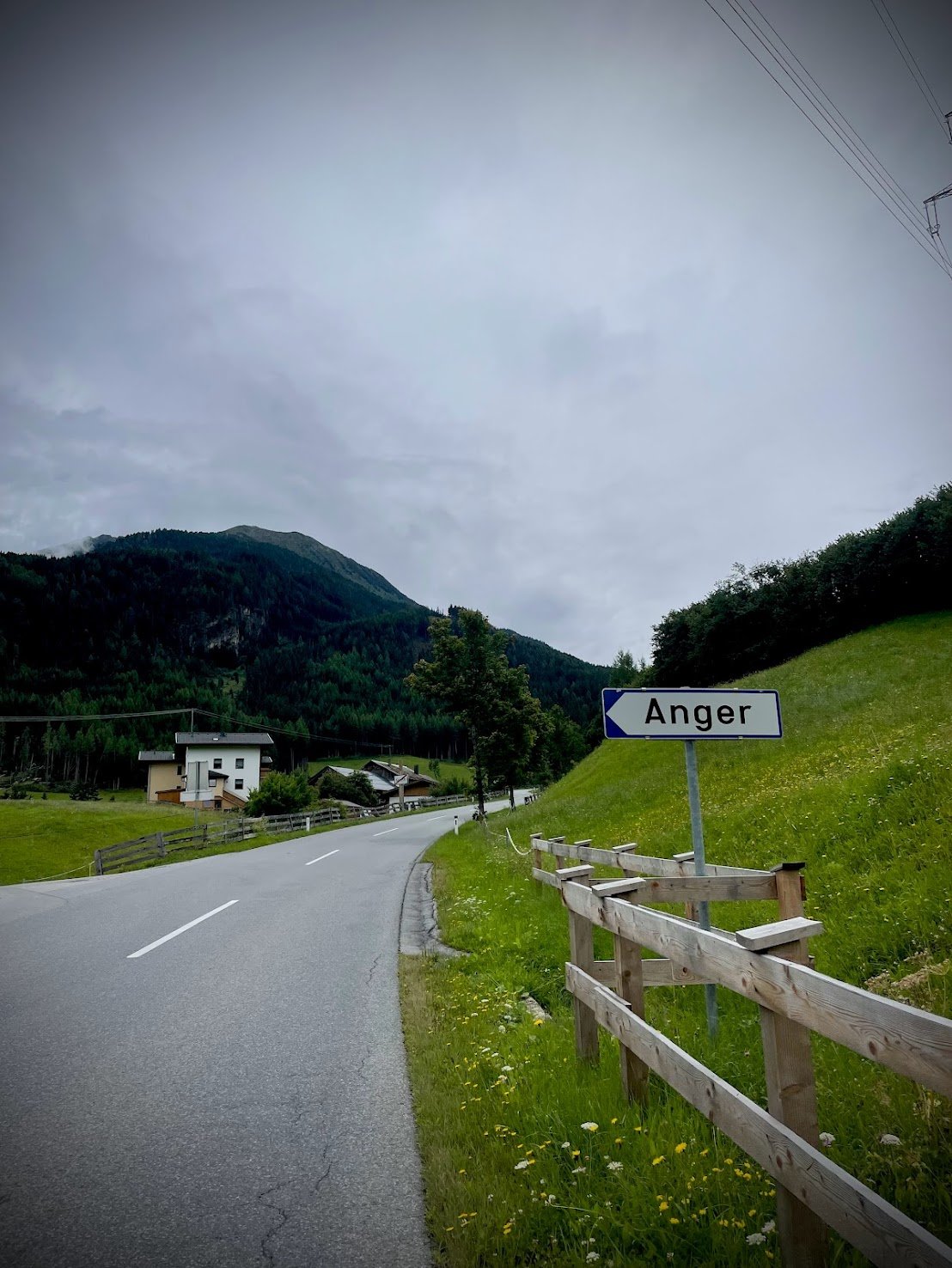
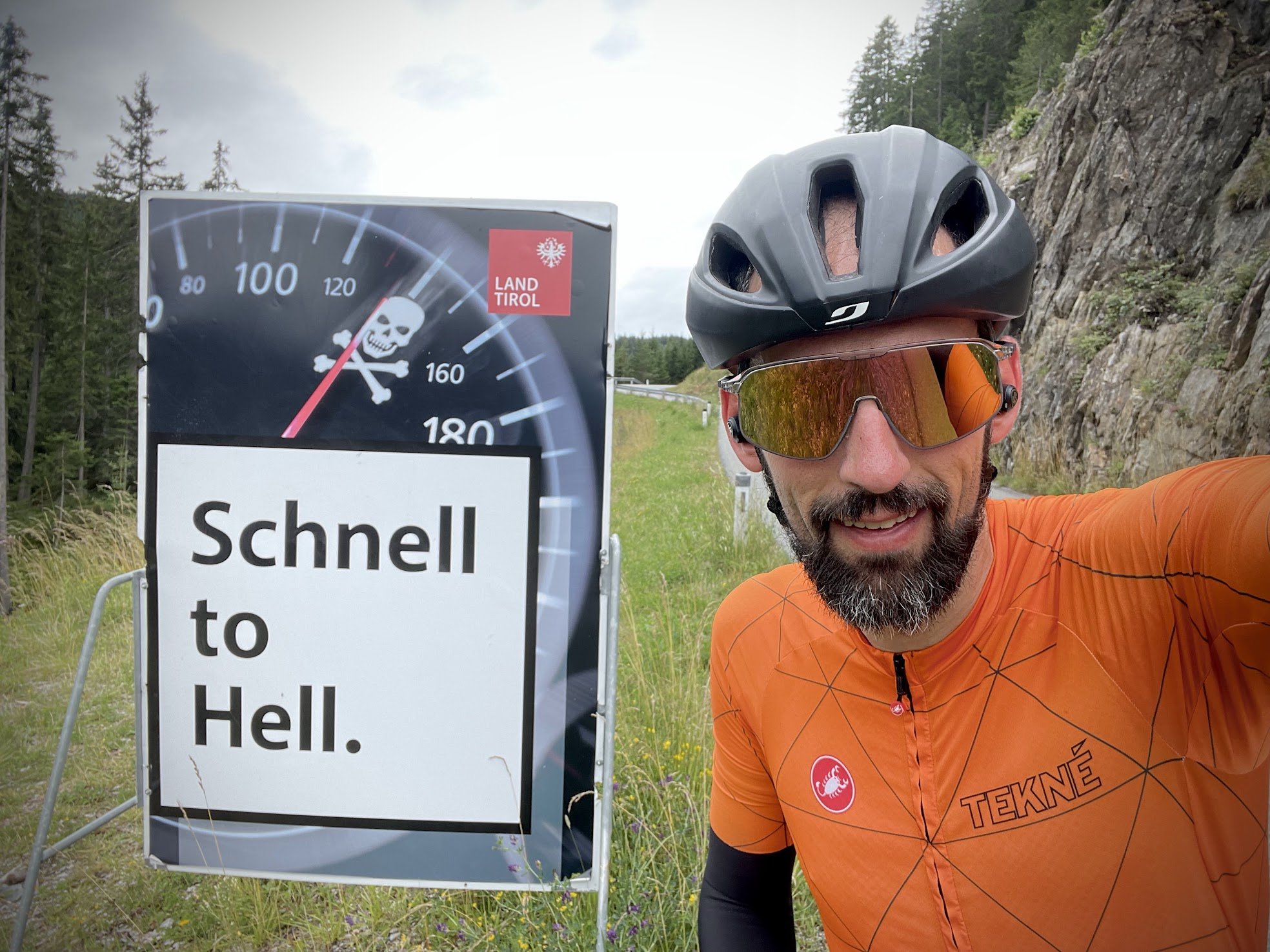
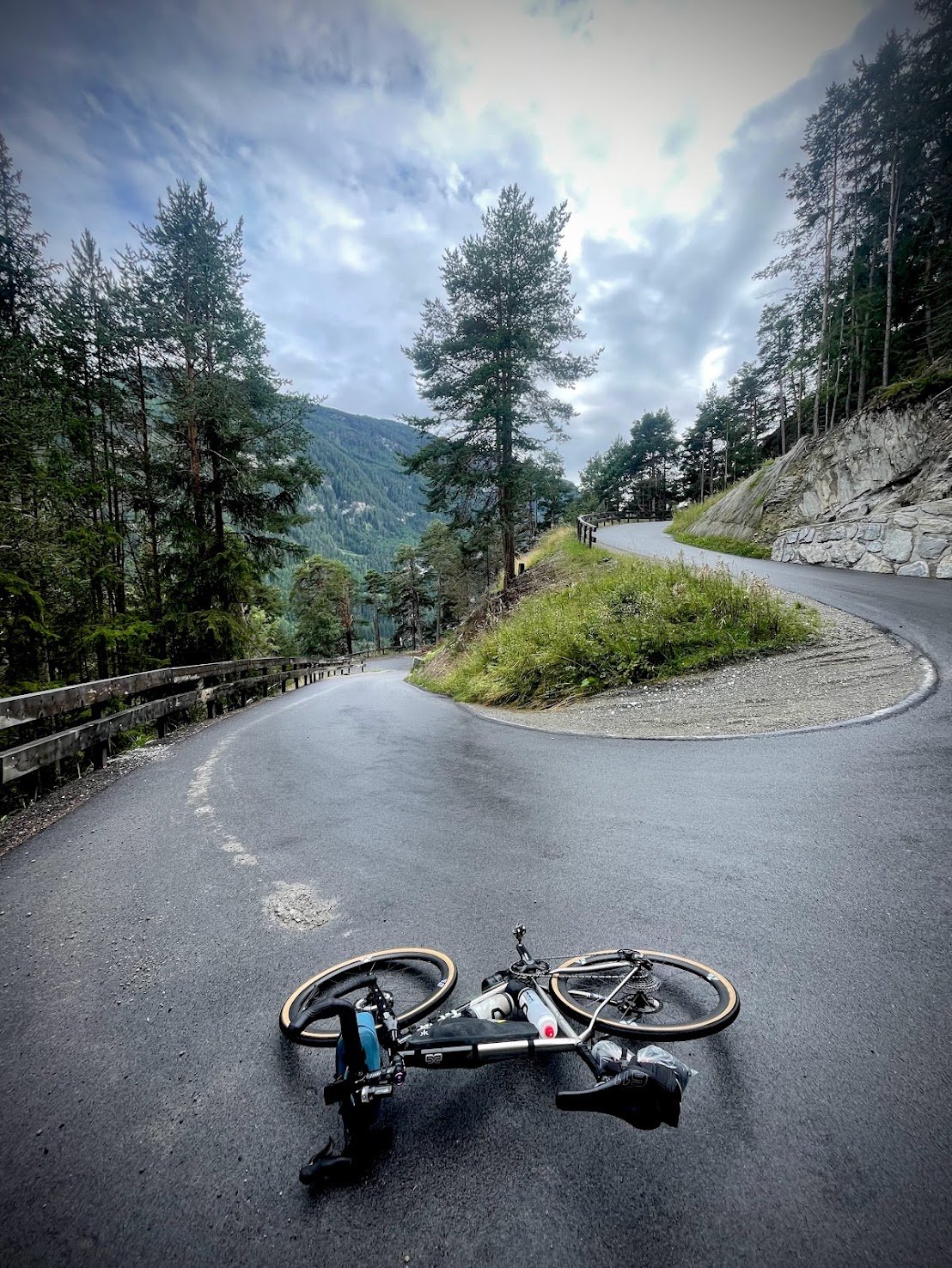
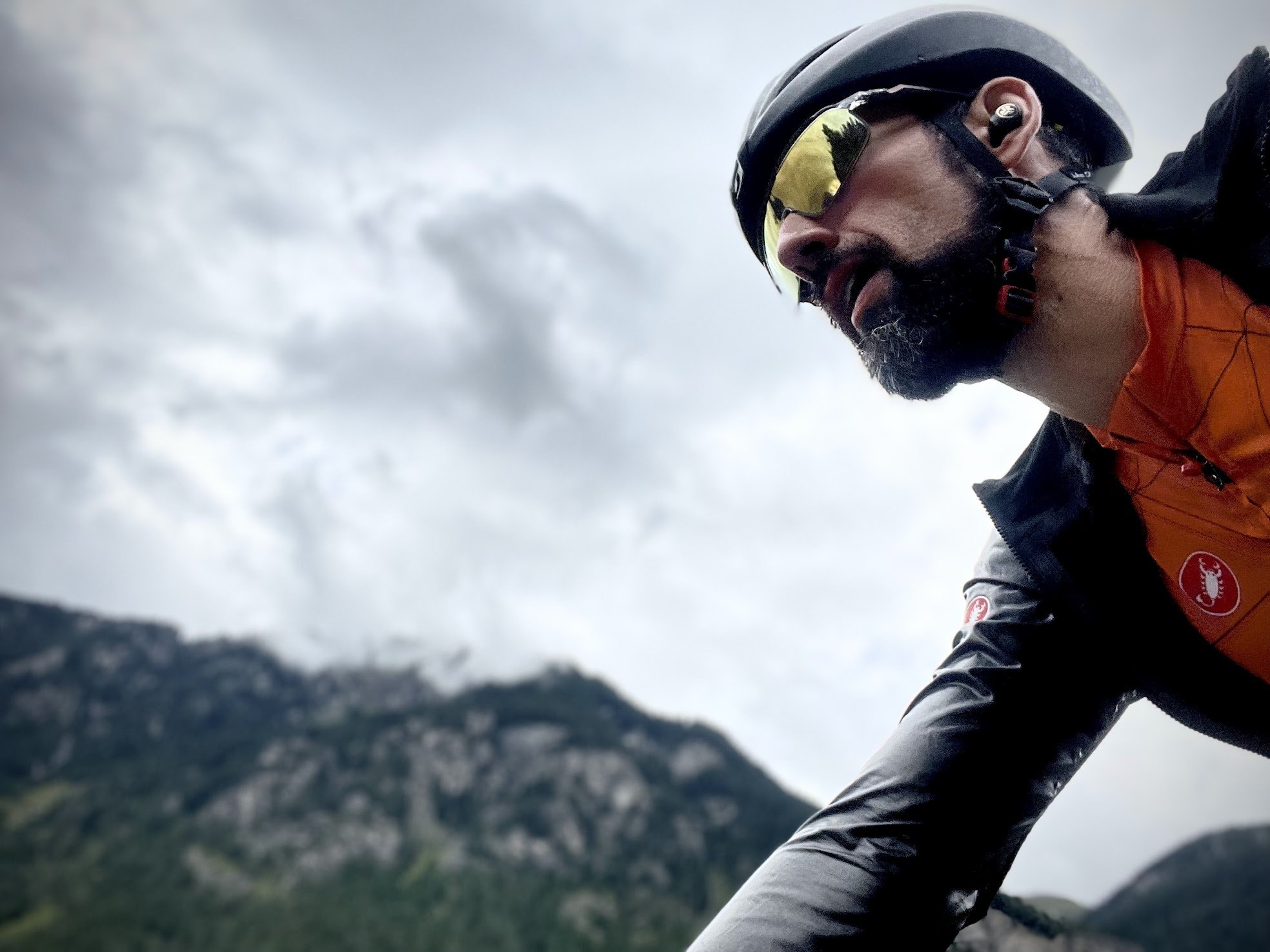



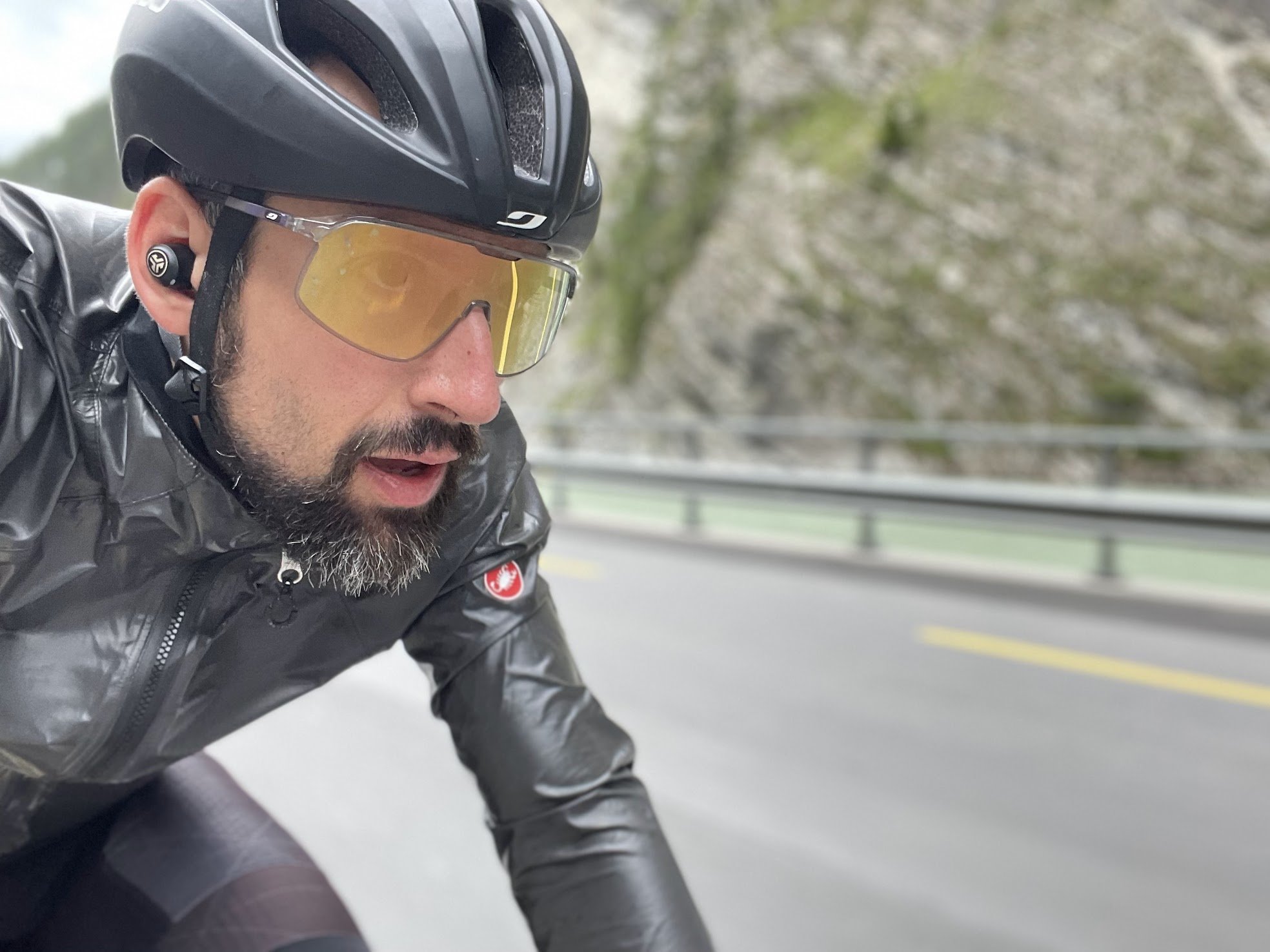
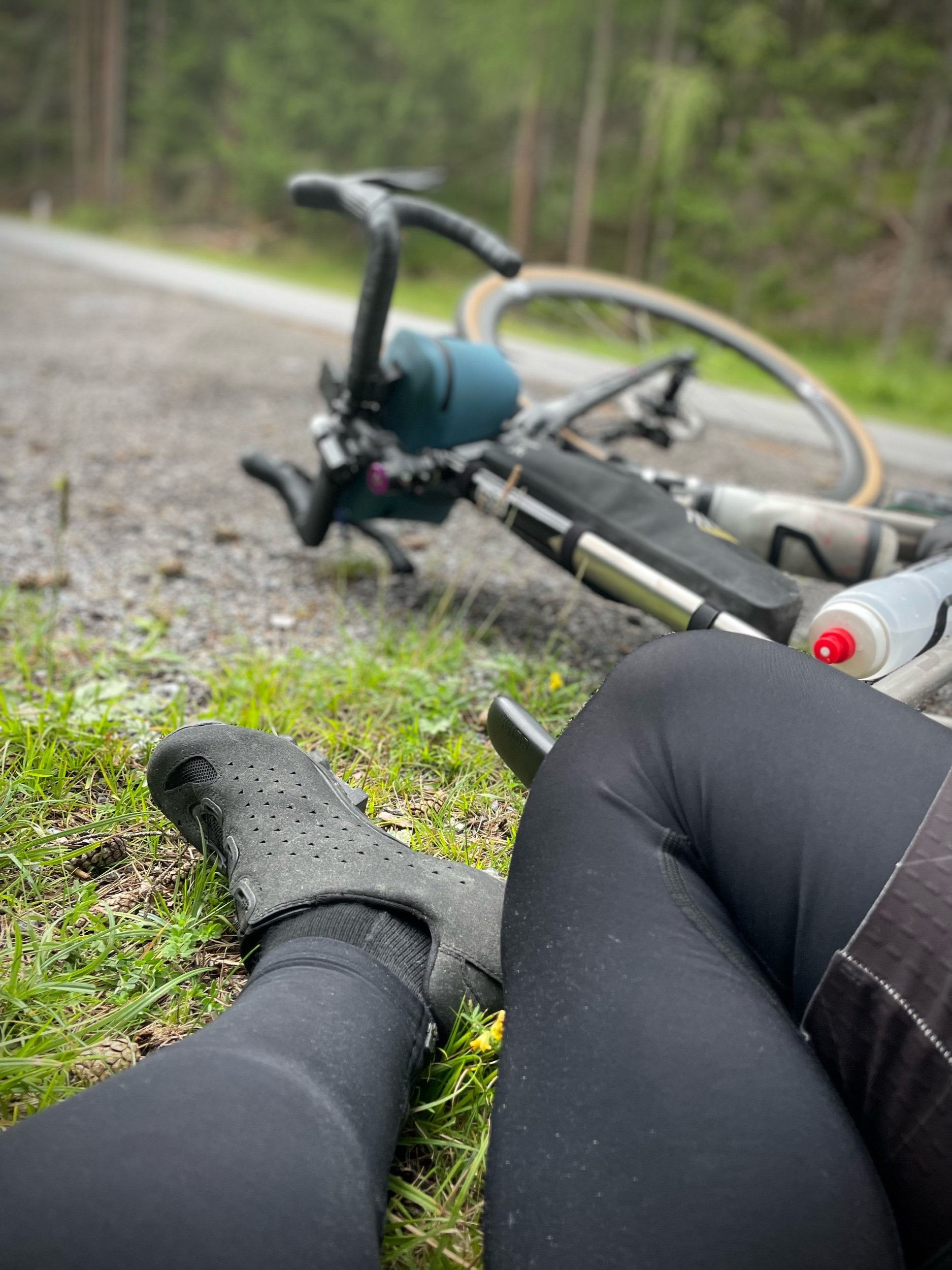
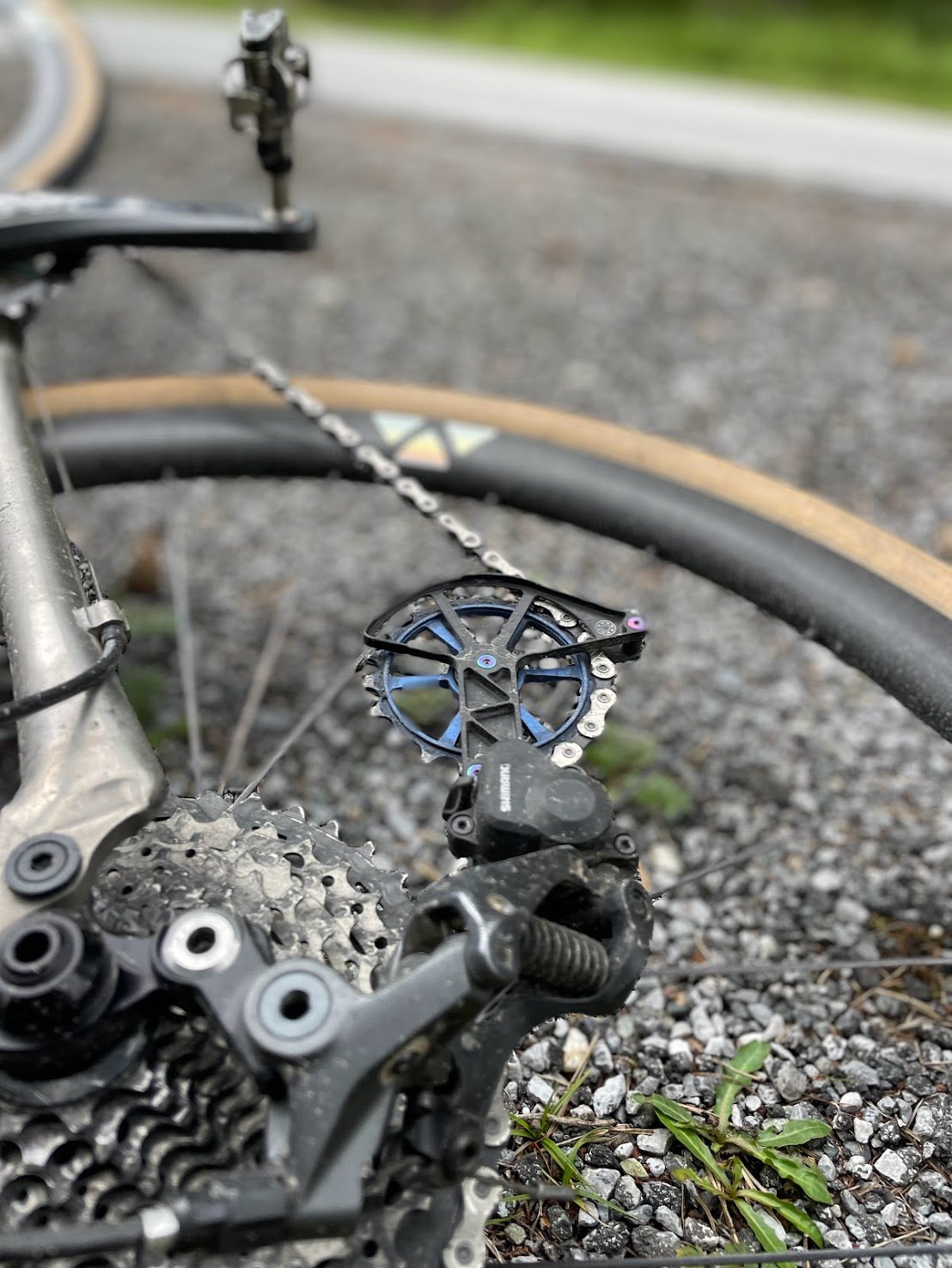
An alarm goes off at 04:30, yay. Hostels are on my shit list as of now. A couple packs up and takes off. I hope for at least another hour’s sleep.
I’m not exactly hustling to head off into the rain. My destination today is Mals, and I have two route options at hand. One is 170km with 4,100m ascent, the other 160k, 2,700m ascent. As I sit by a bakery window and gauge the rain my decision is easy: shorter, easier. The weather alone could make this a grind of a day.
The route is probably a lot more scenic on clear days, and after yesterday’s wonders, the contrast feels almost jarring. In the absence of awesome scenic distractions, my mind is preoccupied with the mission. Last night was a miss, really; I didn’t get to enjoy Innsbruck, and barely found edible food. Tonight I ought to be able to get in early enough to check out Mals, eat properly, and enjoy the place.
Turns out I totally forgot to load base maps for Italy and Austria on my Garmin before setting out. Over the first two days this meant the unit was processing and processing and processing, trying to figure out what to do with my route files, which overconsumed battery, and interfered with navigation. Today I’ve been navigating from my phone, not a terrible alternative, since the route isn’t complicated. Except I still managed to screw up a turn, and have just realized I’m 10km up a climb I shouldn’t be. Can I keep going and make it work? Sure, if I accept an extra 100k. Droppin’….
Once again, I can’t figure out how to get into my accommodations, an inn along a 20% grade. My phone battery is dead, and too wet to take charge, so I’m resorting to creeping around the building to seek a way in. Finally checked in, 19:30, food is top of mind as I stand in wet kit, cold, wearing the only pair of shoes I have, also wet.
“Is anywhere open for food?”
“Maybe a pizza place down the hill.” Which is a 20% grade, for about 1km.
“Ok, I don’t think I’m going to try that.”
All I can do is eat my two remaining granola bars, drink water, and go to bed after handwashing and hanging all my kit. My phone is charging now; I resorted to using a match to dry out its port. Hopefully tomorrow it doesn’t rain.
Day 4: Mals → Tirano
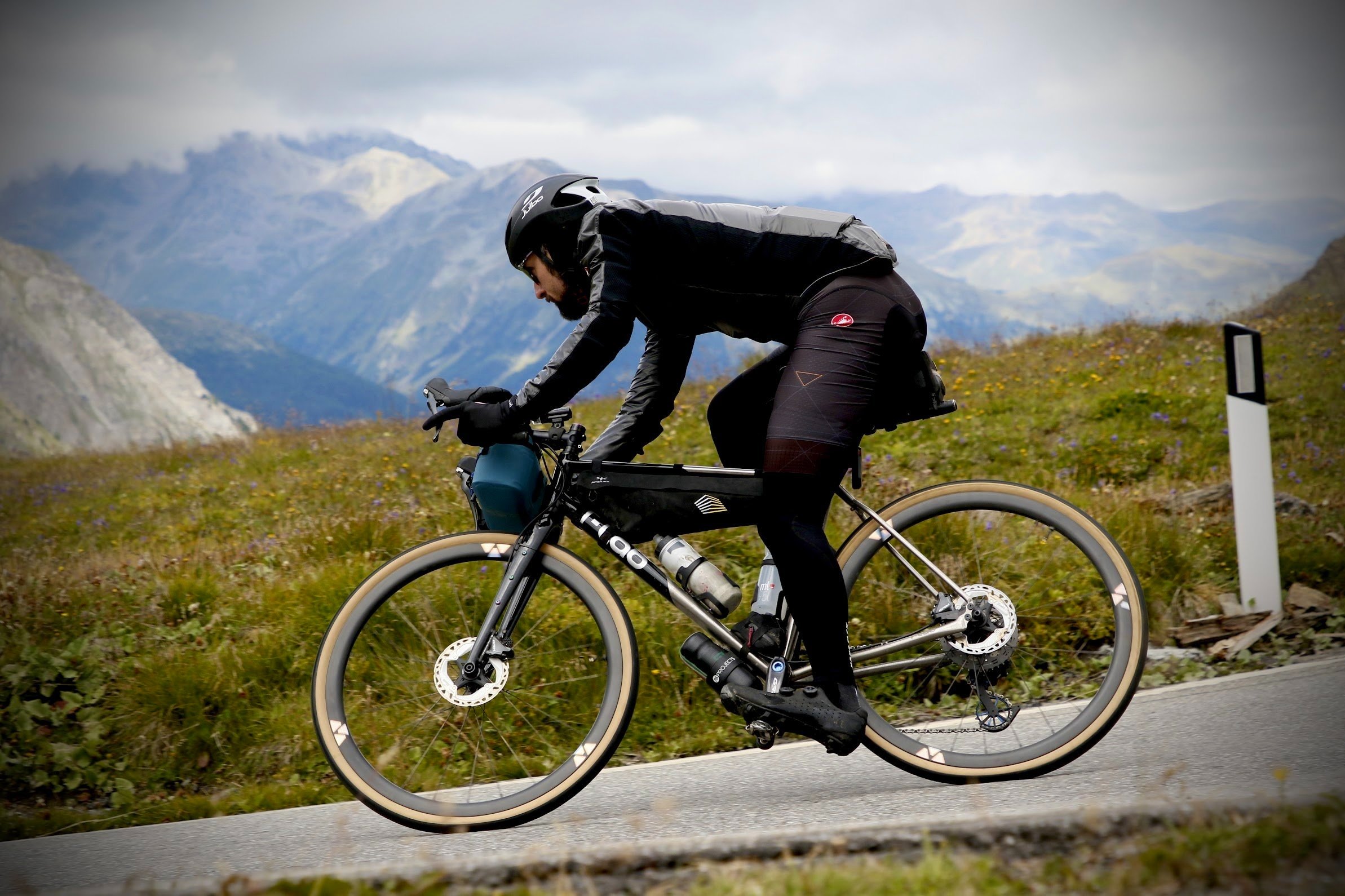

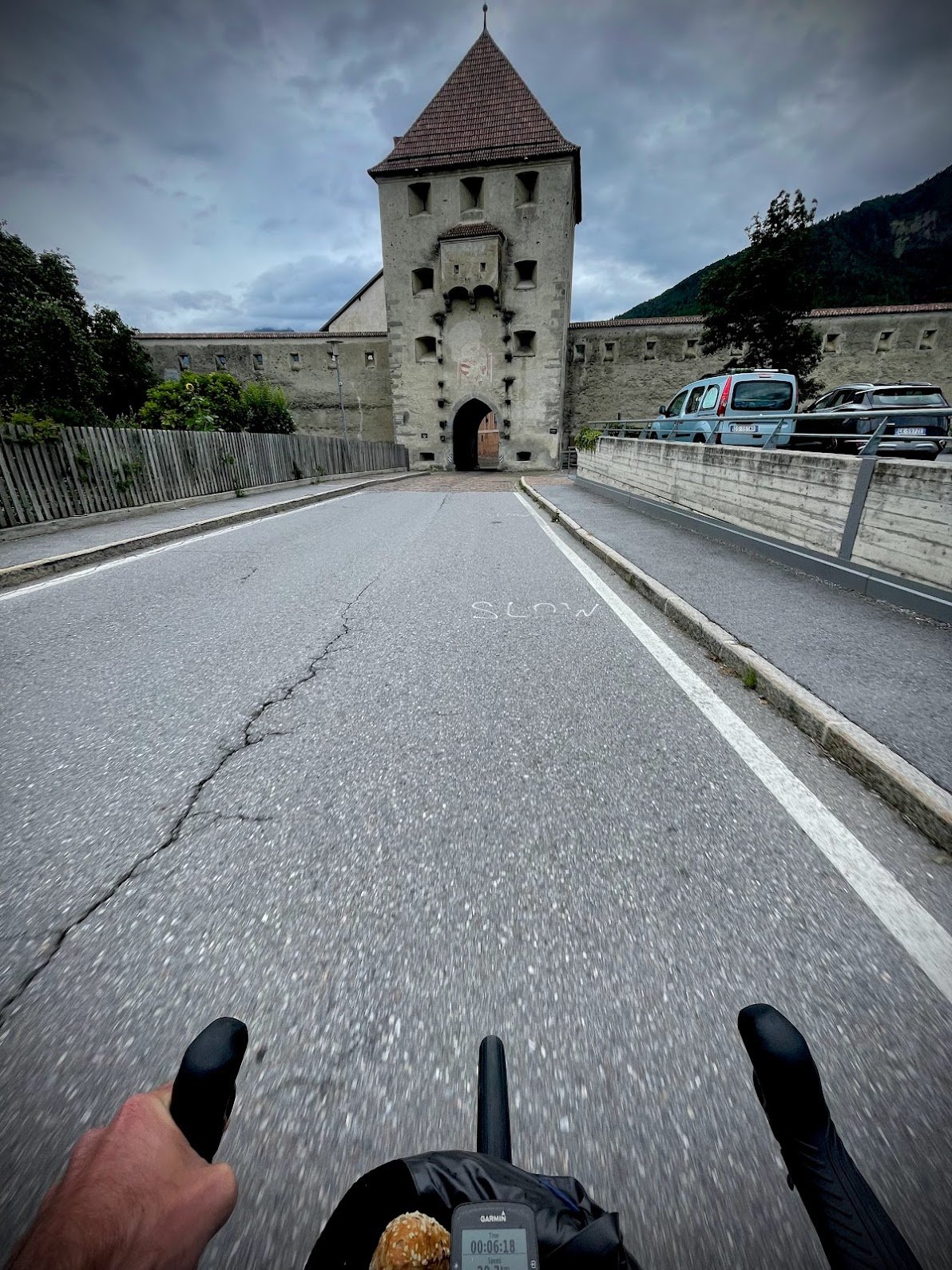

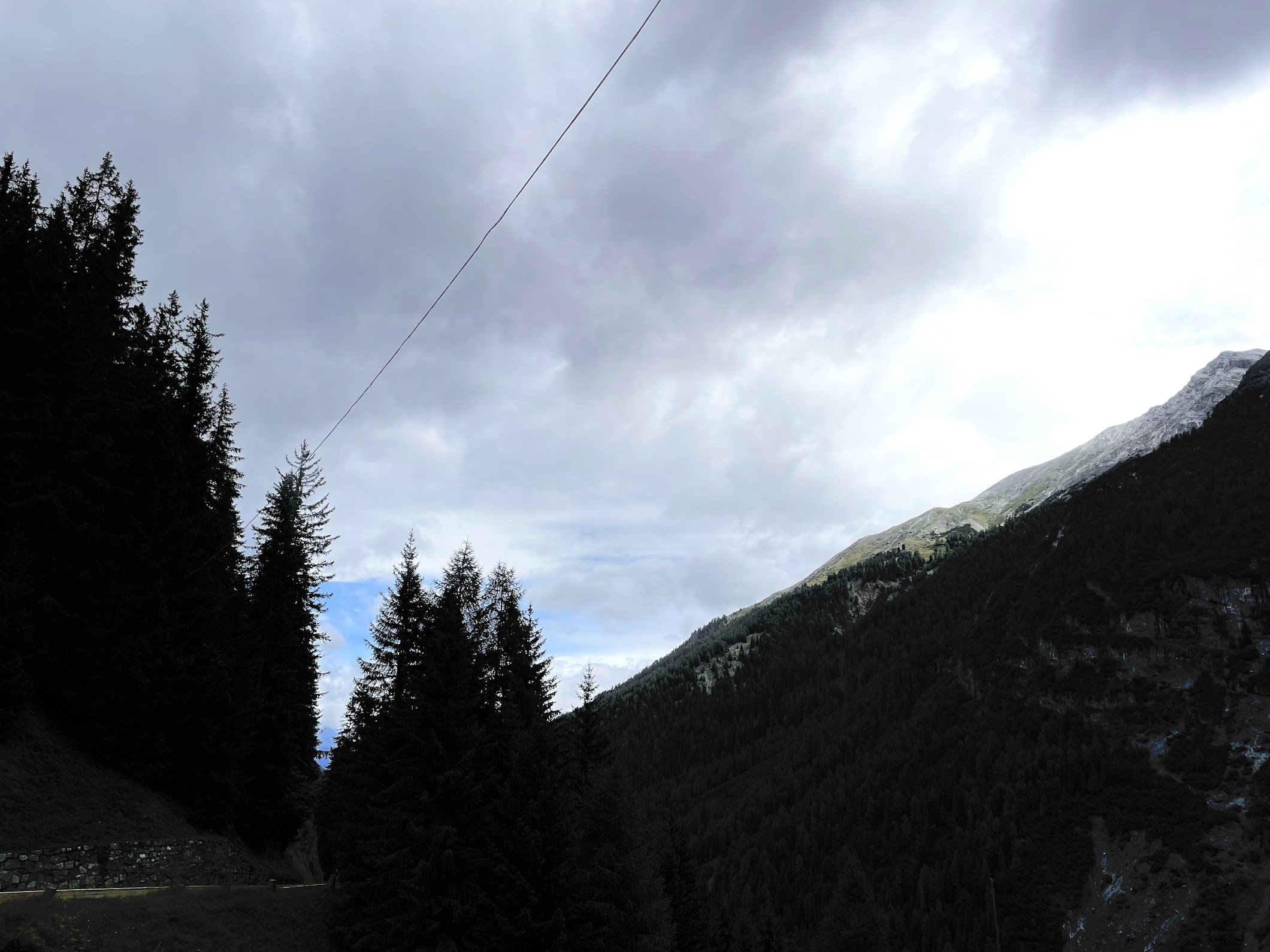










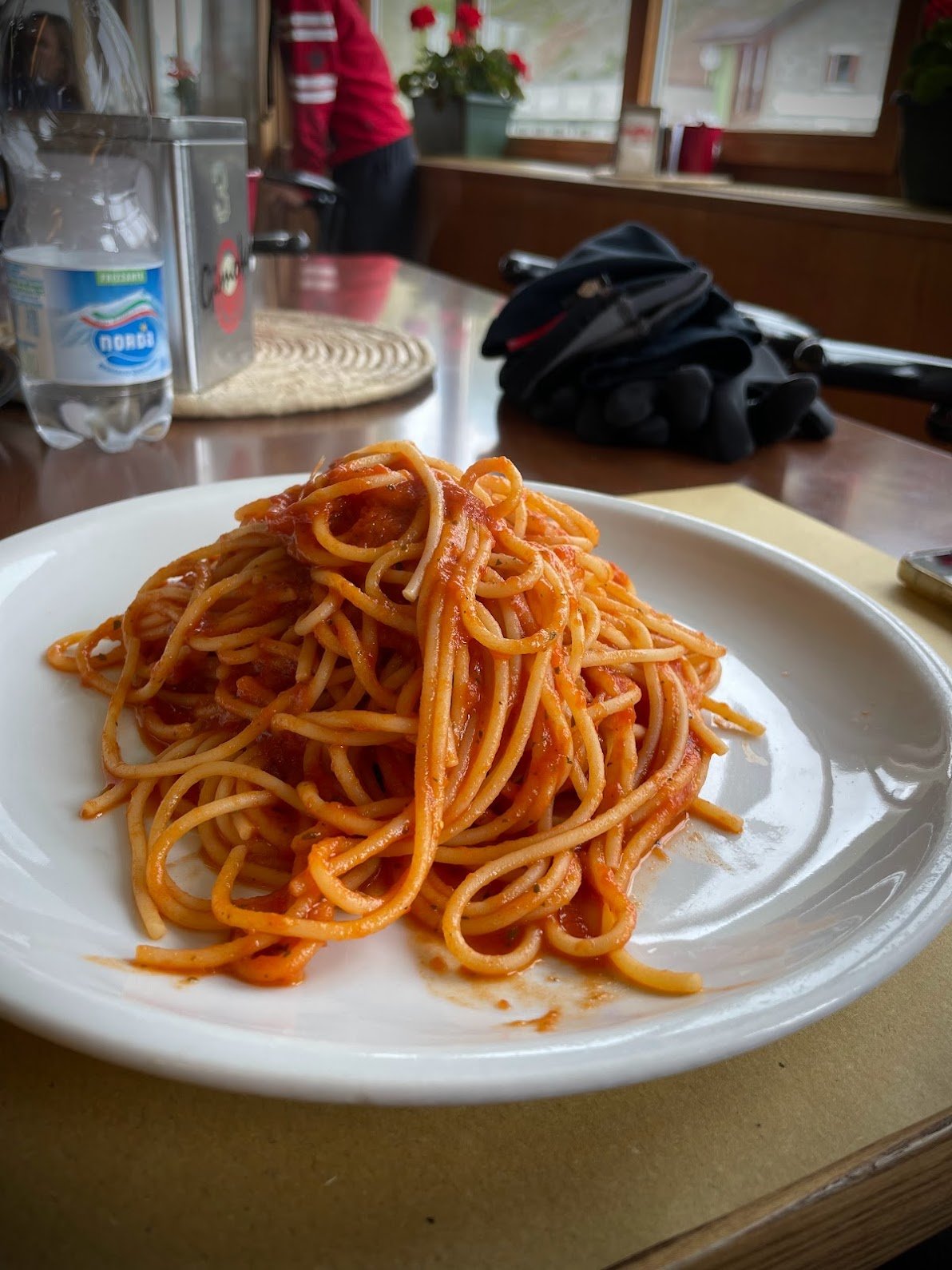


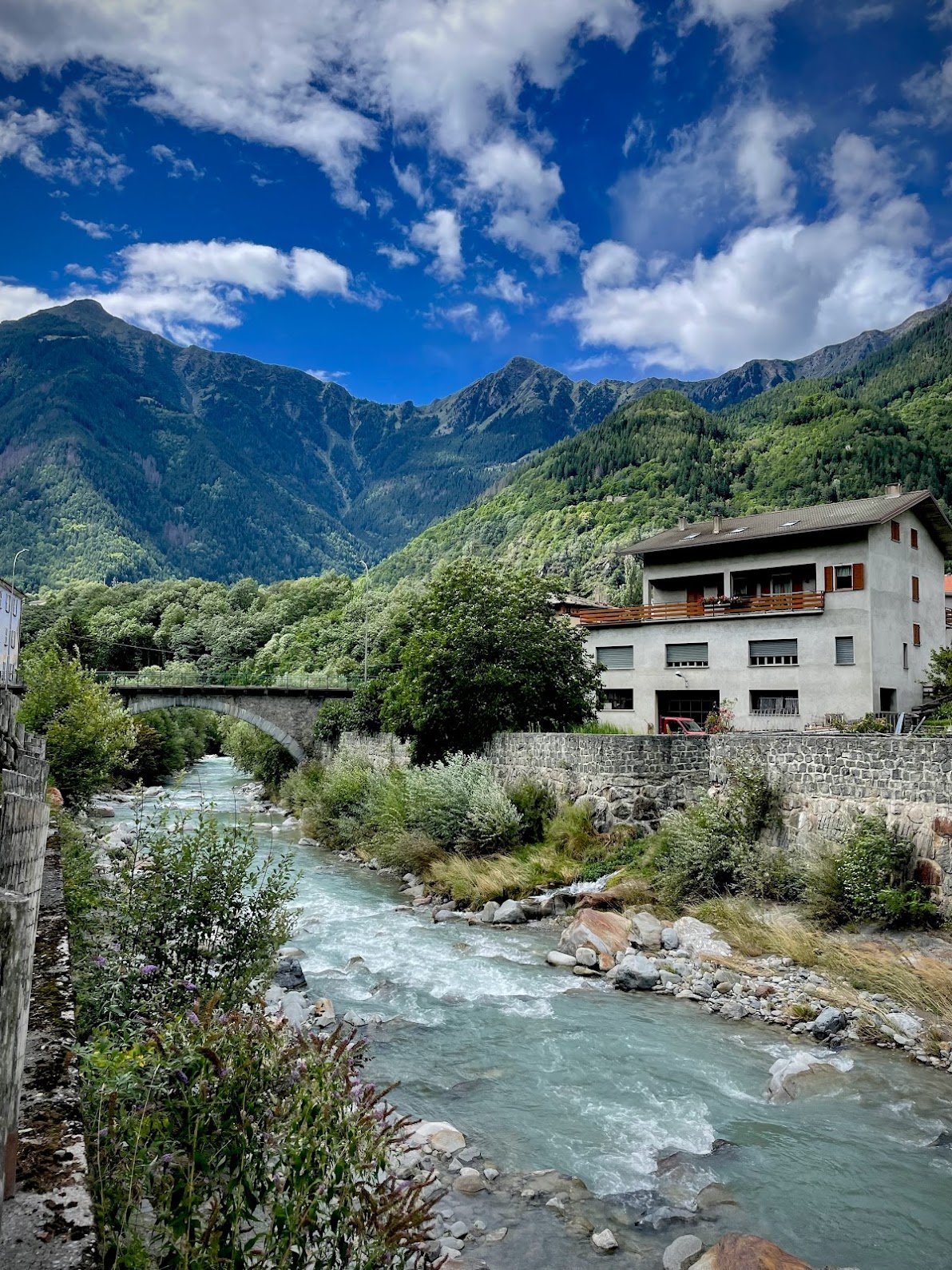
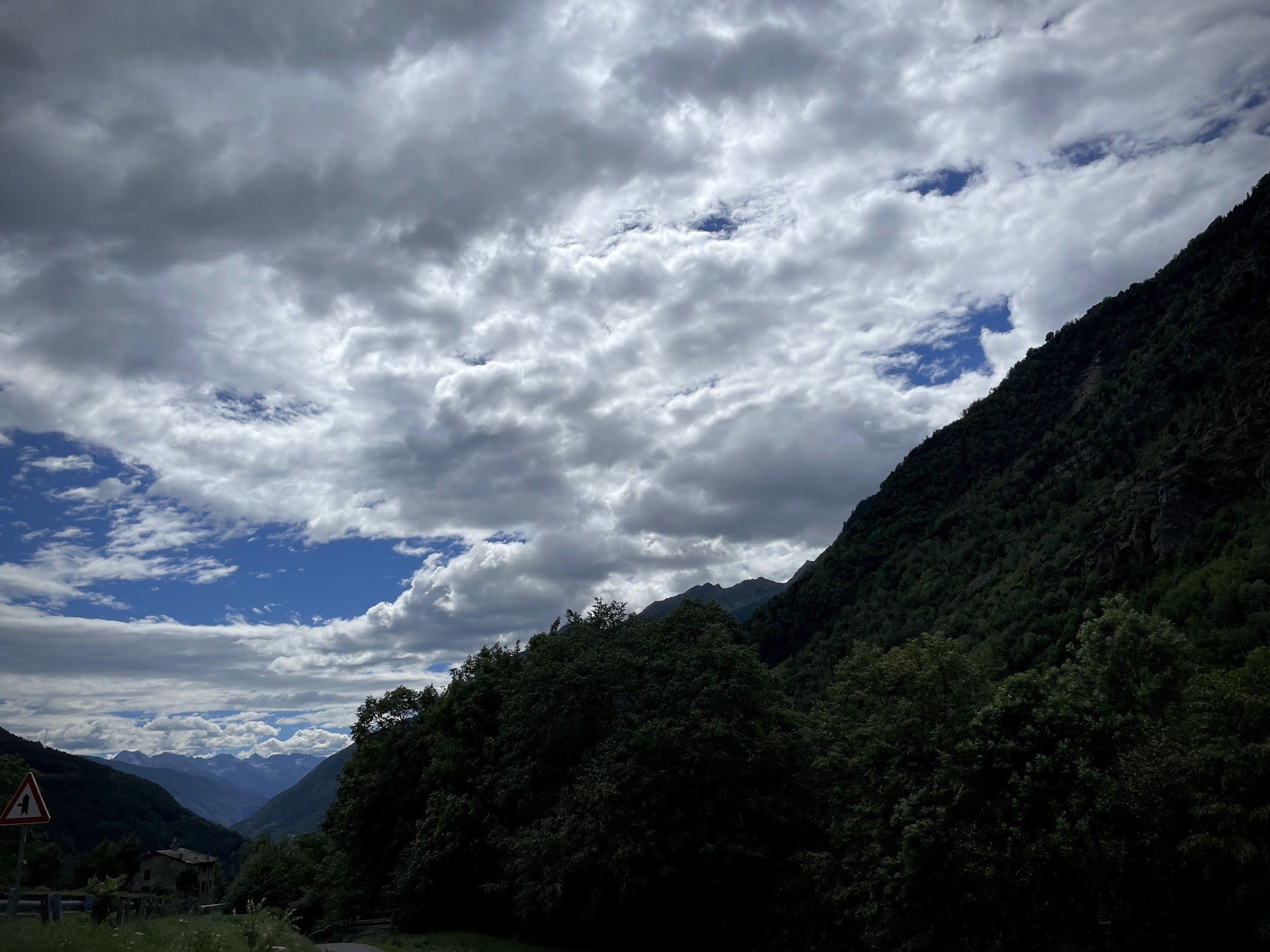
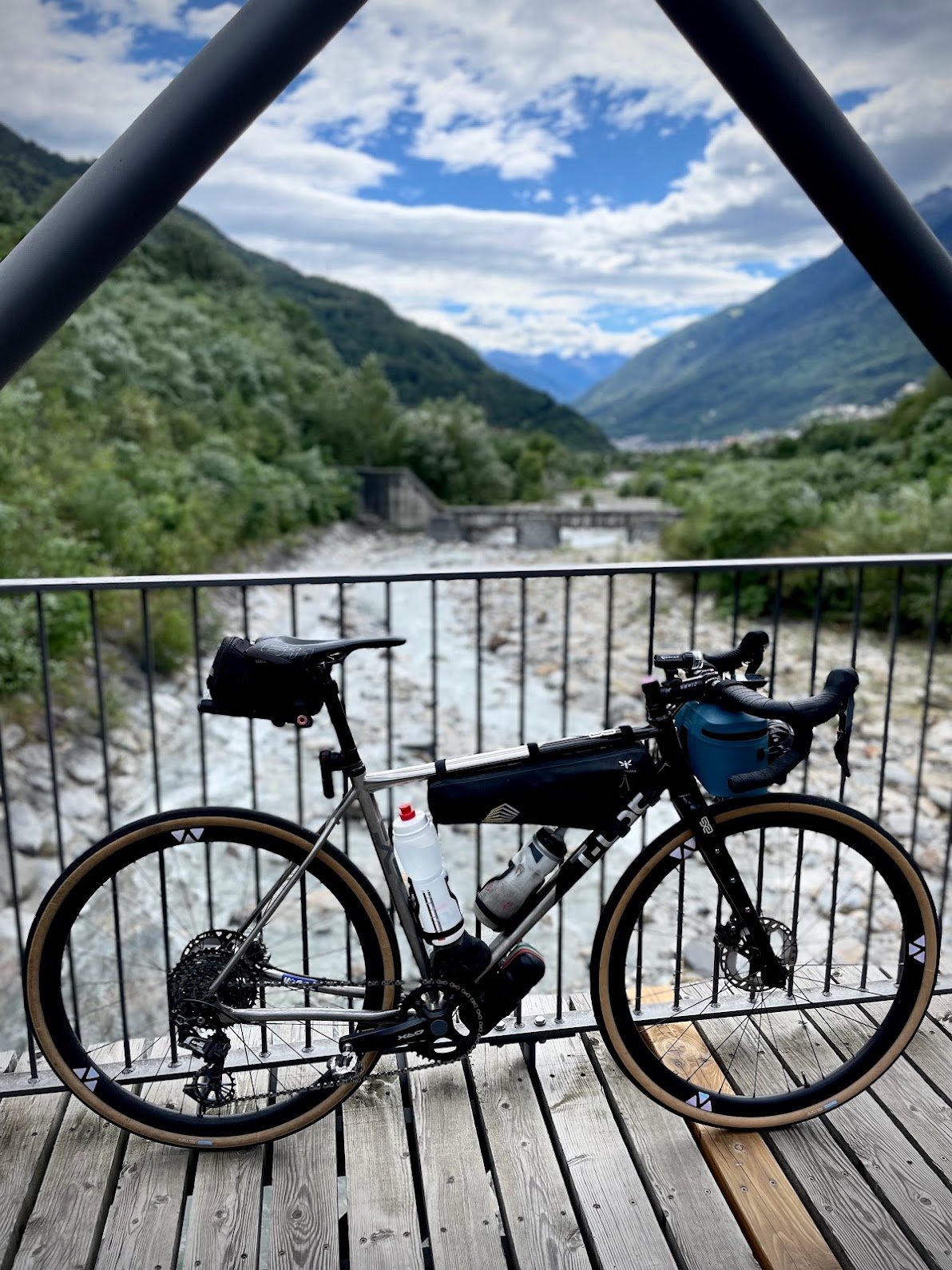
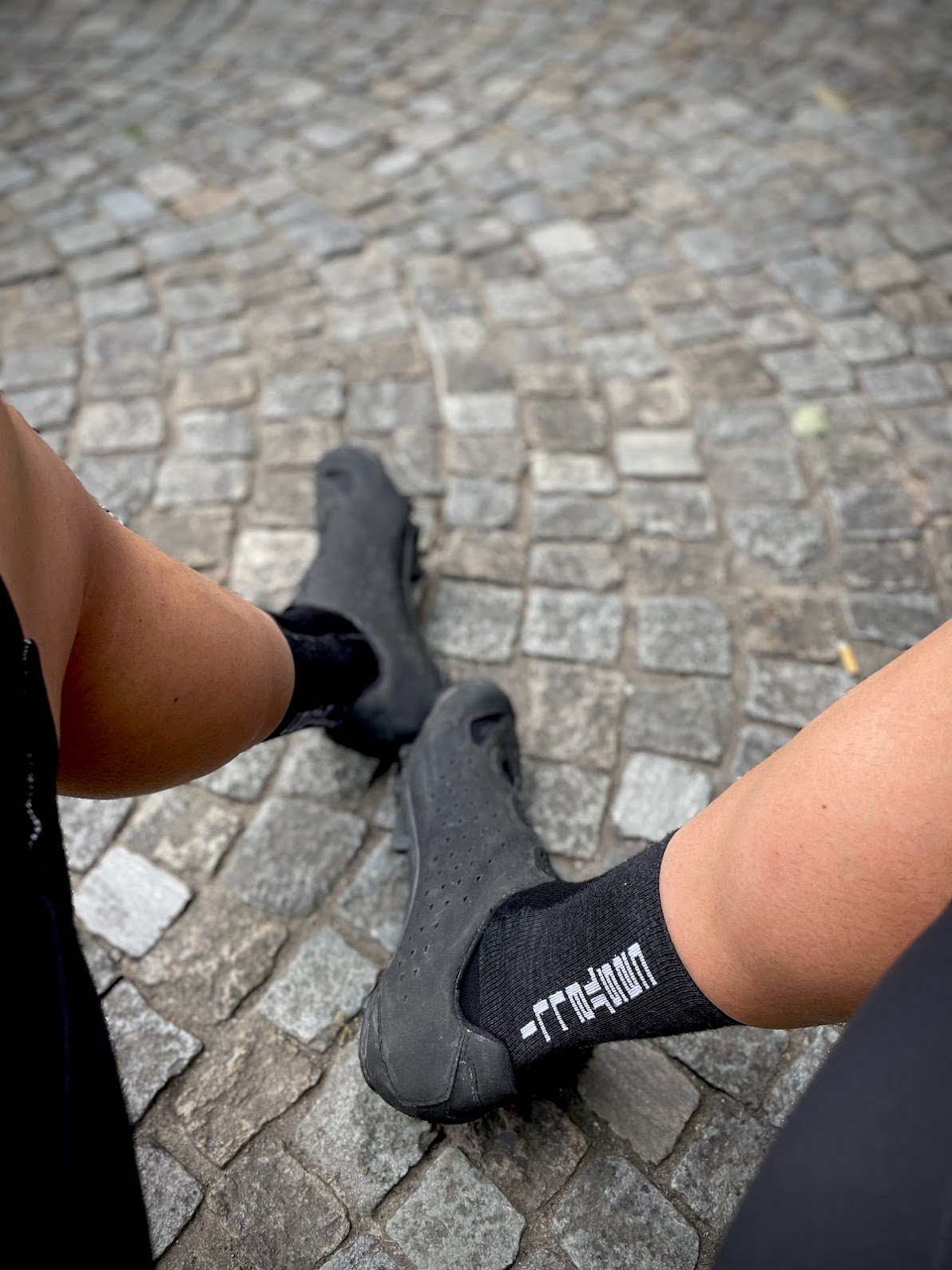

That really just happened, right?
I feel certain I’m conscious, but can’t be sure the explosion I just heard really happened. 04:45….really‽ Again.
GAAAAAAA!
The second explosion sounds louder than the first, probably because I’m conscious from the go this time. What time? 05:00. What is going on here? I feel fairly certain that was some sort of cannon, and wow, did it ever pack a concussive punch. It didn’t go off in Mals, I’m pretty sure; somewhere else in the valley. An avalanche cannon? If so, why, it’s August. There’s no snow around here.
After getting a bit more sleep - by dint of necessity? - I’m chuckling as the inn’s proprietor explains the cannon. In a nutshell - because lost in translation - the valley’s locals kick off weddings with a cannon blast for each side of the union. There was something in there about ex boy and girlfriends being present for some sort of light-hearted shared shaming situation, an transition from before to now. And the cannon are 2 miles away. Miles, I thought we were in Europe? Fascinating.
Smashing as much ‘substance’ - cheese and eggs - into my body this morning feels vital, but I’m not thinking “Wow, cheese and eggs are so dope. I forgot!” Actually, they feel heavy, and weird; not bad though. After last night’s nutrition fail, this is damage control. I take in 53 varieties of grain-based carb unit. a couple fruit units, zero vegetable units, on top of the cheese and eggs. Pouring over my routing options for the day, I’m not kidding myself: I’m won’t feel good on the bike today. That’s ok, I don’t ‘have to feel good.
I have to get to Tirano, and my first of four options I devised back in Ottawa couldn’t be easier to rule out; it’s insane in the context of actual reality. 178km, over 5,000 metres ascent, with some gravel up front around Lago di Cancano. Up and over the Stelvio, Mortirolo, and Gavia; too much today. Next.
If I drop out the detour around the lake, I can shave off 30km, but I’ll still climb each of the three passes, and hit about 4,500m gain. Nope.
That leaves two options: one is my RAIN route, which would be about 132km, and 2,500m up. Not really feeling that.
That leaves my ‘worst case’ weather route, which would take me up and over the iconic Stelvio. Around 95km and a bit over 2,000m climbing, the option feels like weak sauce, but I know it’s the right plan. Hey, if I wind up feeling great, I can add on another pass.
Buns in my ‘basket’, it’s cool enough at 09:30 to render my Perfetto and full leg warmers warranted. The forecast indicates rain is certainly possible, but looking like I’ll be ok on the Stelvio. My Slicker Pro jacket is up front, easy to access, keeping my buns company.
There’s a path along the river for cyclists to enjoy the lower slopes of the Stelvio apart from cars and motos. It’s a pretty ‘straight’ climb, so I can see the mountains through the gap most of the time. And wow, is this ever getting dope! I’m seeing snow - glacier - up high, and it’s wicked. Physically, I feel crap. But it doesn’t matter, slow will get me there. This climb is spectacular.
I’ve paused a couple times to chill for a few minutes, because why not? It’s kinda funny: I’m listening to a 99% Invisible podcast about some whacky architecture story as I move through a rugged environment with none of that. And now a lot of that; I’ve summited!
Yup, lunch time! The summit is buzzing with activity, and far more built up than I might have imagined if I’d imagined anything beyond a sign. I’m happy with my decision to park myself in Hotel Ristorante Perego for lunch, a simple spaghetti with accompanying crusty bread sticks; carbs on carbs seems appropriate.
The descent is a gem for sure, but as one might expect, the vehicle traffic mutes both views and fun-factor. I can imagine how fun it would be during an event, with the road closed to cars. In my view, that’s a special experience.
For the first time I arrive in Tirano with hours of daylight to spare, and ample time to wander around a bit, find a few food spots, and get my recovery going. My room has a hair dryer, which works great for further drying out my phone’s port so I can charge it up again. Electronics are great until they aren’t….
I’m really glad I had the opportunity to ride the Stelvio, and don’t feel bad about having to cut out the Mortirolo and Gavia. Now I know I need to come back to this region.
Day 5: Tirano → Lago del Garda



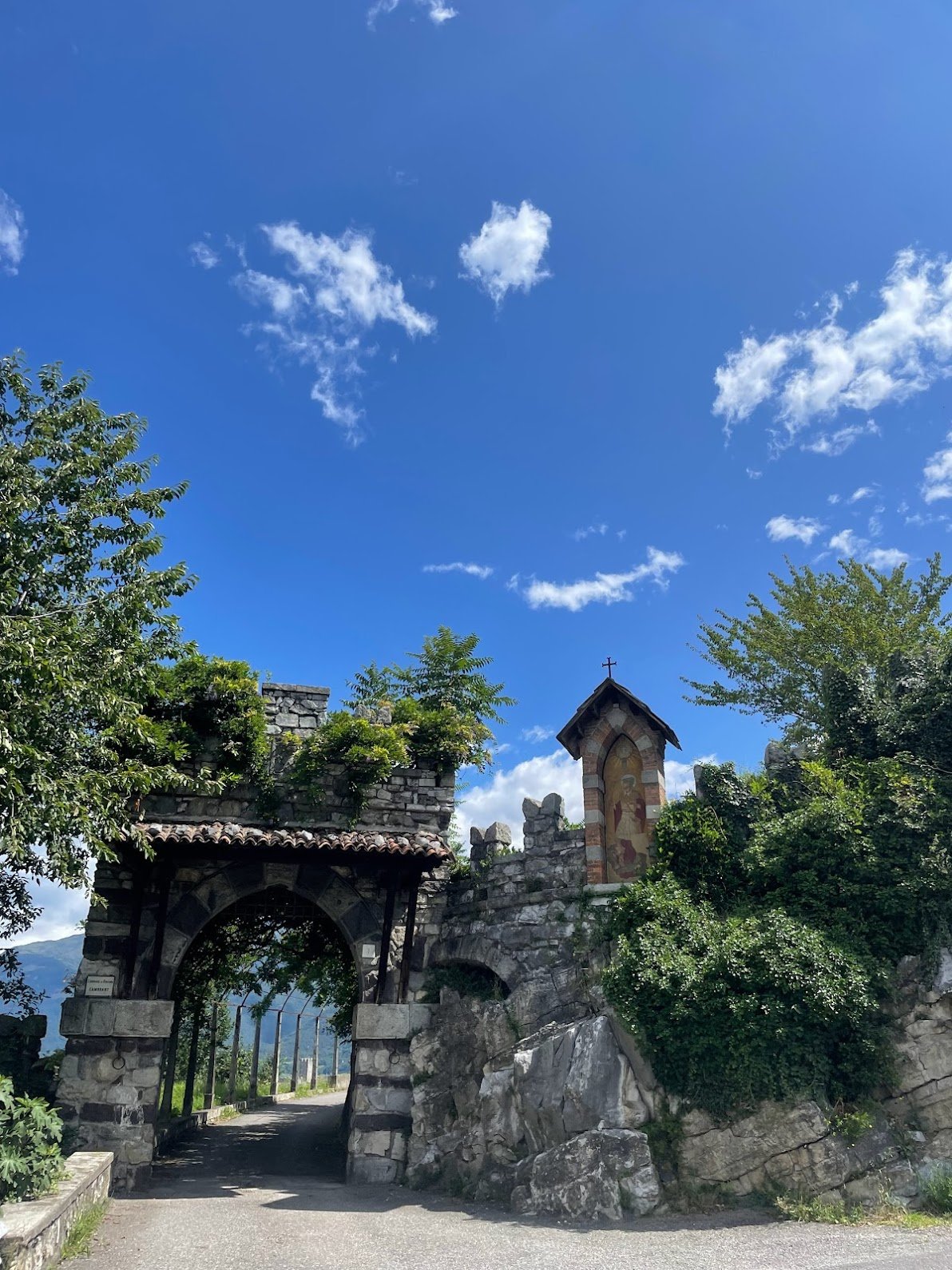

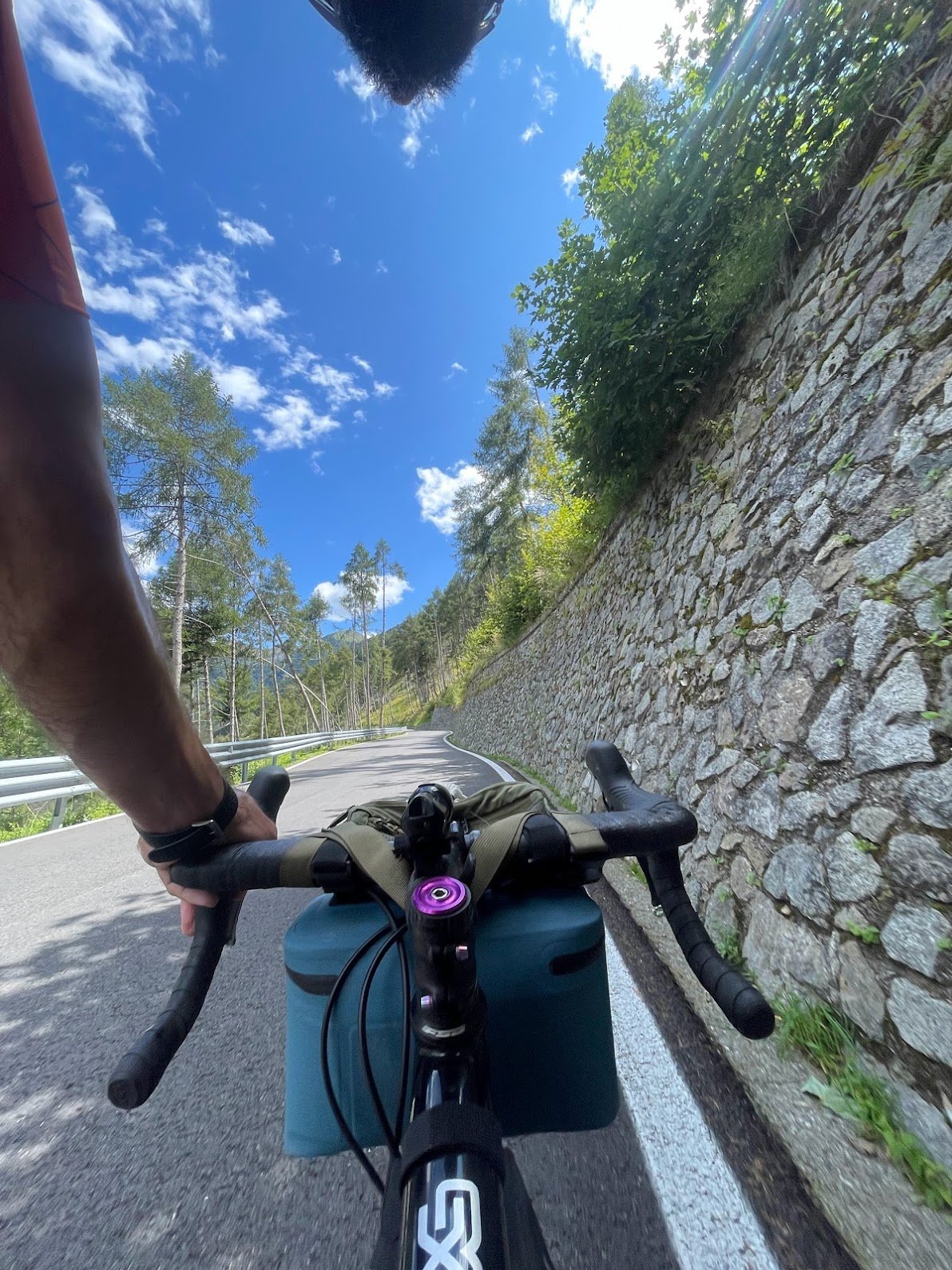
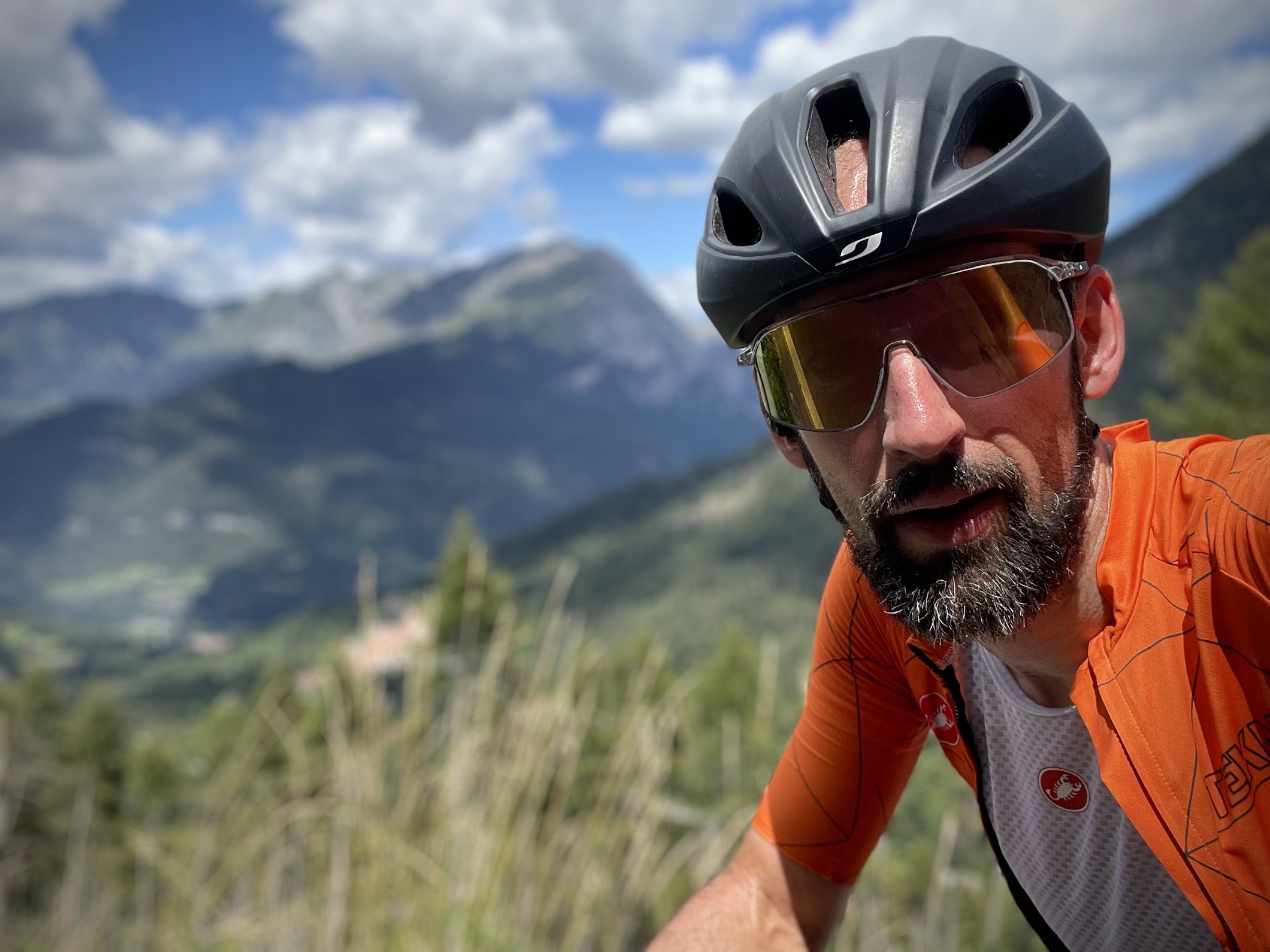

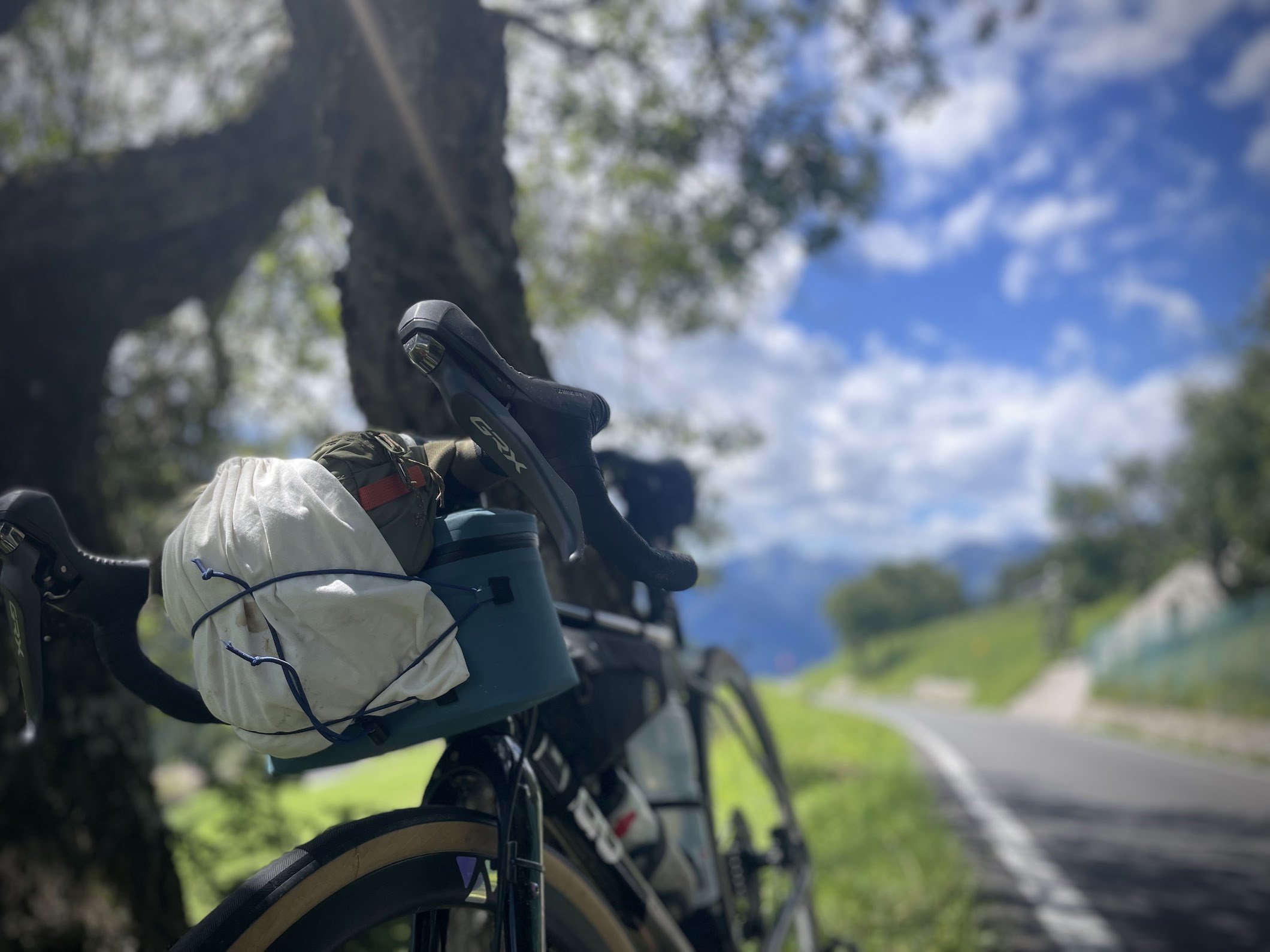

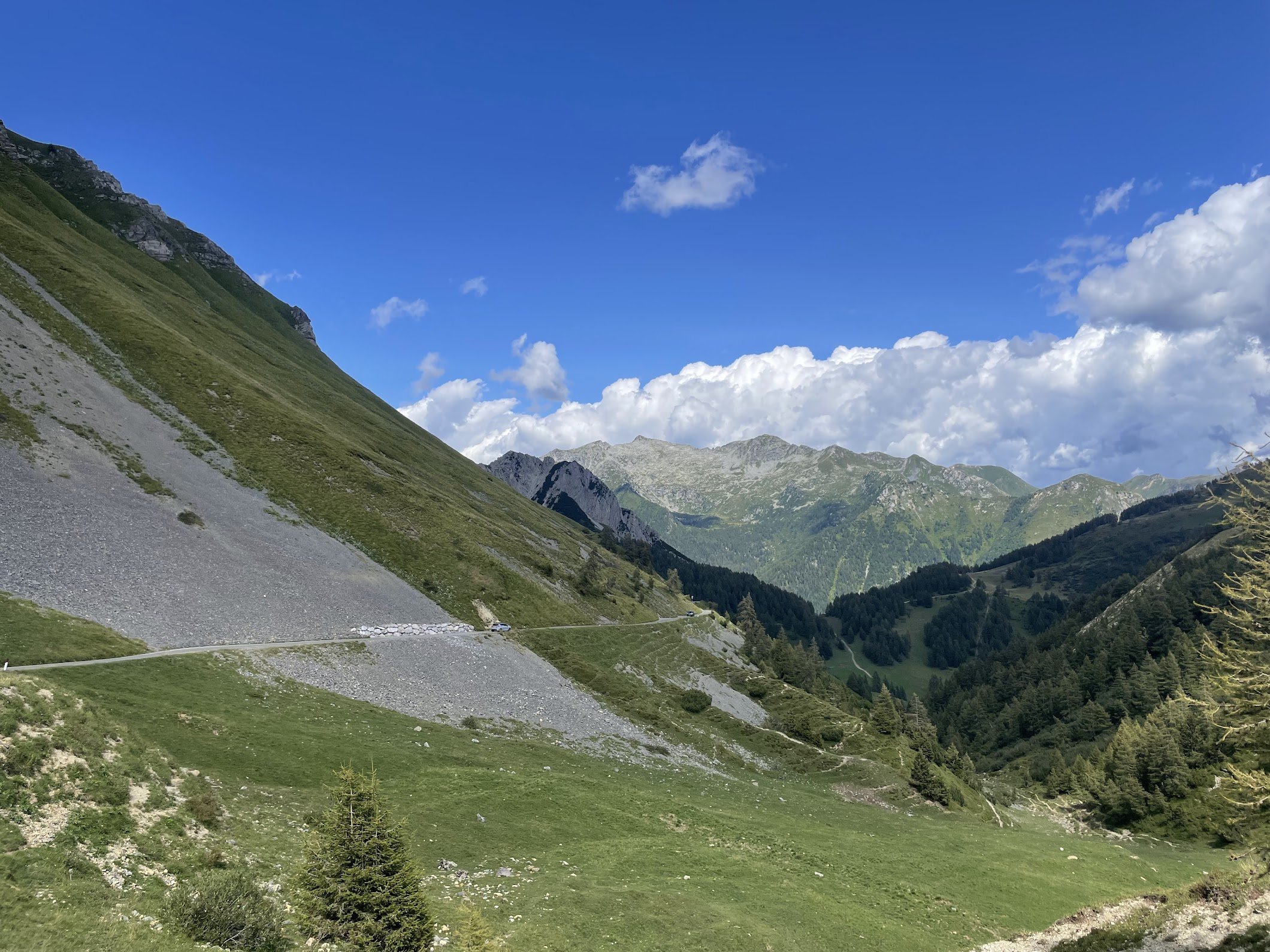
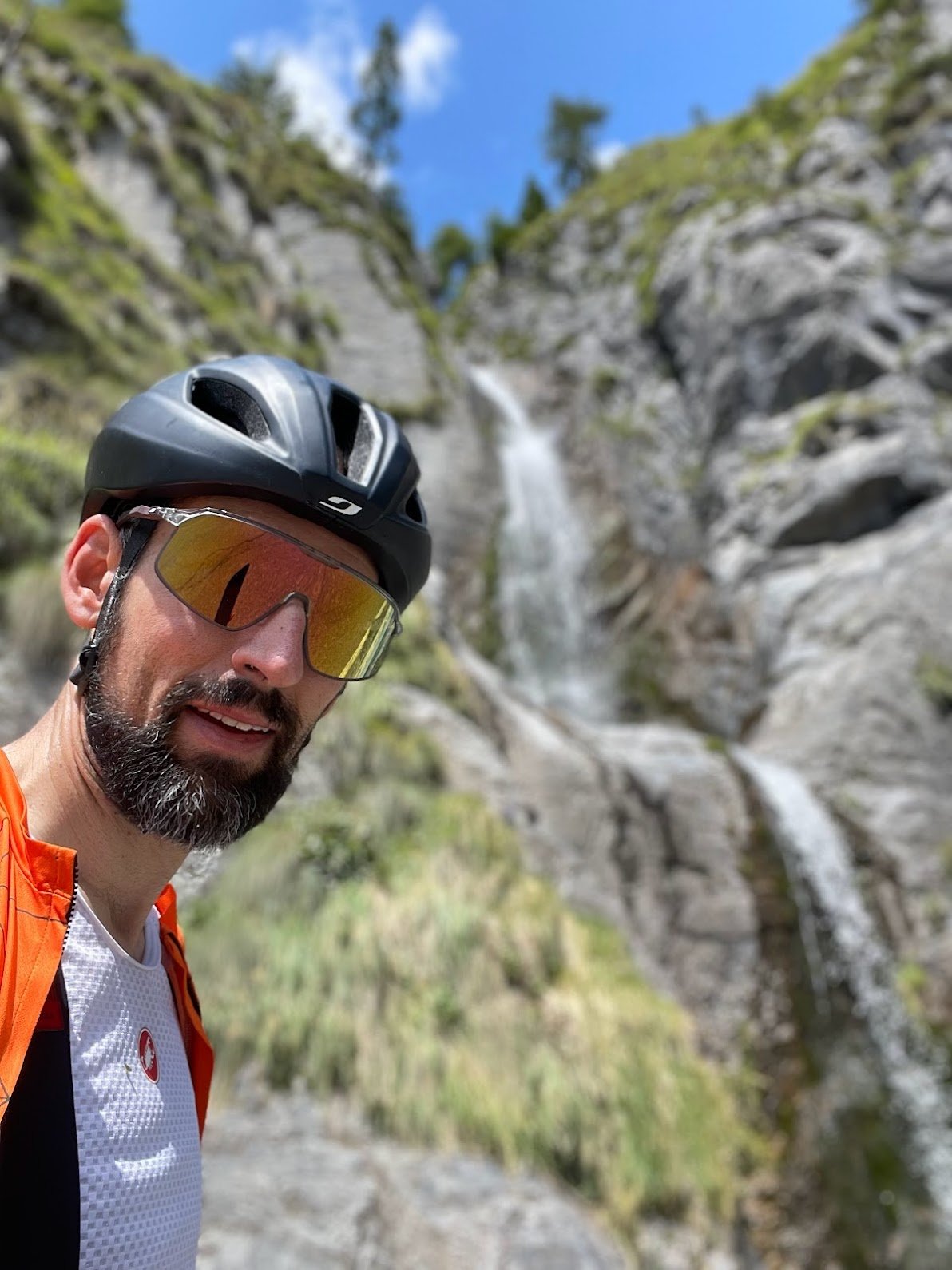

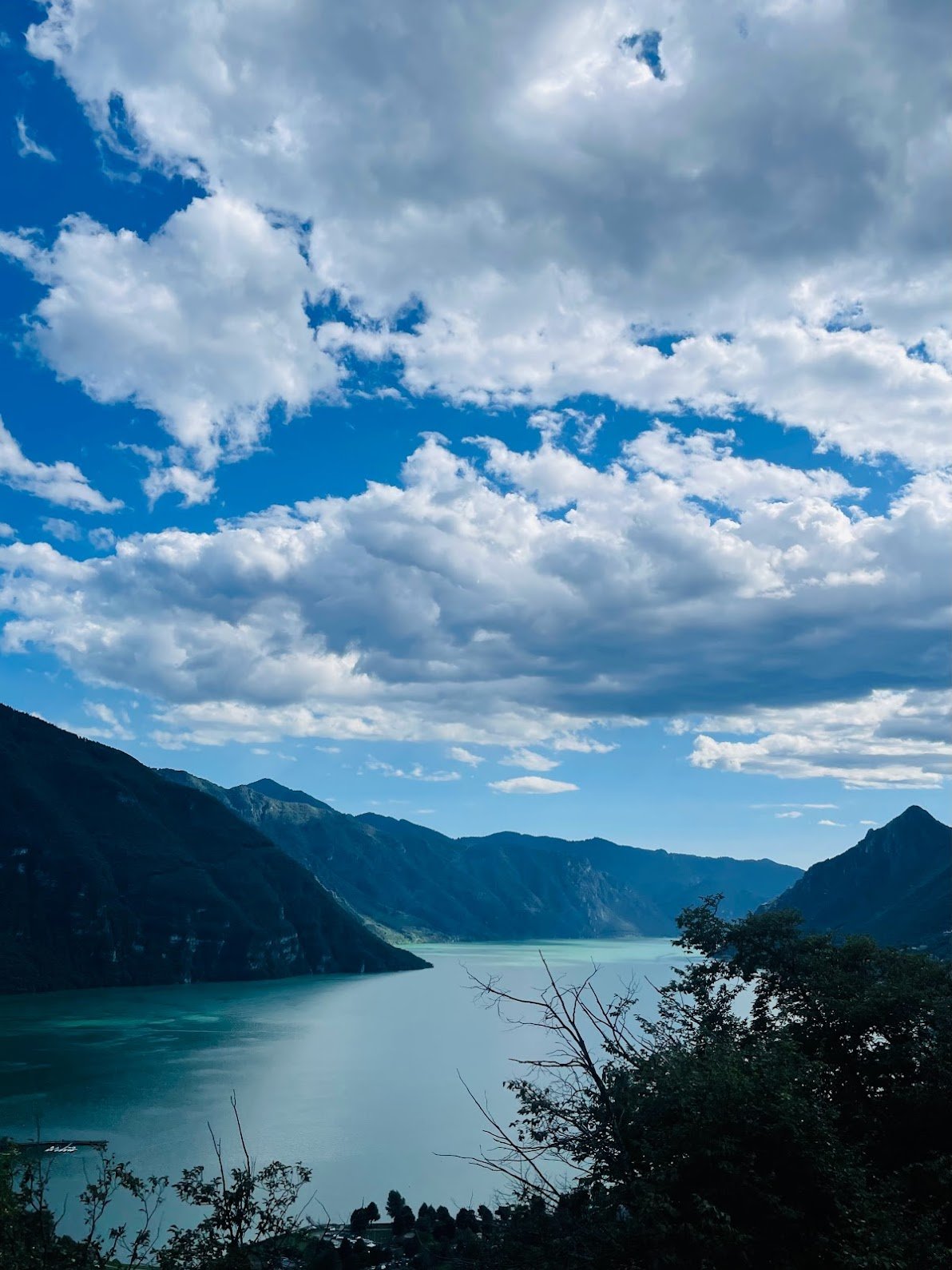

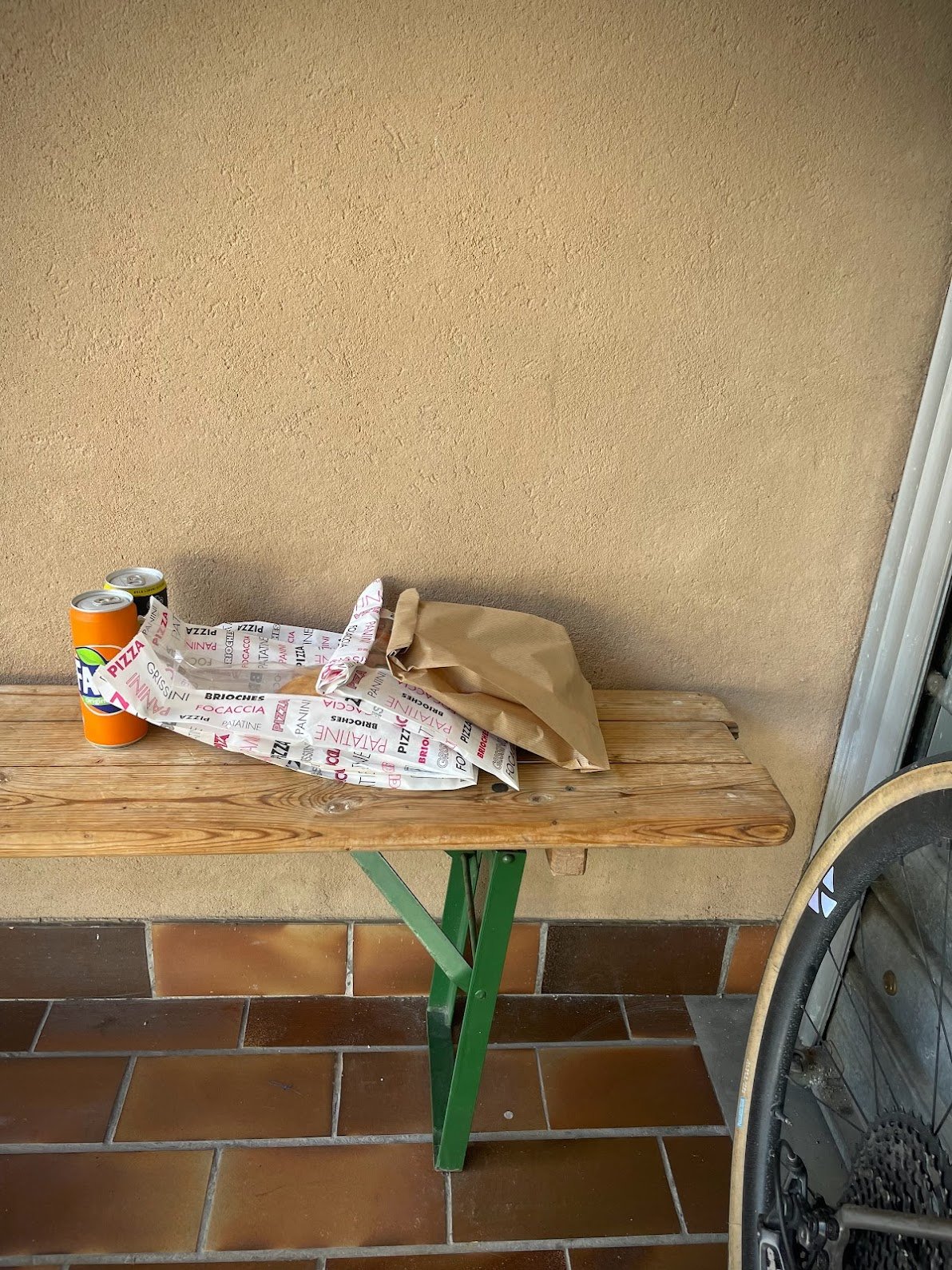
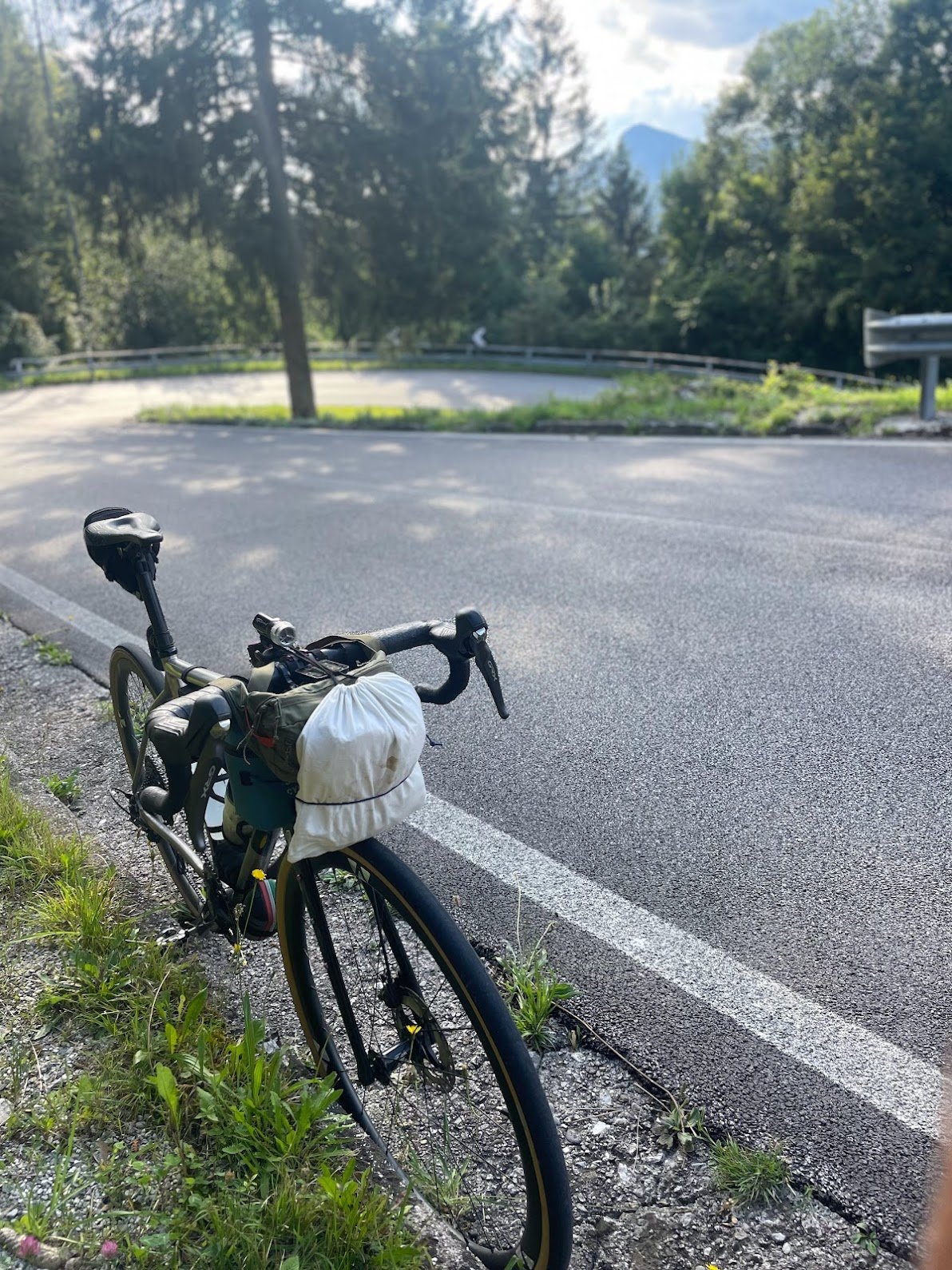


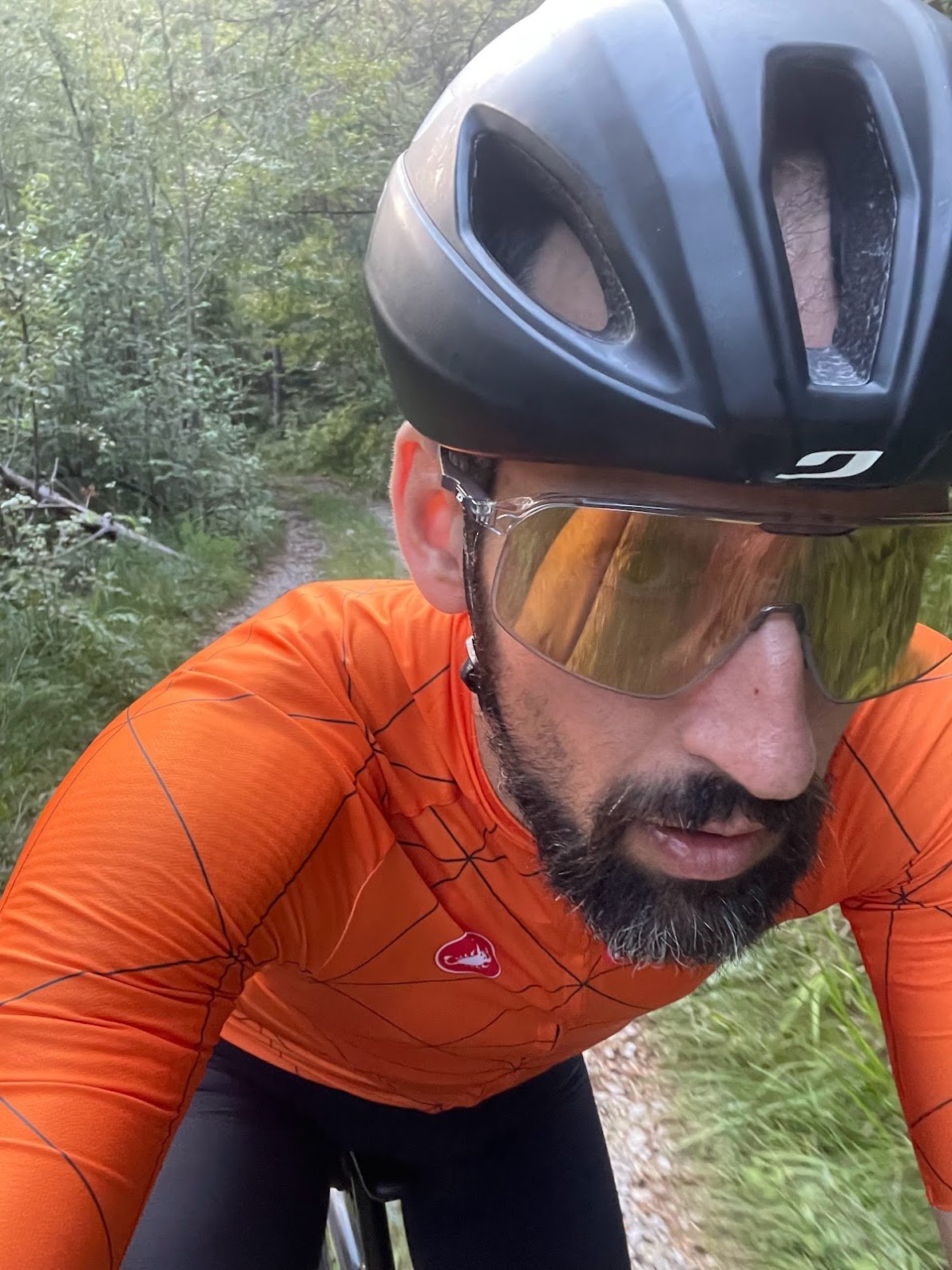
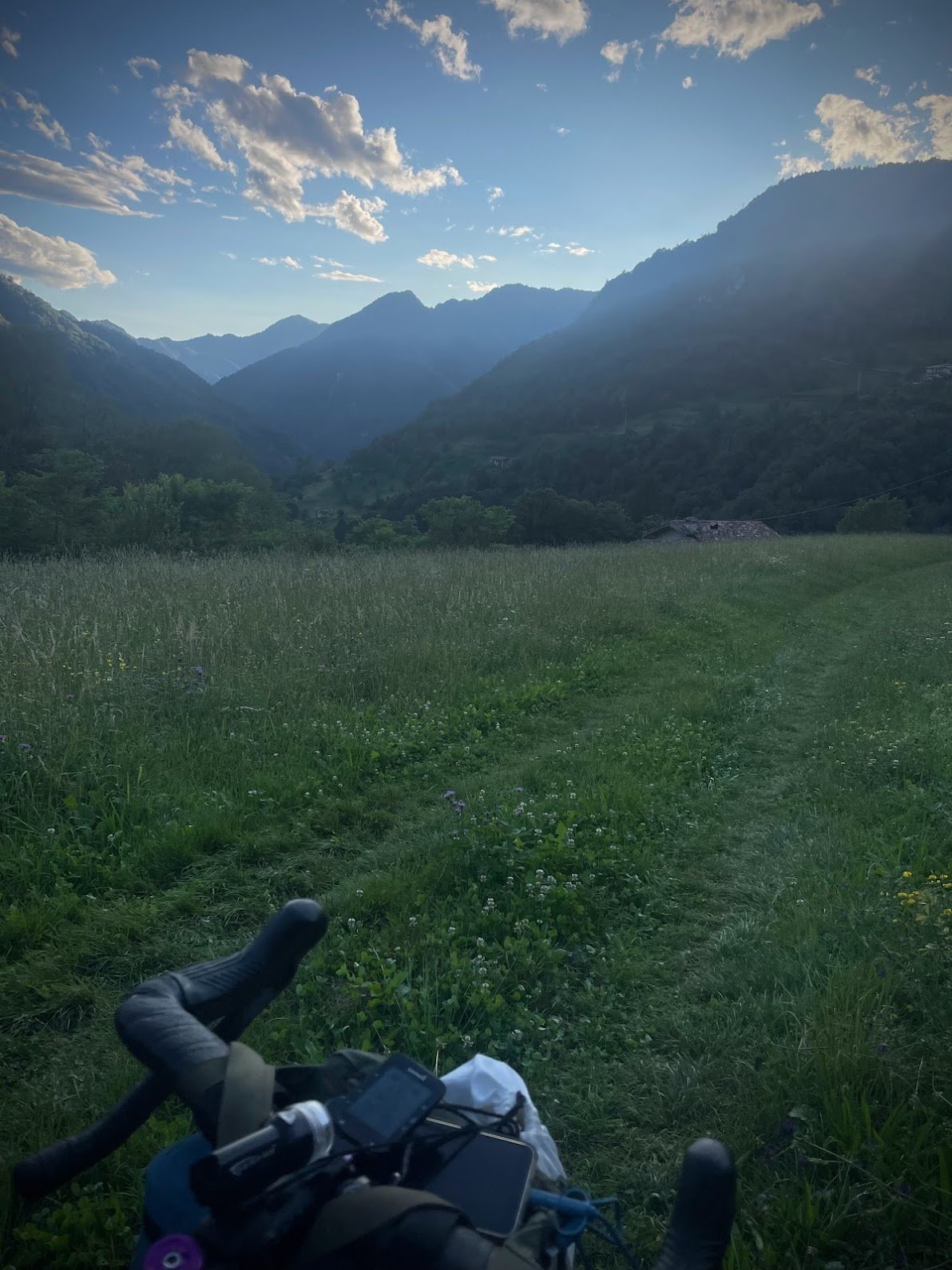
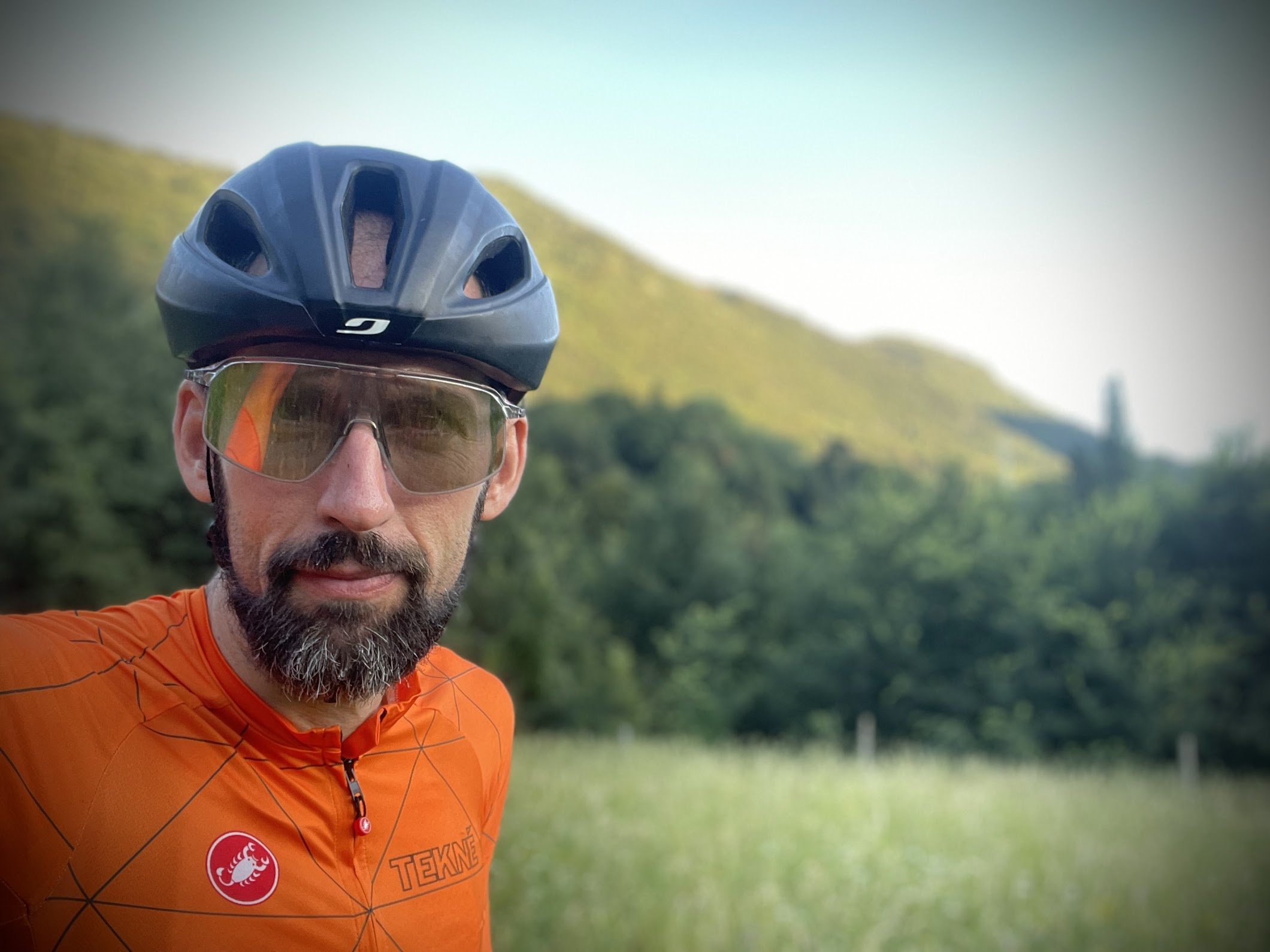
Eating plenty in Tirano after a relatively light day up and over the Stelvio, I feel good again, and the weather is perfect. Today a short descent delivers me to an increasingly scenic 11.5km climb at an average of 6.9% up to the ski town, Aprica. I’m delighted by the town’s vibe, very ‘alpine sport chill’. A shallow valley descent more than 40km long brings me to the foot of the Passo Crocedomini, which will ascend for about 25km to just over 1900m. It’s a beauty, low-traffic, and at 7% average grade, doesn’t feel hard.
Another long descent, I hook around the south end of Lago d’Idro, then the town of Idro itself, which I have to assume is the namesake of Castelli’s rain shell for pro racing demands (the next-gen jacket is the Slicker Pro, which you’ll see me wearing and carrying in some of the photos). I’m getting nervous about finding food now, as I’ve seen so few options while ticking over the kilometres. If I don’t find something before I get to my night’s destination, I’ll be screwed, again.
Jackpot! A bakery is open, set back from the road just within my field of vision as I roll by. I don’t hold back, purchasing more than I can eat now; it’s been a light day food-wise. But now the pressure’s off; I’ll be fine tonight, and still have a good bit of time to get to my destination, a hostel - refuge type situation up-range from Lago del Garda.
Lago del Valvestino, a fraction the size of Idro, is skirted by a beautiful road, which I’d certainly be happy to recommend and return to. Just after clearing its southern extent, my Garmin confuses me; it’s not at all clear whether I’m supposed to be turning off the route. Checking the offline route on my Strava app, it looks like I was supposed to turn off back a bit, so back I go. 15 minutes later, having plodded up a forest track, don’t I find myself at a gate with an explicit sign warning trespassers off. As the map will show, I’m about halfway to the road I’m trying to connect to when I turn back. It’s a tire management situation now, descending with load over a rocky trail I can only guess MTB riders use from time to time. It sure would be cool if we could filter Strava heat maps to cut out tracks ridden on MTBs when riding skinnies like my 35mm Rene Herse Bon Jons.
Arriving shortly before dusk, a restored farmhouse sits on the hillside facing west, a welcome respite after a long day, and the stress of finding food and my way.
Though I’m still in my kit two hours after arriving, it’s delightful conversing with the proprietor, Adrea, and the two French friends on a bit of a trekking holiday for the week. Adrea purchased the property a few years prior and restored the house using traditional construction methods and materials from the property. The result is beautiful. If you’re in the region, and fancy good conversation in a peaceful location, check it out. I’d be happy to return. And I’ll mention that I wound up recommending one of my favourite books to Adrian, which he purchased and loved: The Spell of the Sensuous. If you’ve read it, let me know!
Day 6: Lago del Garda → Verona → Florence
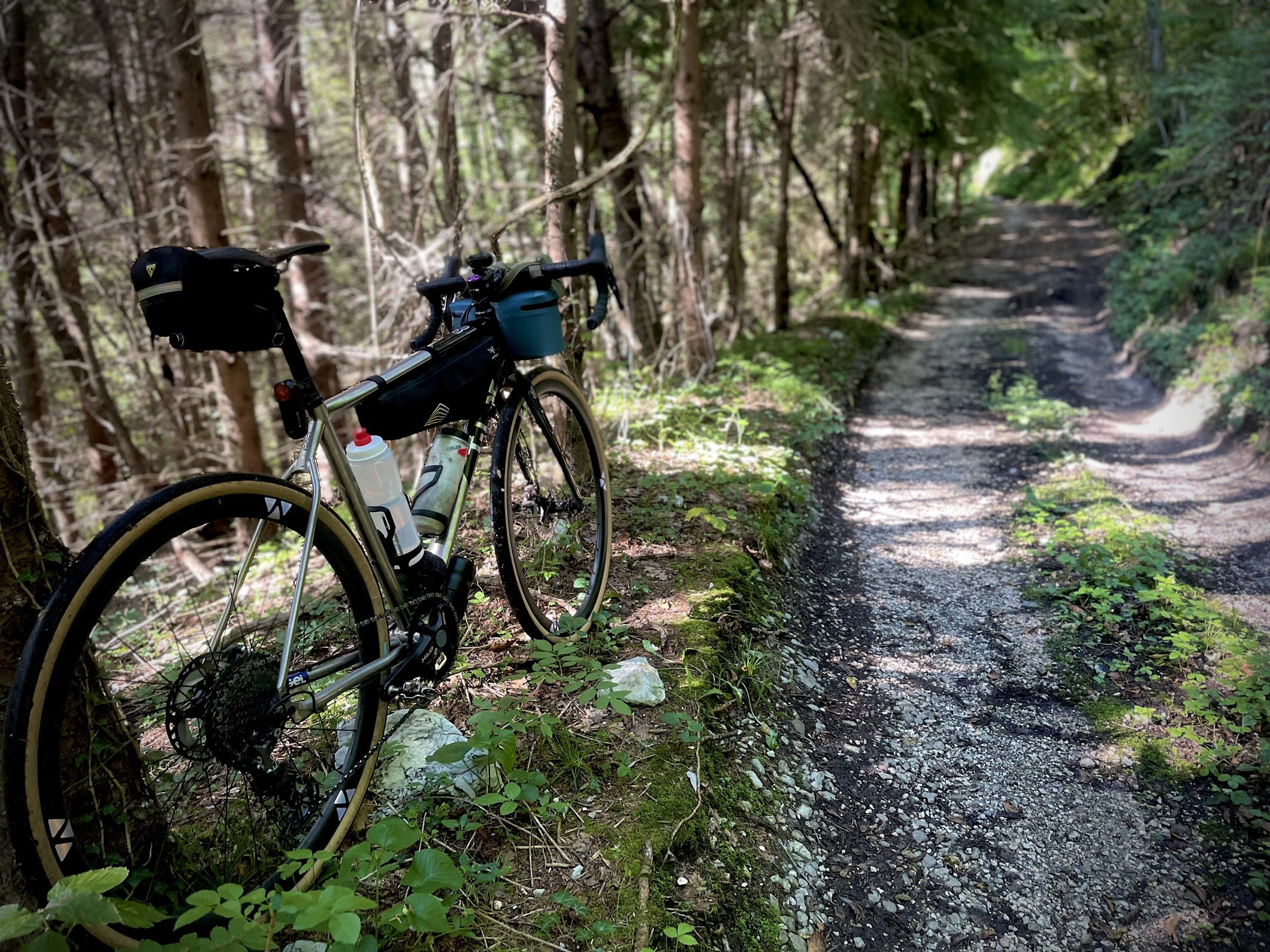

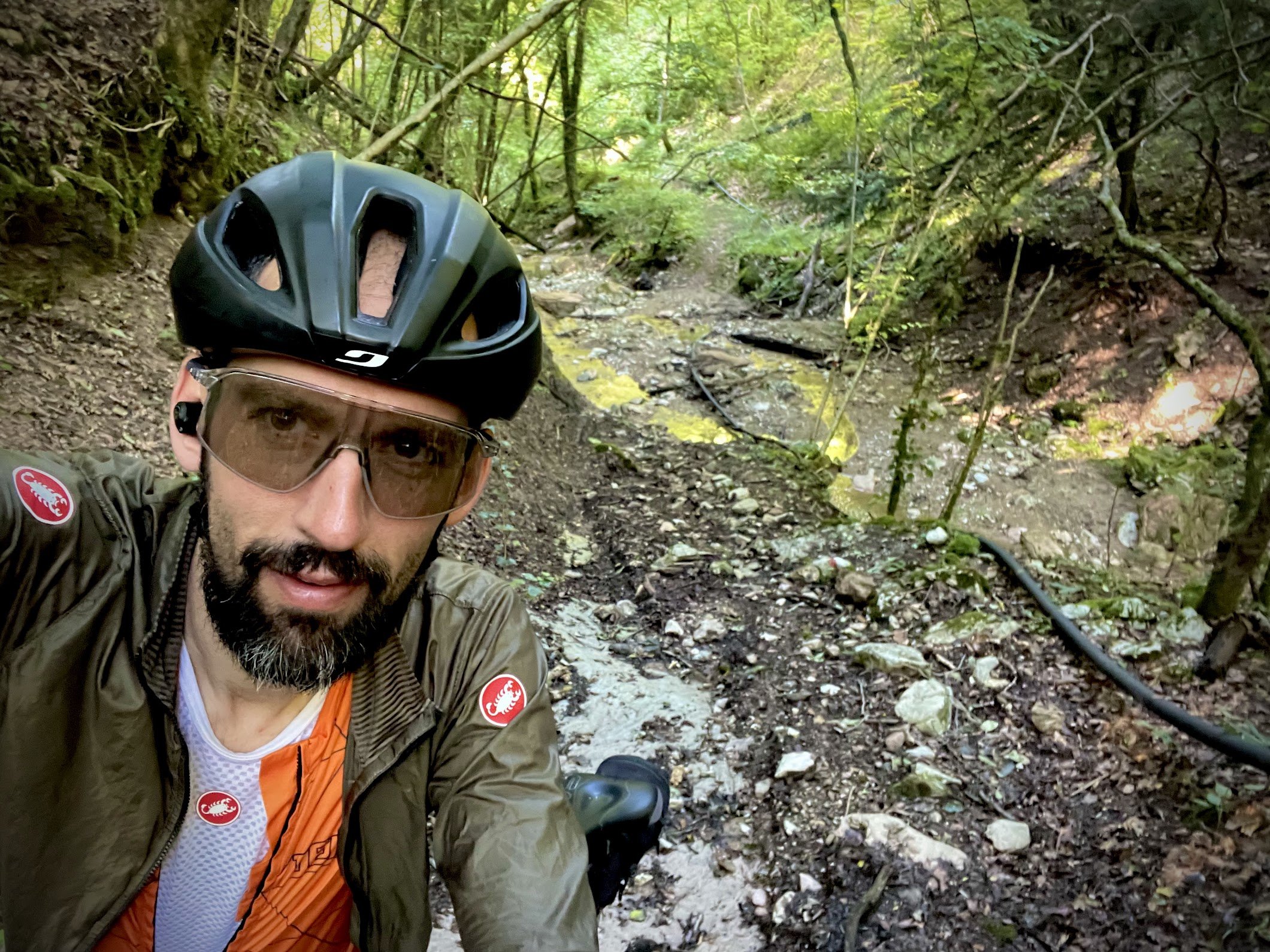

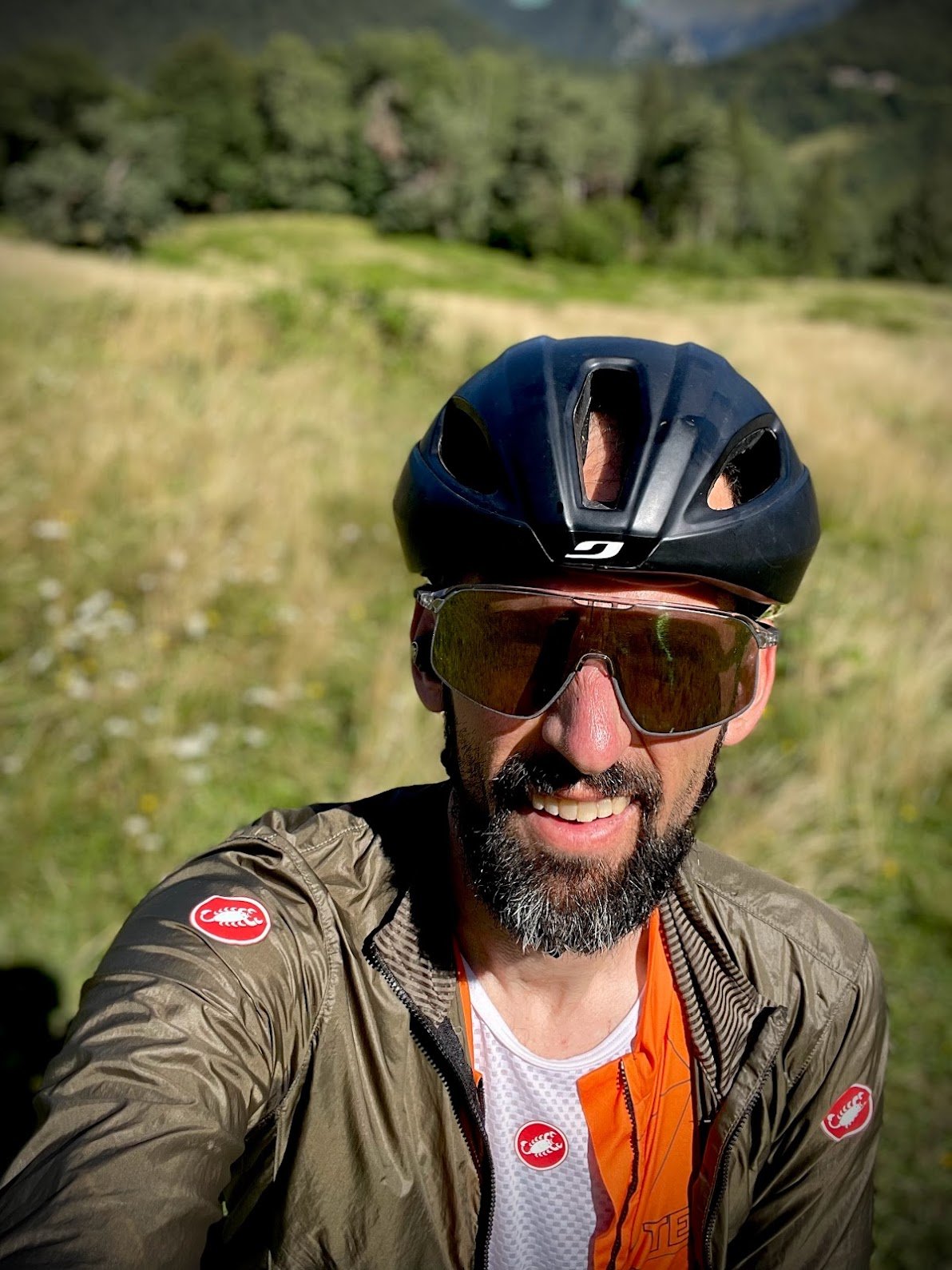






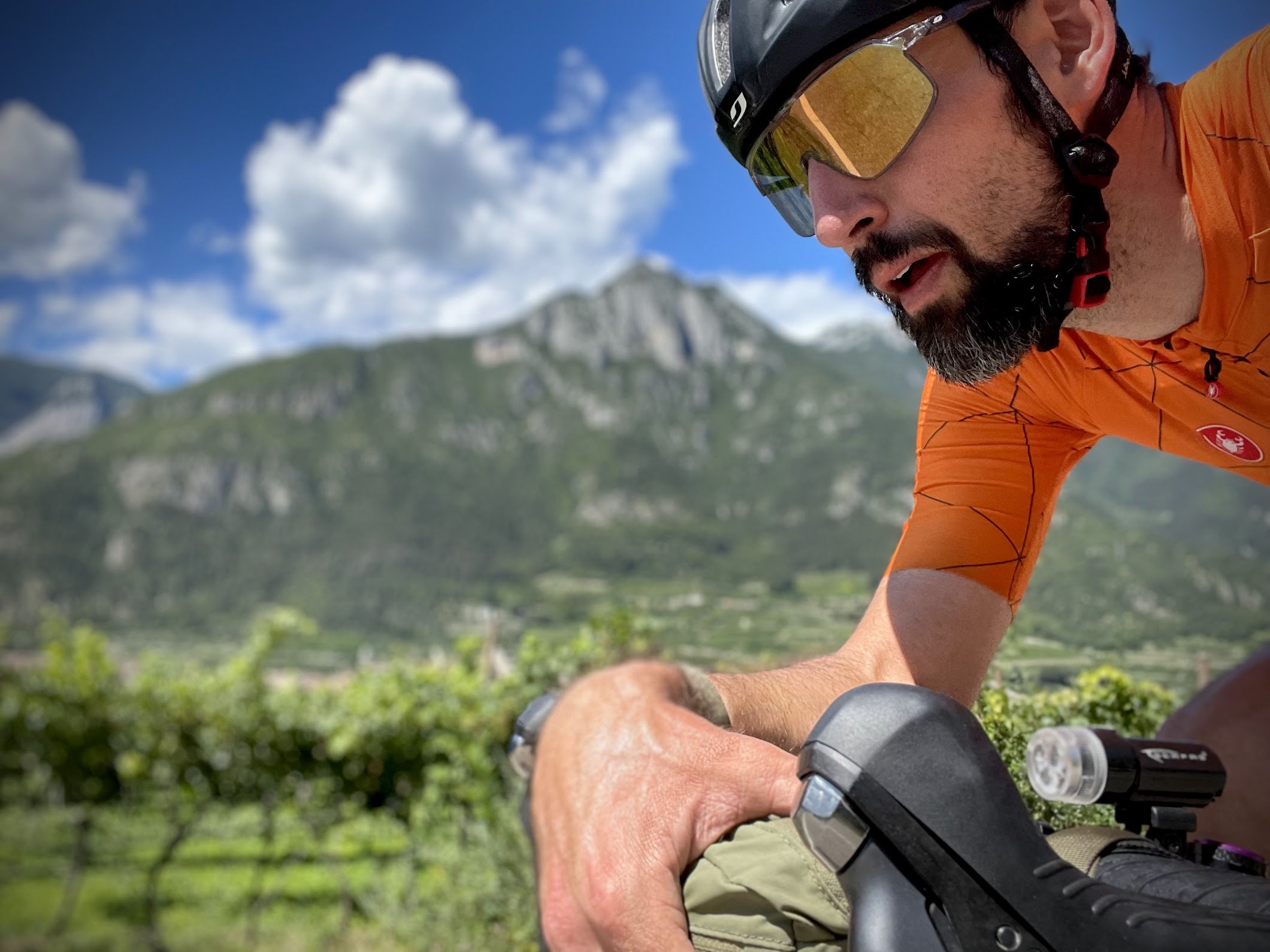




Up when I’m up, my hope for today is to enjoy some decent food and scenery around Lago del Garda, and arrive at the train station in Verona early enough to sort out my bike and arrive in Florence at a reasonable hour. I could make the day’s route more or less climby, and opt to go with less, expecting the train logistics to provide enough challenge for the day.
My Strava heat-map suggests I can connect into the road that circumnavigates Lago del Garda via a few small roads. Looks good, let’s roll.
Road has become trail, and I’m hiking. I guess this was a Roman road, once upon a time; surely it must take umpteen hundreds of years to erode a route as far down as this one has come. Making it out to an open field, an actual road in view, feels like a small victory. Alongside the fact that my lower back doesn’t hurt today - a first since I began in Venice - today is coming together nicely.
The last step down to the lakeside road was full-brakes-steep, hardly a surprise. It was also one more among many occasions on drop-bar bikes that have left me unhappy with 160mm rotors. I’d intended to adapt 180s to my 2023 T-Lab X3 this year, but ended up opting to postpone to winter. Managing brake heat to avoid boiling fluid and warp rotors is annoying.
Pausing to pack my Aria shell jacket away, my lower back ‘clunks’, and I feel instant dread. This has happened before, and I’ve never been able to un-clunk it. Days of stiff lower-back was annoying, but this is pure shit now. My SI joint slipped (or whatever that is), my nerves freaked out, and the joint is now mangled by spasmed muscles. Standing hurts like hell and my mobility is reduced, which is scary. I can’t bunnyhop now, and it only really feels ok to sit and pedal. I still have to make it to the train station - by 3:30, I think, for some reason - so I focus on the mission and hope I’ll actually be able to move around off the bike as required once I’m in Verona.
I seem to have all the luck with train-bike transfers. Between France, Spain, and Italy, I’ve yet to have a smooth experience, and only in Spain have I not had a train station staff member intentionally screw with me. This time around, the requirement moves from ‘a bag for your bike’ to take a high-speed train, to ‘a bike case’. To meet the first requirement, I found a dumpster behind a Ducatti dealer and collected a couple heavy duty plastic bags - totally sufficient to contain a partially dissembled bike. Nope, not good enough. And there are no ‘slow trains’ to Florence today, so it’s fast train or nothing. Which means I HAVE to sort something out, or else sleep at the train station.
Venice to Verona, the long way.
I ride to a Decathlon store 10km away, having been told last year in Lyon that they sell the bags required (for French trains, at least). A staff member from the bike department jumps through hoops to try to help me, as they don’t actually stock the bags (referred to as ‘housse’); online sales only. He calls every bike shop in Verona, asking about bike bags or boxes, and there’s nada. Not a quitter, he pulls out three folded Decathlon boxes (smaller than a bike box, each) and a roll of narrow packing tape, and sends me off with certainty that I canmake it work. What a legend.
Am I ever glad to have my mini Swiss Army knife with me as I cut boxes up on the train platform. Others around are surely intrigued by the spectacle on display. I couldn’t have predicted being in this situation, and I’m glad I have plenty of experience to draw on here. Three boxes become one, and I’m done with plenty of time to await the train stress-free. ALL I have to do is get the package into a luggage space in one piece. If it falls apart after it comes off the train in Florence, I can deal with that.
Wow, does it ever come apart in Florence, but not until the very end of my 2km walk carrying it to our hotel. As I struggle to see whether I’m at the right spot, 20:30, parts are beginning to fall out the bottom of the box. Danielle and the kids walk up, bags of food in hand; it’s done. I’m here, I’ve made it. My back is whack, but otherwise, I’m good.
Cages and Keys
This tour felt like a reasonable leap to take, a progressive build from the 2 and 3-day missions I’d done in France and Italy. Once I’d locked in my accommodation bookings, the trek felt real; it wasn’t a matter of ‘whether’, but ‘how’. In other words, I felt confident in my ability to connect the points up, even if the weather was bad.
People do tours like this all the time, there’s nothing novel about it. The most challenging part is plotting routes without much in the way of local knowledge, and also aiming for a particular vibe. If one’s objective is to plot routes that will be whoppers to pull off each day, that’s kind of easy. I mean, it’s ‘easy’ to set yourself up to operate in mission-mode each day, and wholly exclude the intention of enjoying what you’re doing while you’re doing it. It’s harder to frame up days with the intention of enjoying the time on the bike, knowing that it doesn’t take much to derail good vibes.
I committed to this intention, knowing I was going to have to be more flexible than I’ve been before; I’d have to roll with the punches. My confidence in being able to do that was rooted in lived experience, and my mindset was going to be my weakest link. Meaning, I knew I’d have to make decisions with minimal influence from metrics and the sense of needing to ‘prove’ or ‘pull off’ anything. This would be my first exploration of the Veneto and South Tyrol, equally as much about learning as doing. What, then, did I learn? I made a list.
Flying is not ‘recovery time’.
As hard as it may be to actually do, heading into extended travel prepared for long hours sitting in planes, trains, automobiles and boats will set you up to enjoy your time on the bike, versus set out in damage control mode. I got this wrong in a few ways:
I rode Ottawa - Montreal to fly out the next day, and did so in time trial mode. I figured getting in a big ride before two days off the bike made sense, to sort of prime the pump. But I didn’t also ensure I coupled the ride with a bunch of stretching in advance of heading to the airport. Even if I had done, that might not have been enough to mitigate the impact of so much sitting to come, which wound up straining my lower back.
A better approach would have seem me skip the ride to Montreal, and a shift in focus to activation of my core to mitigate all the sitting to come, coupled with stretching. In other words, tuning my self up for the flights, the opposite of thinking of them as ‘recovery time’. Had I not ridden to MTL, I’d have had plenty of time to do bird-dogs, dead bugs, side planks, squats, all of which are effective for firing up all the nerves that drive functional mobility and stability.
Navigation tech needs to be dialed, actually.
I screwed up, and it wasn’t the first time. After spending a week preparing my routes and alternatives for bad weather days, I missed a vital step: loading the base map onto my Garmin for Italy. This meant that I had a ‘bread-crumb’ track to follow, but my 520 Plus was trying to recalculate routing constantly, which loaded its battery extra, and interfered with my ability to actually see where I was supposed to go. Compounding this issue, my Garmin’s micro USB port was janky, which made charging intermittent.
The tricky thing for many of us is that we don’t need navigation from our cycling computers most of the time. Riding locally, I rarely need to build a route to follow, and when I do long routes linking across to the Laurentians, for example, I can use my phone to navigate, since there are few turns to make, and the terrain is familiar. For long days covering new terrain, the intention to have time for a bit of downtime at the end of each day, and avoidance of a persistent sense of urgency (‘mission mode’) must be coupled with minimal time-wasting elements. A cycling computer’s navigation functions must be reliable, its battery life must be suitably long, and charging it mustn’t involve faffing.
Before heading out on an adventure, make sure you have the base map loaded for the region you’re headed to.
Have backups for backups. I had my routes loaded to my phone’s Strava app for offline use. The app wasn’t without glitches, but this generally worked well as a backup. When off-route, it tends to be easier to figure out what to do with the phone than with the head unit.
I had an external battery for phone and Garmin charging. The problem was the janky Micro USB port on my Garmin, which drove me to conserve energy each day, and rely on my phone for nav when I could. When it was raining, this didn’t work.
My backup’s backup’s backup was road signs. I didn’t have to resort to this, but I would have been ok relying on road signs over the latter part of each day. If you’re riding off-piste routes, this won’t be an option, and your nav set-up will have to be that much more reliable.
Difficult to manage nav systems cost us minutes that add up to hours. I was navigating with my phone when I missed a turn and went more than 5km up a climb in the wrong direction. That cost me vital time at the end of the day for finding food and recovering. Glitchy nav is also distracting, and can pull our attention away from the road and hazards ahead. It’s important to work out how to set up your system to minimize time spent looking at it. Sonic alerts for turns coming can be great, but not when they are going off all day because the computer takes every waypoint as a turn.
Food carrying capacity needs to be A LOT
I screwed this one up to a degree I’ve not before, and this certainly has to do with the fact that this was my first 6-day tour. I’ve ridden far more than 6 days in a row, big hours each day, but always from a home base where I had access to all the food I’d need. During this tour, I never knew when I was going to stumble across a decent source of food next, and my on-bike storage capacity was very limited. I had my pockets for bars, but tended to reserve them as back-ups to real food. I wound up spending far too much time each day scanning the roadside for food options, which was distracting from traffic and navigation, and inhibited my ability to ‘just ride’. In the absence of a sizable storage space for food like pizza, I was preoccupied with the need to locate a food source too much of the time. “I have to find food soon” distracts from enjoying the riding, and it’s not really necessary. I bodged a way of carrying more food after a few days, but the set-up wasn’t very stable. The night in Mals I went to bed on two granola bars for ‘dinner’ was the low-point, and this unequivocally undermined my ability to ride well the next day.
For my next tour, I’m eyeing dedicated food-carrying options, honing in on a few options.
I’ve seen Oveja Negra’s Lunchbox Handlebar Bag in action, and I’m keen on its streamlined fitment and 3L capacity.
The Chuckbucket Snakbag X 2, would add another 1L capacity per side, shielded from the wind by the handlebar bag system. I’m kinda keen on stashing my phone in one of these too, instead of my jersey pocket.
I’ve been imagining an aerodynamic handlebar storage pod for years, and it turns out Cyclite makes one that looks fantastic. Aero matters as the hours pile on, even when you’re going ‘slow’.
Extra Extras, Things I Missed, Things I Loved.
I flew to Venice with my Post Carry Co. Transfer Case containing my bike, tools, and clothing, under the 23kg weight limit for a ‘oversize luggage’. In a ‘personal item’ sized backpack, I carried a laptop, my shoes, electronics, and some clothes. My helmet didn’t fit, so I had my son carry it in a shopping bag as a personal item. By most riders’ standards, this is a very minimal setup, but I still managed to pack more than I needed. When you take along a ‘bike case’ and are accordingly charged often ludicrous baggage fees, there’s not weight limit, or it’s way high. For an oversized piece, which the Transfer Case qualifies as, provided you don’t divulge there’s ‘a bike’ inside, the weight limit will tend to be 23kg. It’s easy to weigh your total package at home before you fly out, but after that, scales won’t tend to be accessible, so it can be tricky repacking everything just right, especially if family members have done shopping and are looking for free space. Thus, packing just the right amount of clothing, alongside tools and spares, is a bit of an art.
I was a bit freaked out by a crazy rain forecast, but managed to restrain myself, aided by the 23kg weight threshold I was working with. Post hoc, here’s what I brought I didn’t need, and won’t take next time I head out for a summer trip in Europe:
Castelli Sorpasso RoS knickers - I thought I’d want to take these if it was rainy, but when push came to shove, this felt like too much of a commitment to bulk, which I didn’t really have bike-storage space to accommodate. I left them in Venice, and took leg-warmers instead.
Big rubber ski straps - Ok, these are cool, but also kinda heavy and bulky. I didn’t need more straps, I needed more bags.
Effetto Mariposa Flower Power chain lube comes in a 100 and 500ml bottles; I brought the 100, along with a 30ml bottle for the 6-day tour. I used the lube after one rain day, then only had to lube my chain again twice over the entire month of August. I would take 30ml for future trips, which ought to easily cover more than 110 hours riding (the total I rode in August). Flower Power allows you to maintain a clean chain, similar to a hot-waxed setup, which I find valuable while travelling.
Base layers - I brought two Pro Mesh base-layers, but only one was required. Once it gets properly hot, I stop putting a base layer on, and these are simple to wash in the shower and dry overnight.
Neck tube - I brought a thin merino buff, which is an essential piece in winter. I wore it on the way down the Stelvio, because I had it; not necessary. My thinking was cold rain would call for it, but realistically, in that scenario it would end up being another piece to dry at night, and potentially more trouble than it’s worth. For spring, fall, or winter trips, certainly I’d take it.
Charging blocks - Charging electronics is a bit of a grind for folks crossing outlet standard borders. I purchased a universal black at the Lisbon airport with 3 USB-A and one USB-C port, which rendered the multiple charging blocks I packed redundant. This universal block works well, but is HUGE, and rather annoying to accommodate on the bike.
What about things I didn’t bring, but wished I had?
Local currency - While it’s easy to get by in France and Italy using something like Apple Pay for contactless transactions, paying municipal tax at your accommodations requires cash. I knew I’d need to hit a bank machine / ATM early on, and assumed I’d see them all over the place over a 200km day. Not so. And those I did find were closed; what? It took all day to find a ‘bankomat’ I could access, and the hunt was distracting and time-sucking. I saved some Euros for next time.
SIM card - The cost of cards for data and cell service is far cheaper in Europe than Canada, but not all airports have vendors, and if they do, prices might be considerably higher than elsewhere. I bought a TIM card in the Venice airport, which is allegedly one of the better places to purchase from. I aim to purchase a SIM card before I fly out next time.
Aside from my Garmin, none of my tech/kit let me down. A number of items were simply rock-solid, while a few exceeded expectation.
My Lake MX238 shoes did their job all day without causing any foot discomfort, which was vital, since I didn’t bring anything to change into. This is normal for Lake shoes, but not typical for bike shoes in general.
Castelli’s Premio bibs were still fairly new to me when I started, and began my new gold standard for comfort. If they were dry in the morning, I put them on instead of my San Remo suit, my previous favourite. I also crashed in them later in the month in Umbria, and they didn’t even show a sign of abrasion.
Effetto Mariposa CaffeLatex tubeless sealant performed flawlessly, which is no small feat when it comes to Rene Herse' ultra-supple casings (I was on the Standard variant). I barely had to top up air over the 6-days, and if I punctured, never knew. I also carried their sealant catalyst, which is super cool. As mentioned above, their Flower Power chain lube was also outstanding.
My 2023 T-Lab X3 titanium machine handled the load I was carrying without a hiccup. The bike was always stable and predictable, which is particularly vital when riding demanding terrain for the first time.
My SQ Lab 611 Ergowave Carbon saddle was phenomenal. I usually run this one on my MTB, with a 612 R Carbon on the T-Lab, but I swapped for the trip, knowing I’d want the more padded of the two. I took a gamble, and didn’t pack chamois cream, which I would never have done when using my prior saddle-of-choice, the Fizik Arione. I experienced zero discomfort issues over the 6 days, or the balance of August riding in Italy. I’ve been back on a bike with the Arione since, and I find it intolerable.
I took one pair of glasses to cover the tour and balance of August’s riding: Julbo’s Density with Reactiv (photosensitive) lens. These glasses are easily the best and most versatile I’ve ever owned. Their frame doesn’t restrict my vision while riding with my head low, nor does it obstruct my peripheral vision as I shoulder check for cars. The lens is so perfectly finished, all I have to do is spray it with water and let them dry as I ride; no residue. Phenomenal glasses, from the company that invented polarized lenses.
Accommodations
Villa Adria B&B, Canazei, paid about 64 Euro. Bike room for secured parking, drying out kit. I would go back for sure, this was my favourite spot.
Blue Mountain Hostel, Innsbruck, paid about 42 Euro. A gear room in the basement works for bike storage, drying kit. The place is non-descript, and requires a passcode to get into (emailed to you). I thought I wasn’t at the right place for 1/2 hour. Two rooms have bunkbeds. Probably wise to sleep with eye mask and ear plugs if can. If you don’t mind the hostel format, it’s fine, totally adequate. I don’t recommend if you want your own space. Innsbruck is an expensive place to stay.
Pension Ortlerblick, Mals, paid about 84 Euro. Big room, but sort of institutional in feel, versus ‘homey’. Plenty of space for my bike, and the proprietor was really friendly. Good breakfast, though not at the level of Villa Adria. Neutral recommendation; it’s fine.
Albergo Meublè Stelvio, paid about 60 Euro. Basic room, two beds, totally fine. They wanted me to put my bike in a basement closet; nope. Breakfast was fine, and the cheapest of the three thus far. Totally adequate spot, good locations, would recommend.
Ca' del Rì, paid about 23 Euro, bunk room. Andrea does a nice breakfast for a few Euros. Highly recommend if you are ok with a bunk room situation.

